Northern Peru
The scorching heat of the desert, endless sand dunes, dry winds, barren rocky mountains… It all sounded like heaven after weeks of rain we had been through in Ecuador. We were looking forward to get to Peru and we got what we asked for.
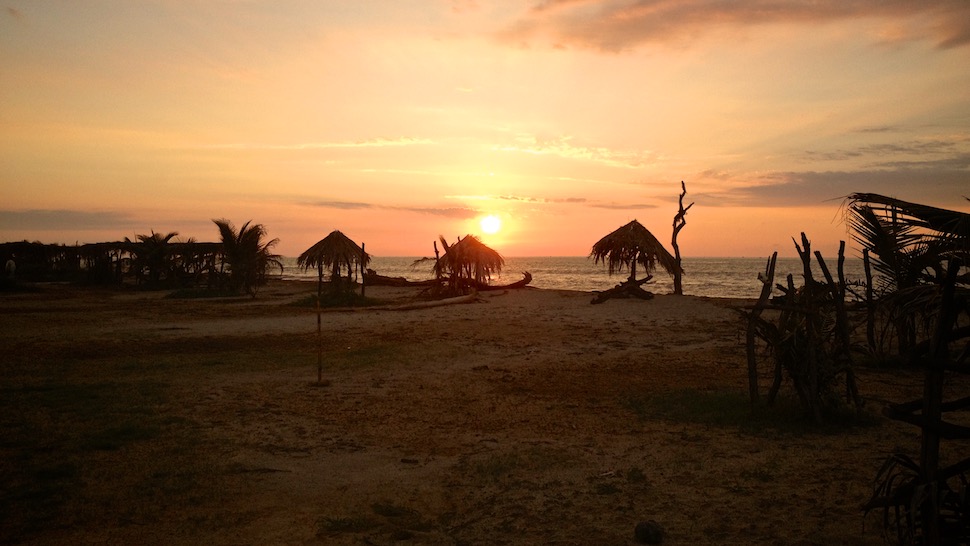
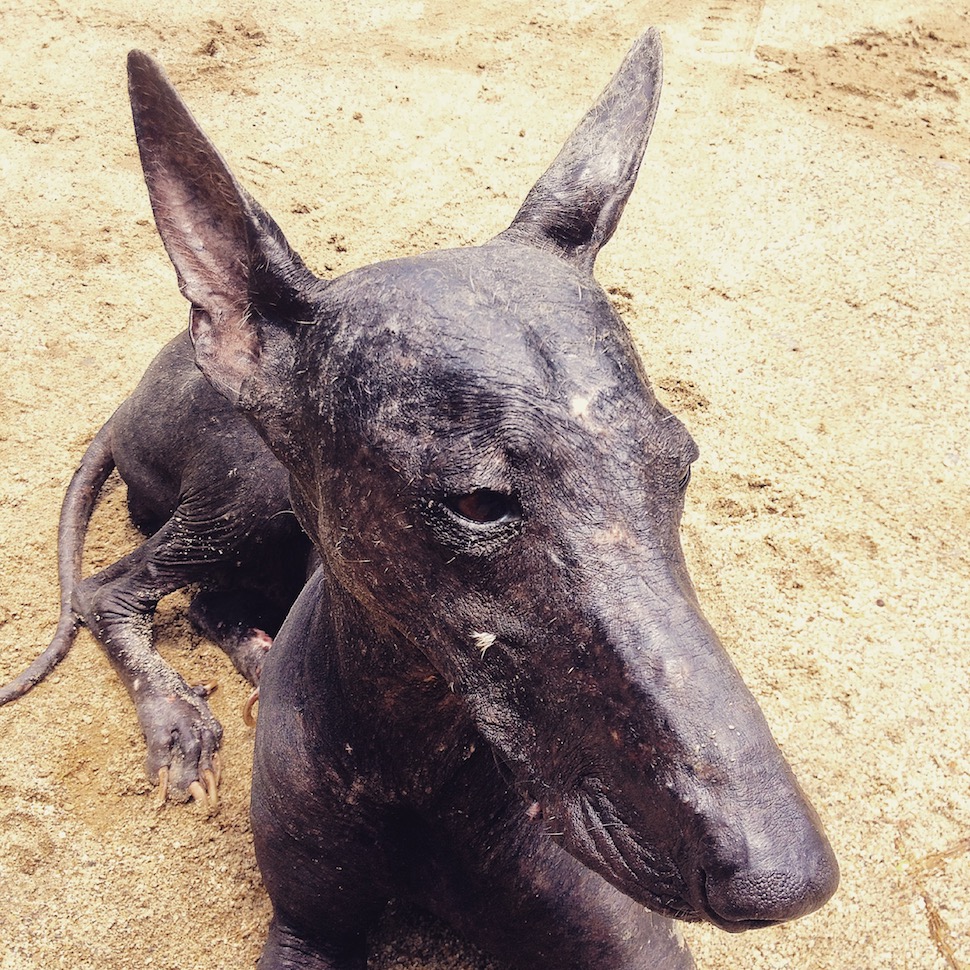
This is an Inca Orchid. An endemic Peruvian breed without any hair except a few thick ones on the head. It’s such a weird sensation to touch a dog without hair. It feels like touching a human or an elephant. They do look somewhat like a zombified version of a dog dropped in tar and dried under the sun, but they’re very sensual and well behaved. We heard that the Inca’s used them to help people suffering from rheumatism due to their slightly higher body temperature.
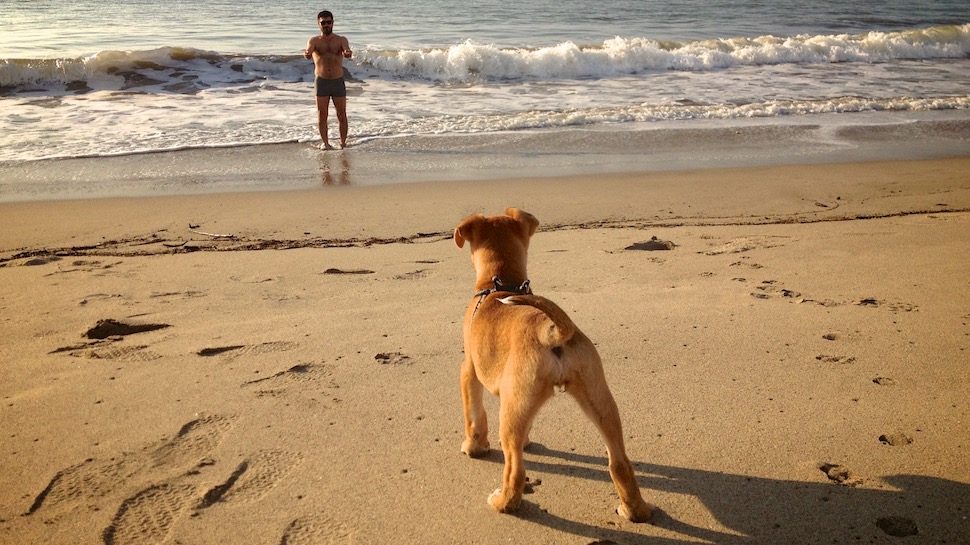
As we were enjoying the beach, we realized that this was the first time Tara saw such a big body of water. It wasn’t easy to convince her to jump in. She’s a bit intimidated by the waves.
Northern coastline of Peru is an arid landscape. You find yourself in a large space where even time seems to slow down. Compared to mountains, the desert feels like the silence of geography. We needed it.
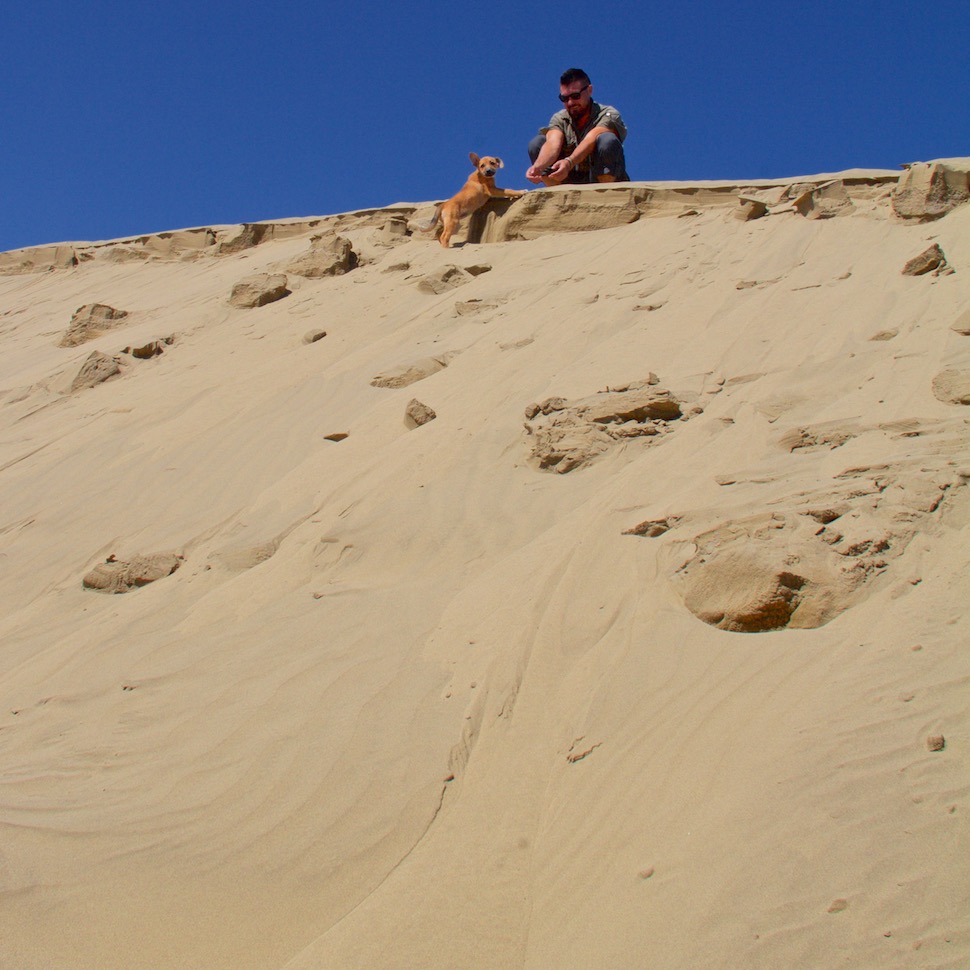
Even pee-breaks for Tara were unusual in this ocean of sand.
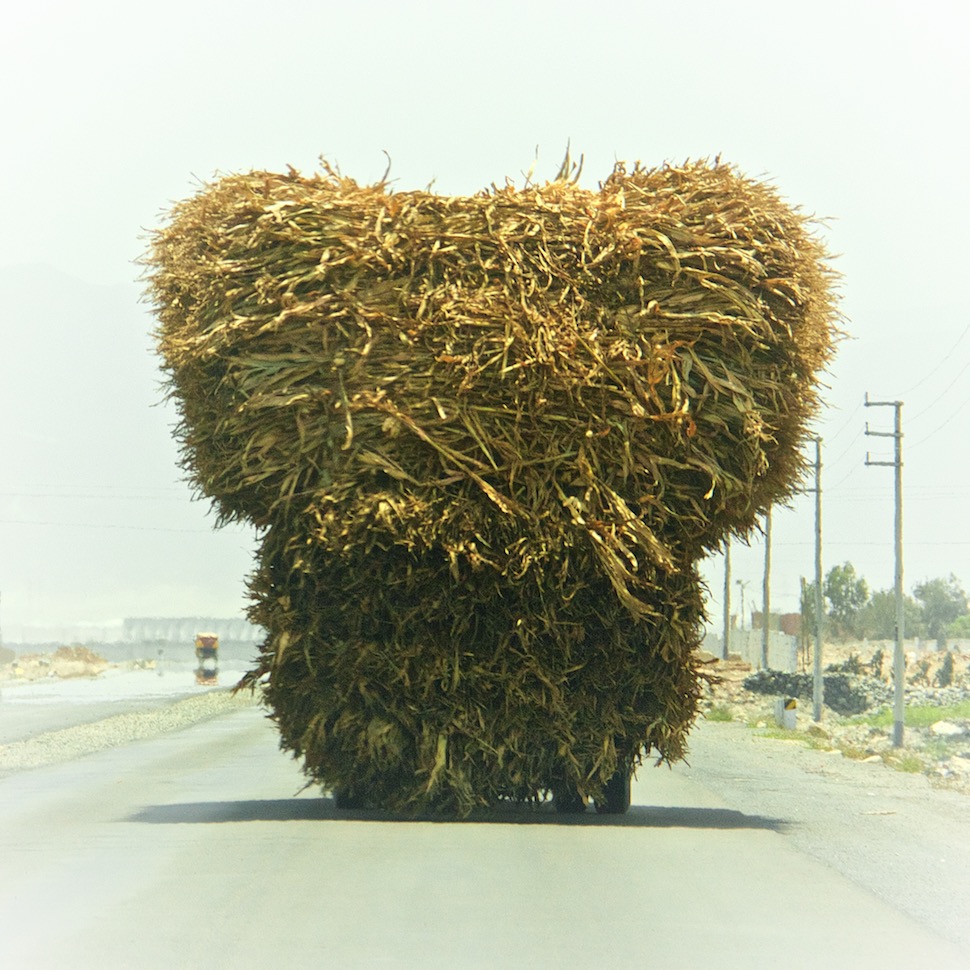
Somewhere behind this haystack was a truck we needed to overtake.
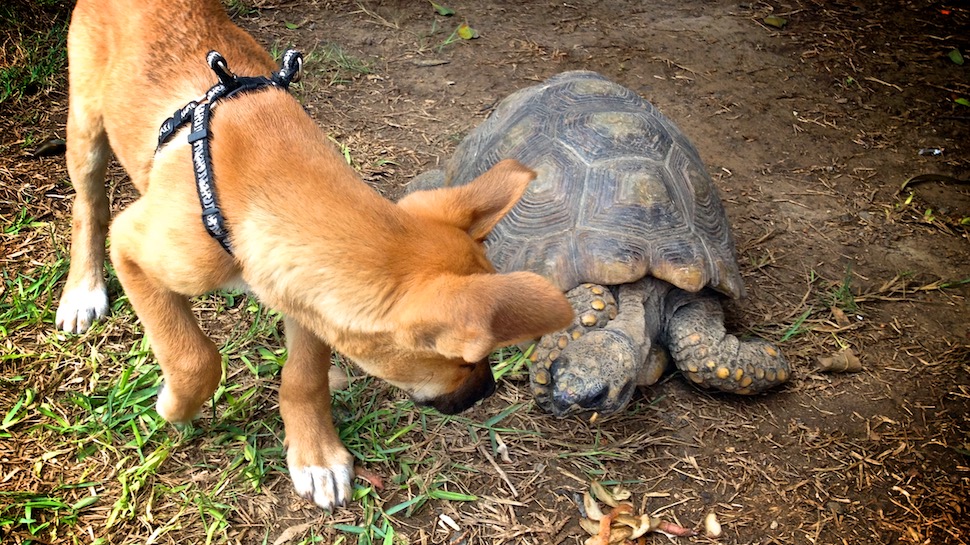
Tara found this dog to be very interesting. She tried to play with it to no avail.
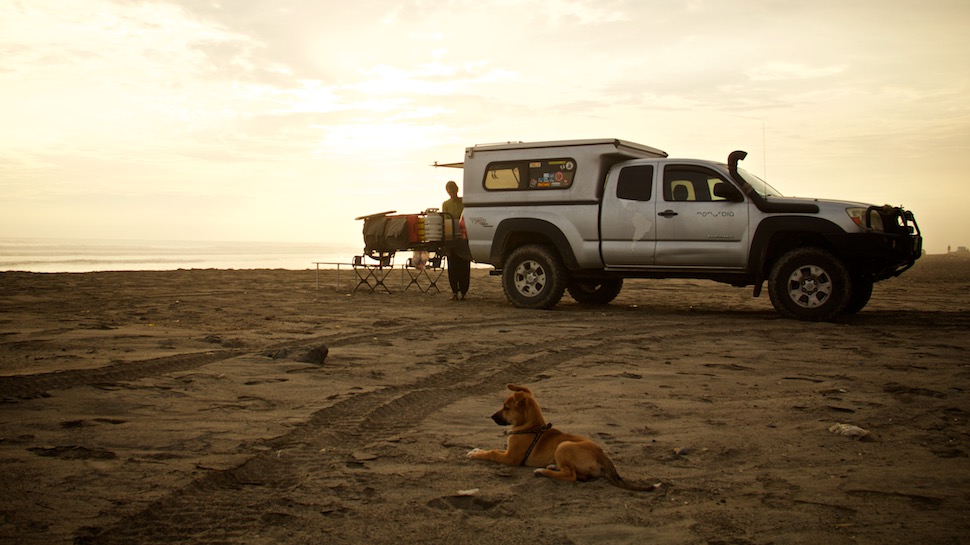
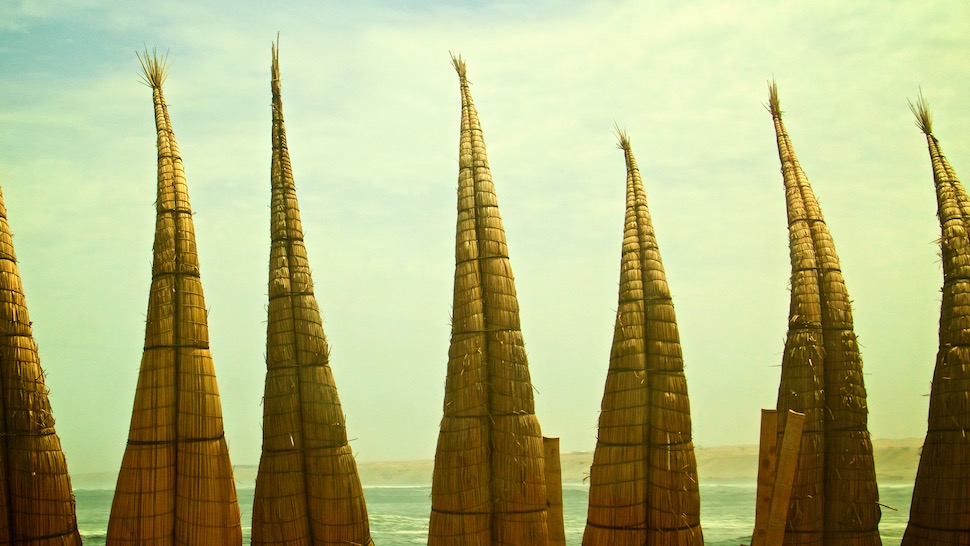
These reed boats are still being used by the fisherman in Huanchaco. The design is so simple, it probably remained unchanged for centuries.
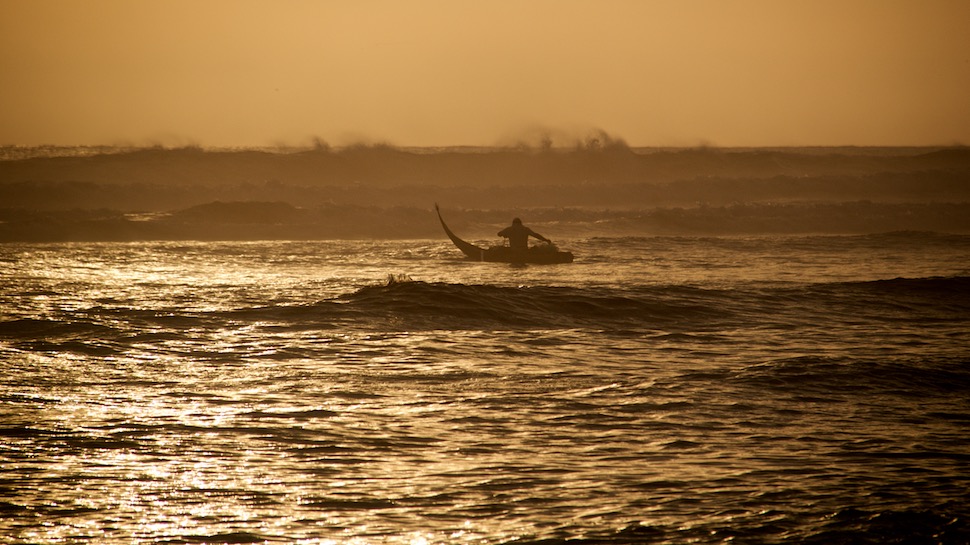
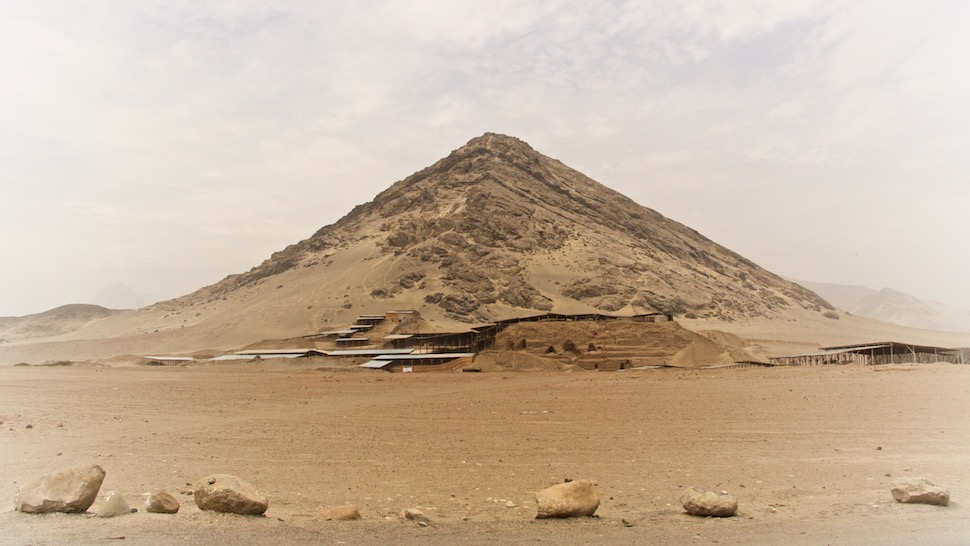
Huaca de la Luna, near Trujillo, sits beneath a pyramidal volcanic rock protruding from the desert. Together with the temple of the sun, these structures are among the oldest known artifacts of the Moche civilization dating almost 2000 years back. These guys were the rulers of the north coast before the Incas.
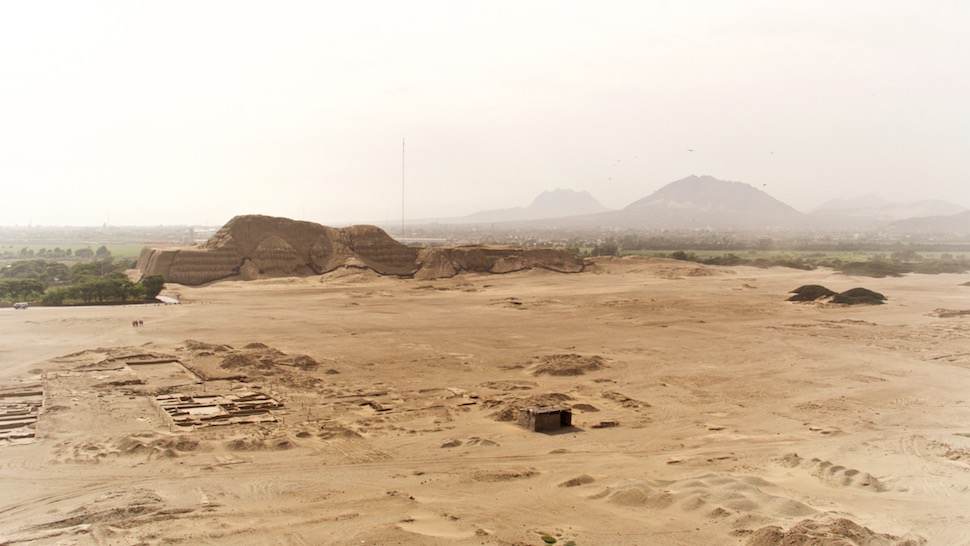
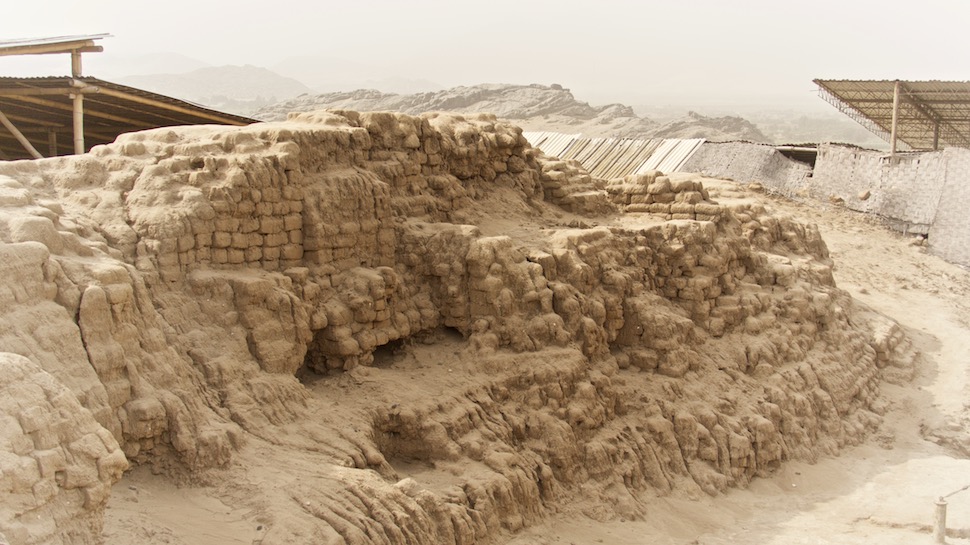
Because the structures were gradually enlarged by adding new layers over centuries, the Moche used hundreds of millions of adobe bricks to build them.
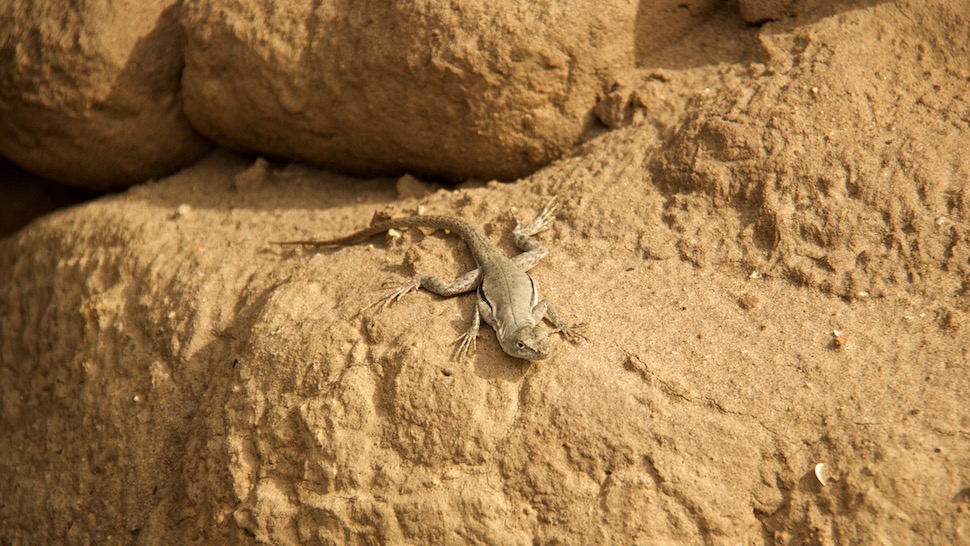
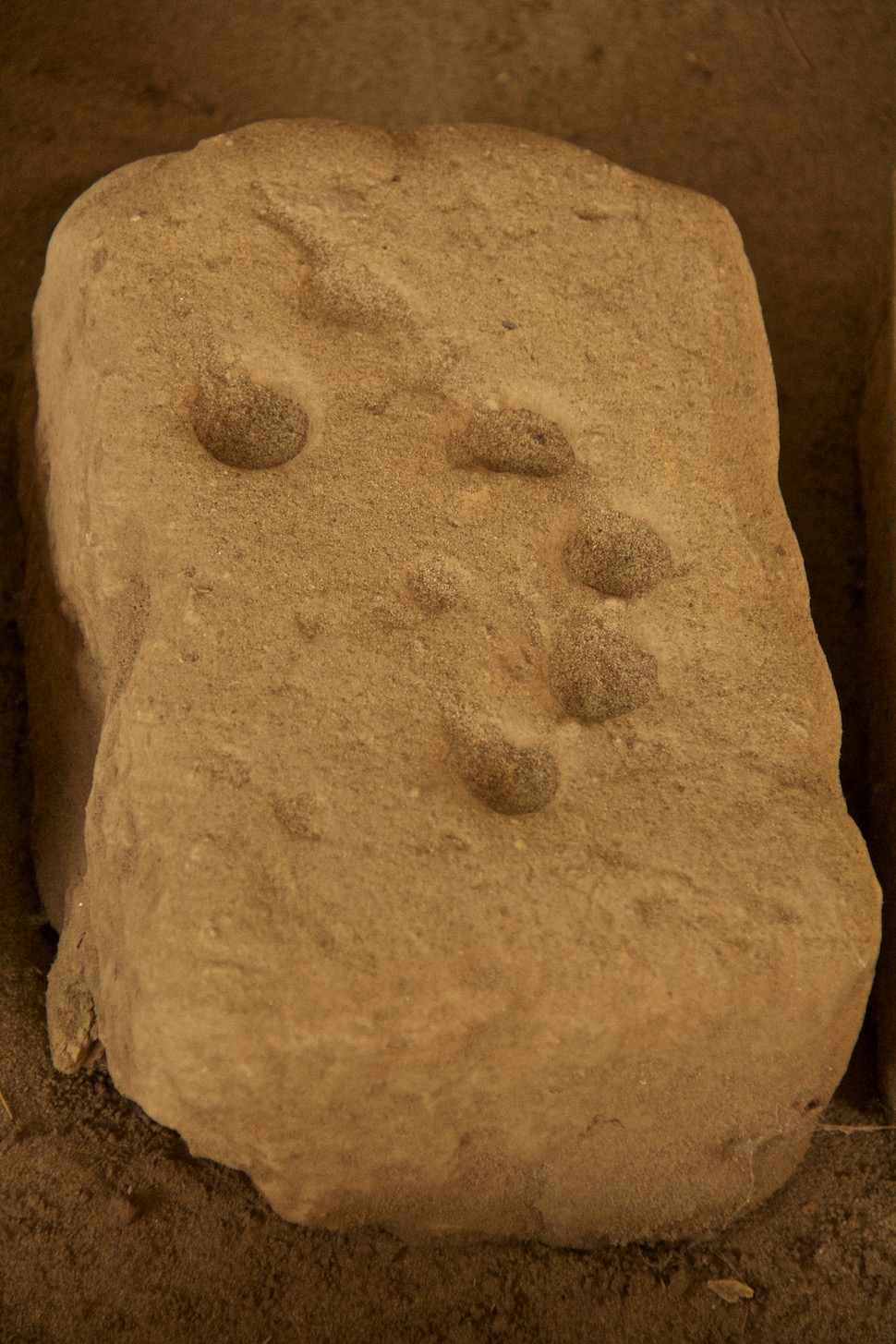
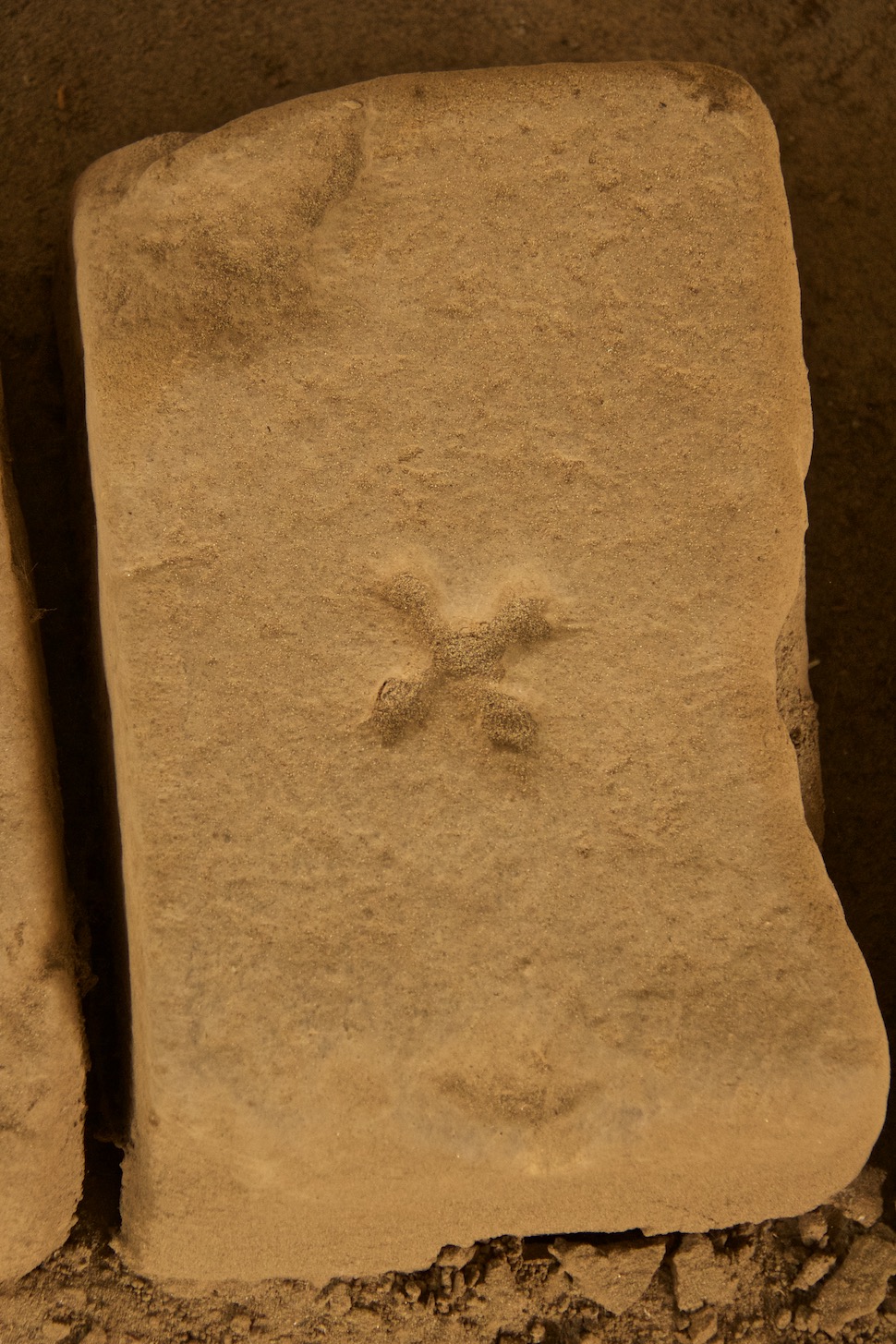
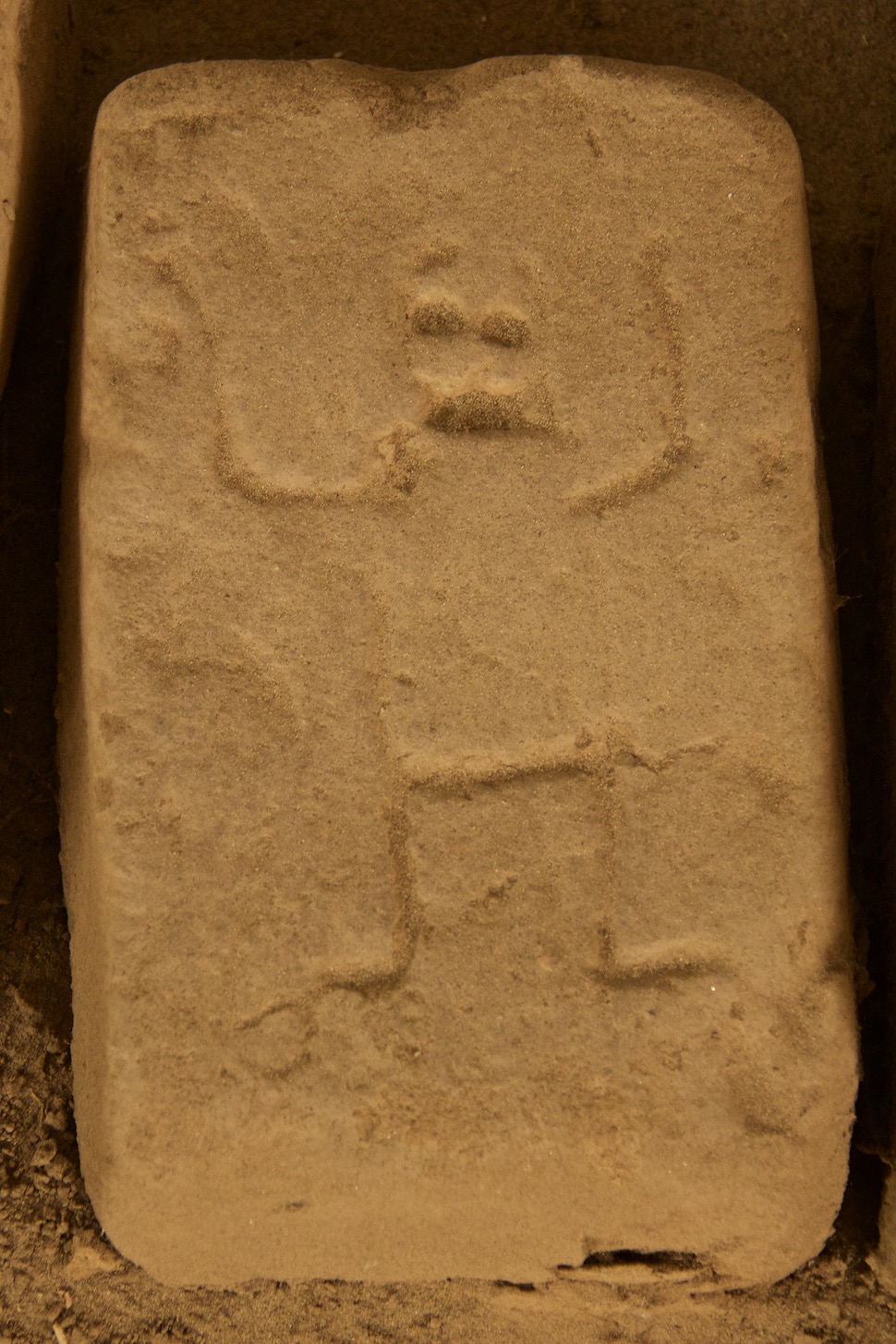
Some of the adobe bricks were provided by families. Call it a donation or a taxation, they somehow felt the need to ‘brand’ their products with icons similar to the logos and trademarks used today.
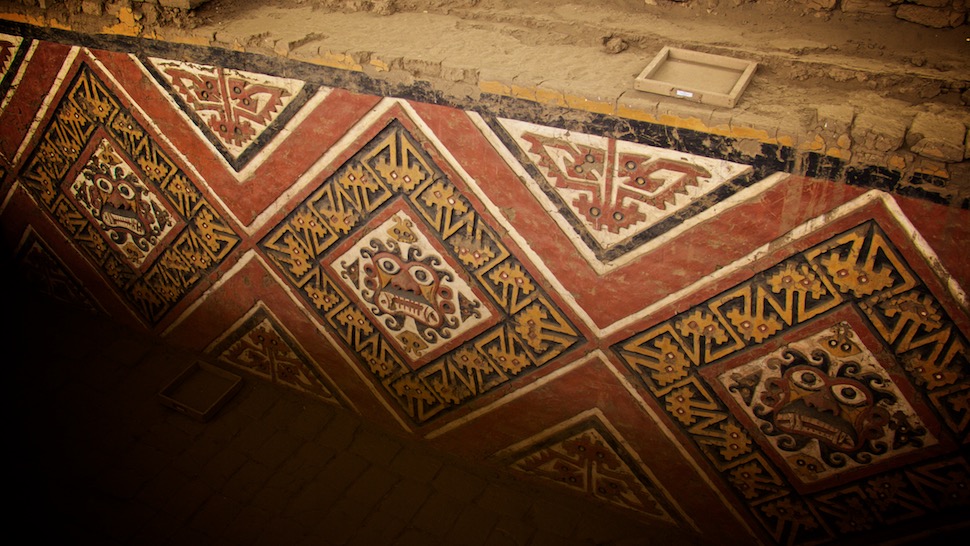
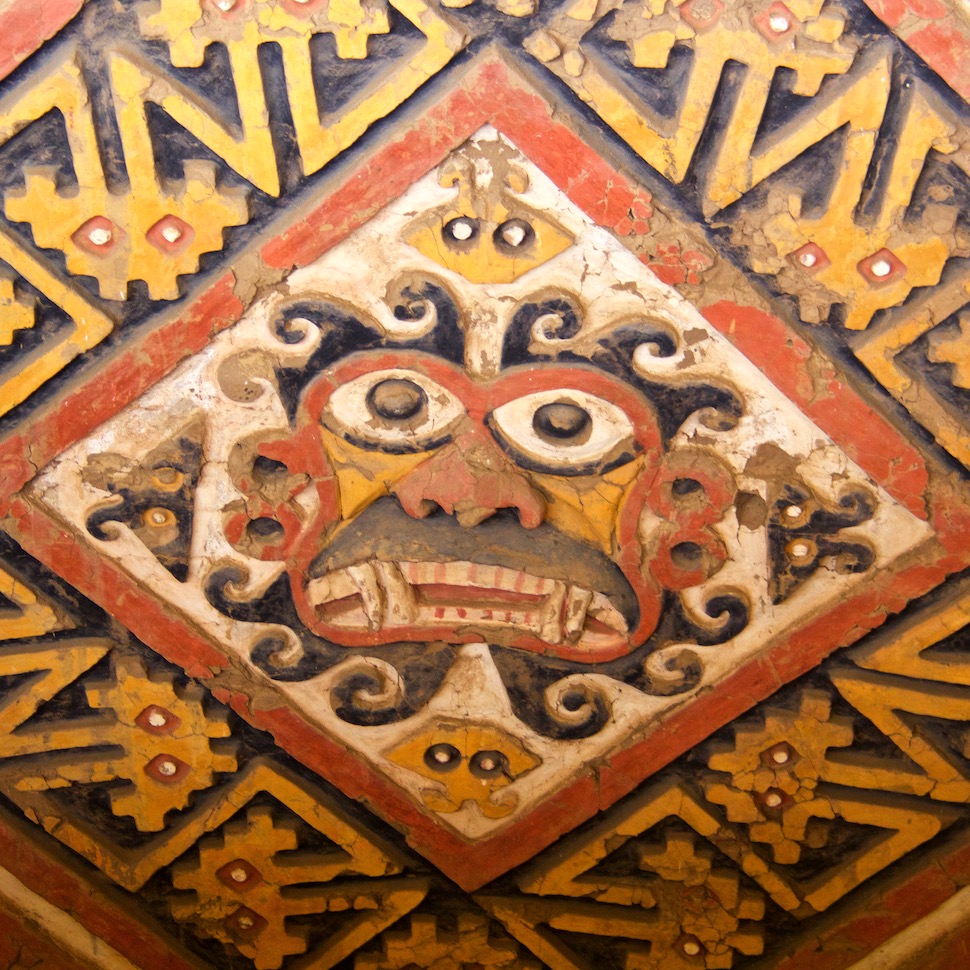
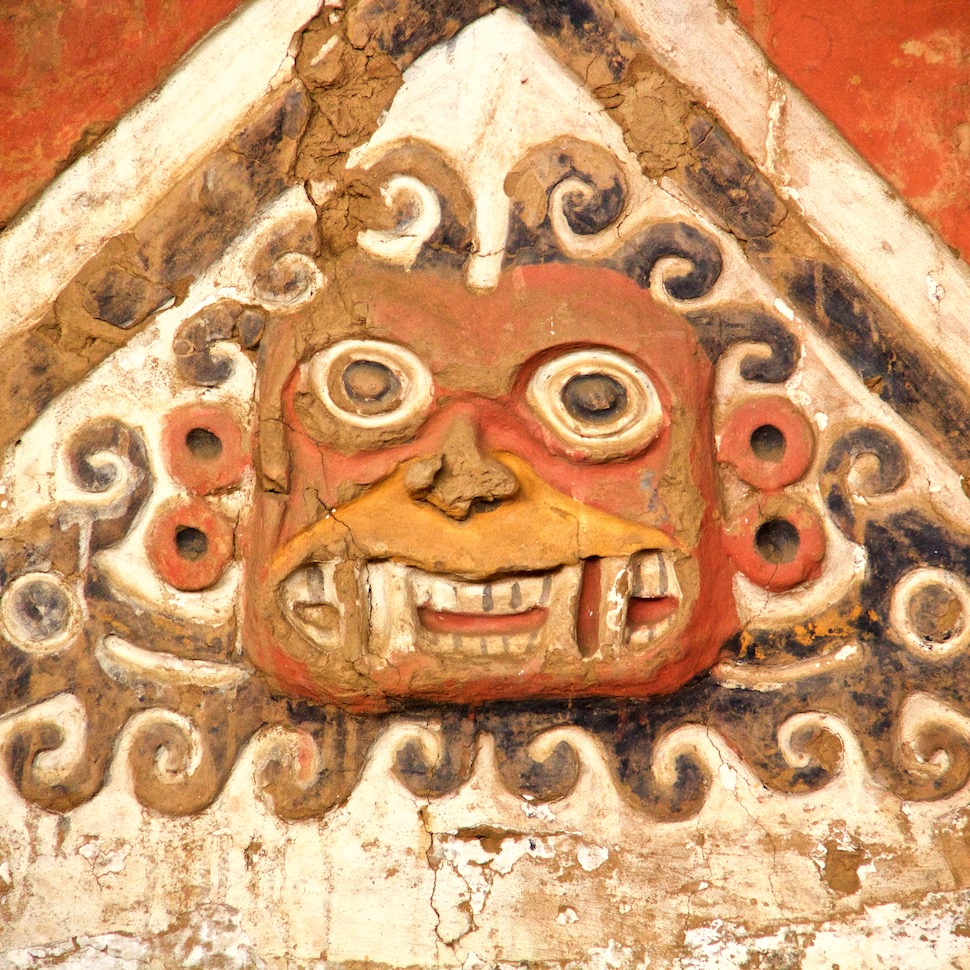
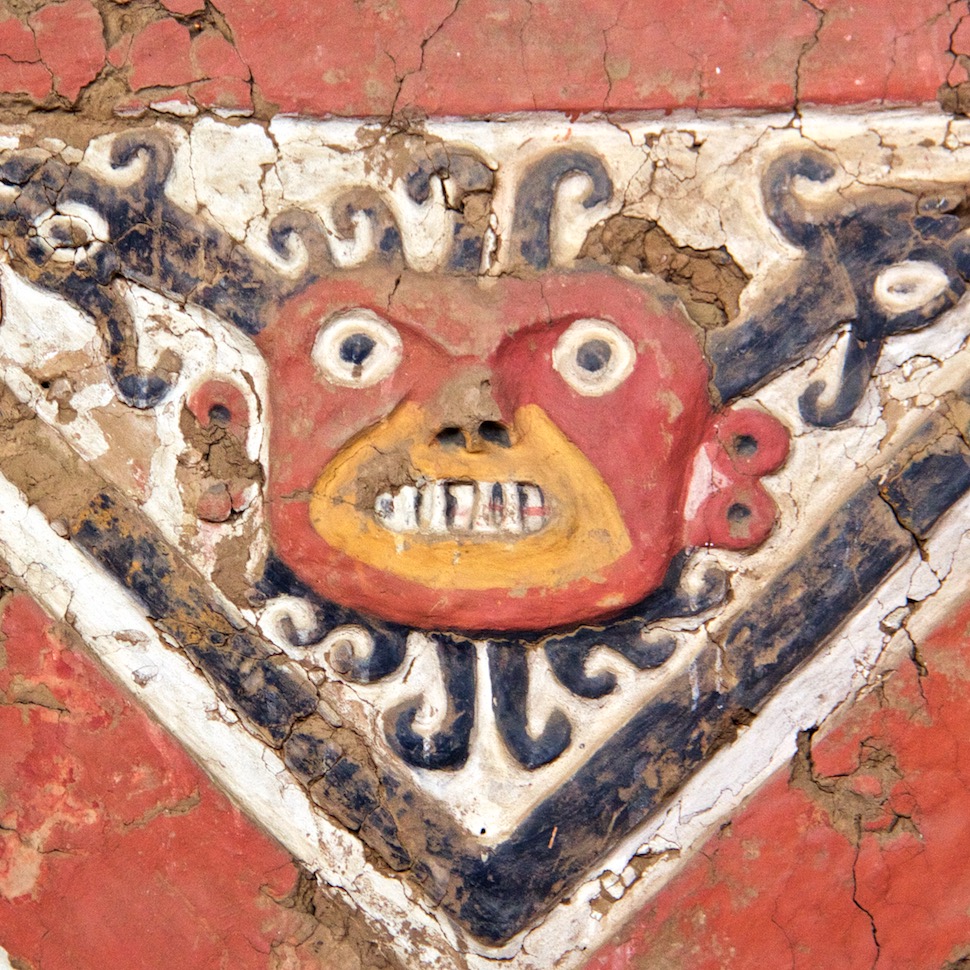
The face of this deity was repeatedly used all around the Huaca de la Luna. But the strange thing is, they never used a mold. Each one was sculpted and painted from memory and by different generations of artists. It’s interesting to see slight differences in interpretation. The colors you see in these photographs are actually the original paintwork which is probably more than a thousand years old. None of them were restored by archeologists. It’s crazy to see how long they lasted.
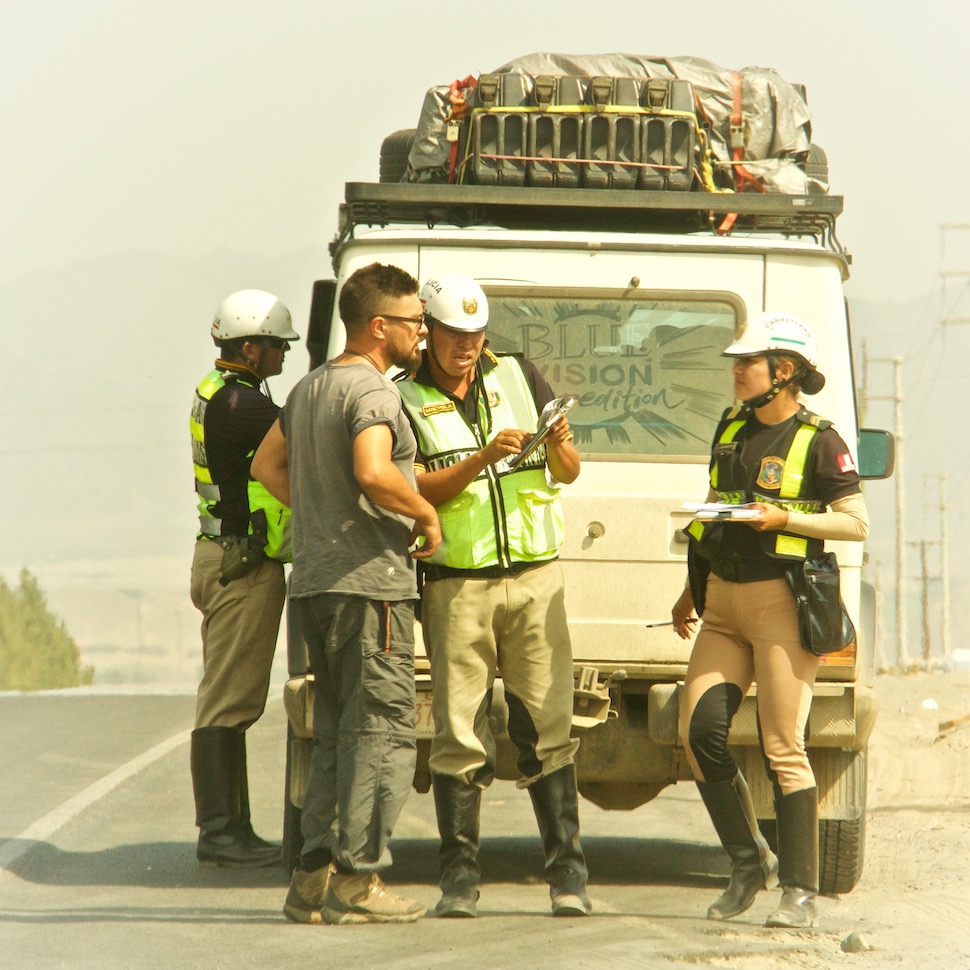

Police officers all around Latin America have been trying to talk to Erdem and tell him something. They usually show him a list with prices much like a restaurant menu. They seem to be annoyed at something. Probably the heat or the road conditions. He hasn’t yet figured out what they want. Maybe next time…
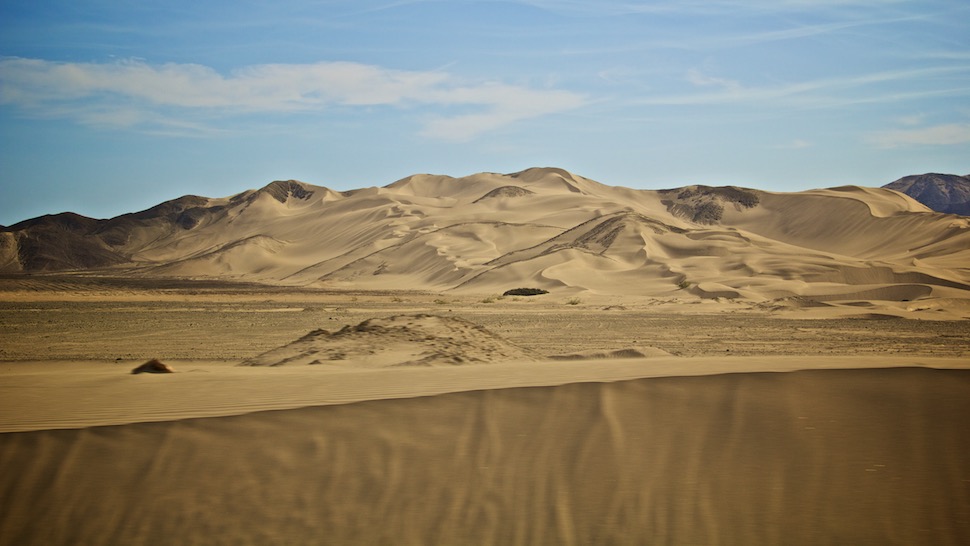
We left the coast and started moving inland towards Cordillera Blanca, one of the most impressive mountain ranges in the world. The geography gradually changed from sand dunes…
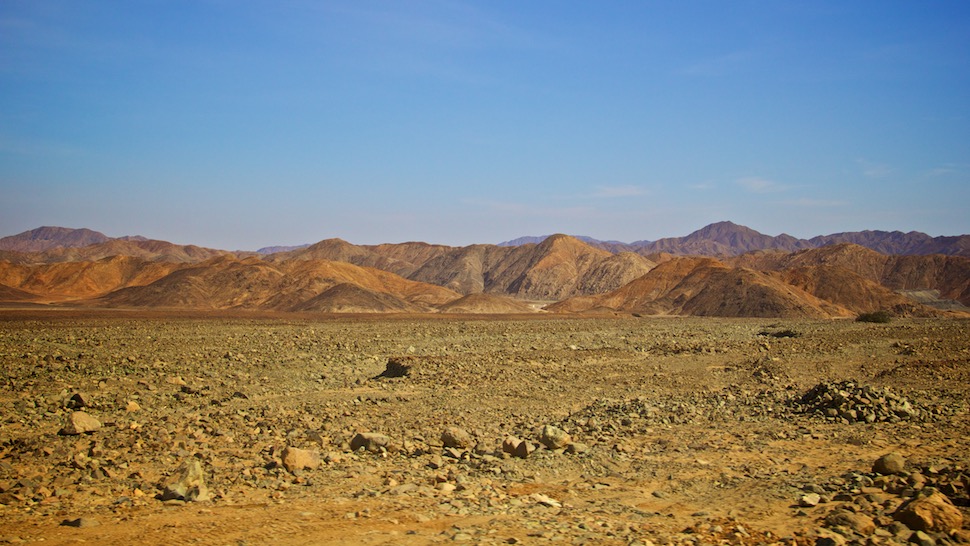
…to rocky desert hills…
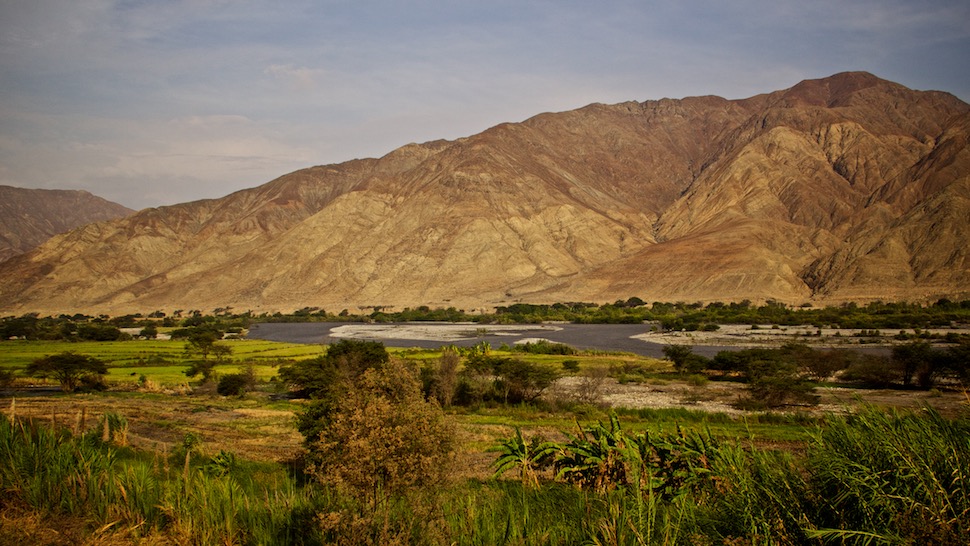
and into a river canyon.
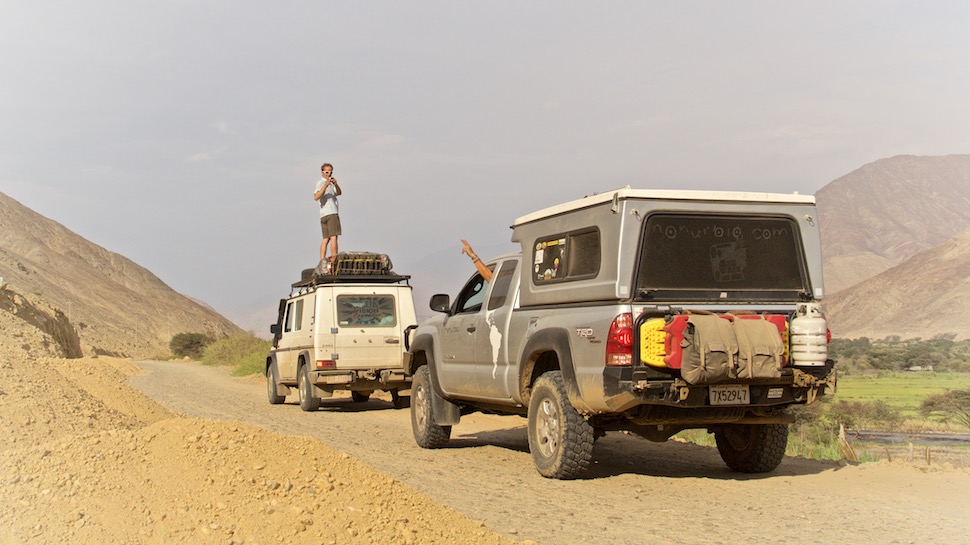
Ivan had joined us a few days ago in Huanchaco. We had decided to drive into the famous Cañon Del Pato together. We followed the river through the canyon as it got deeper and deeper.
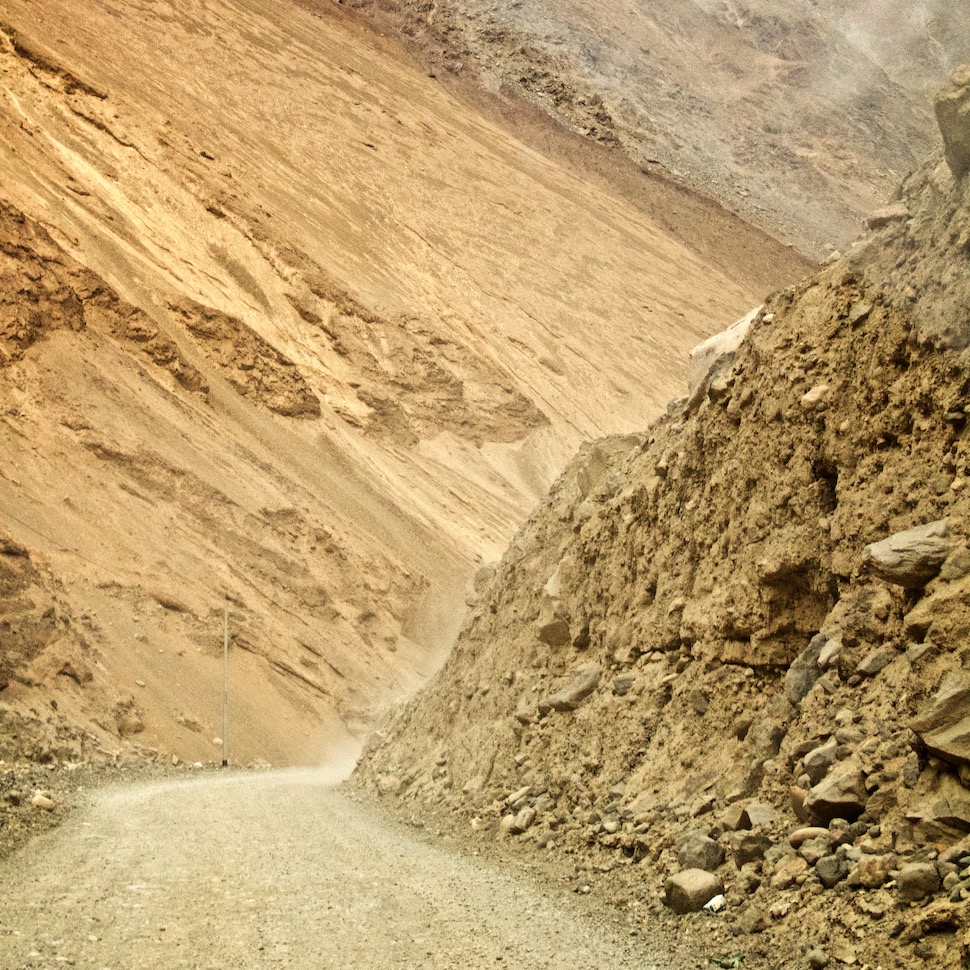
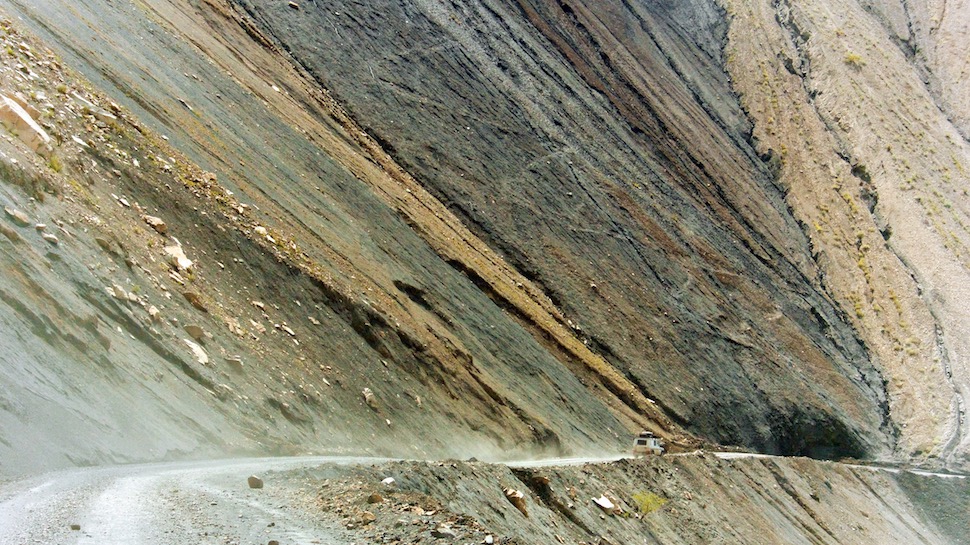
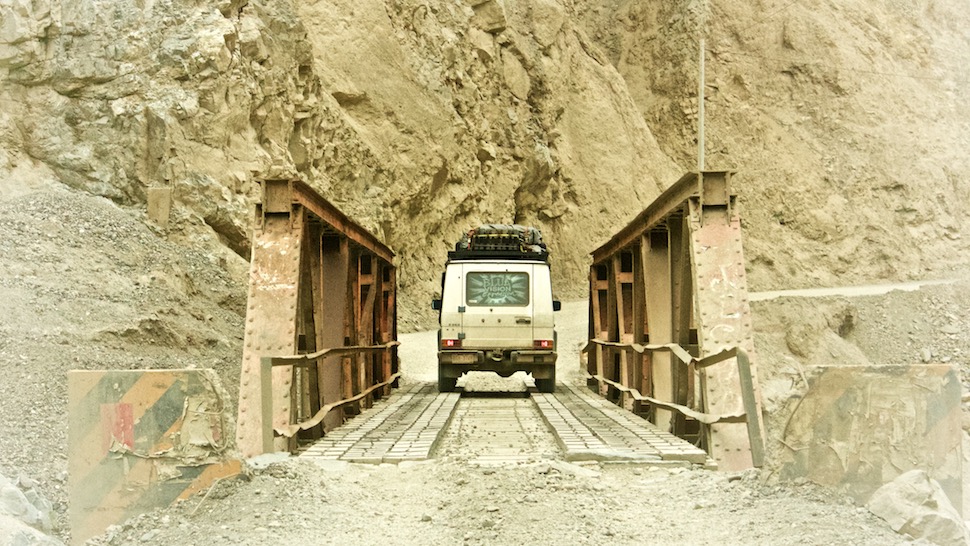
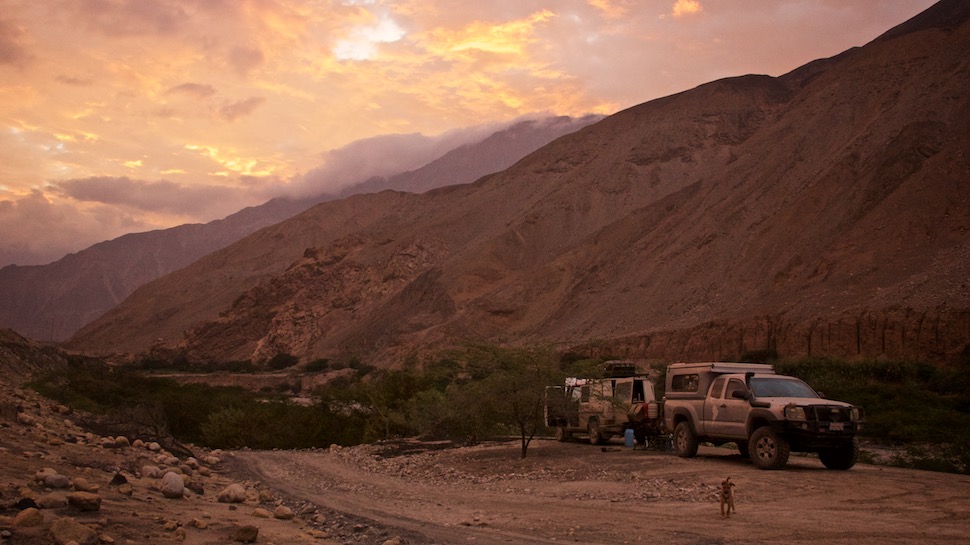
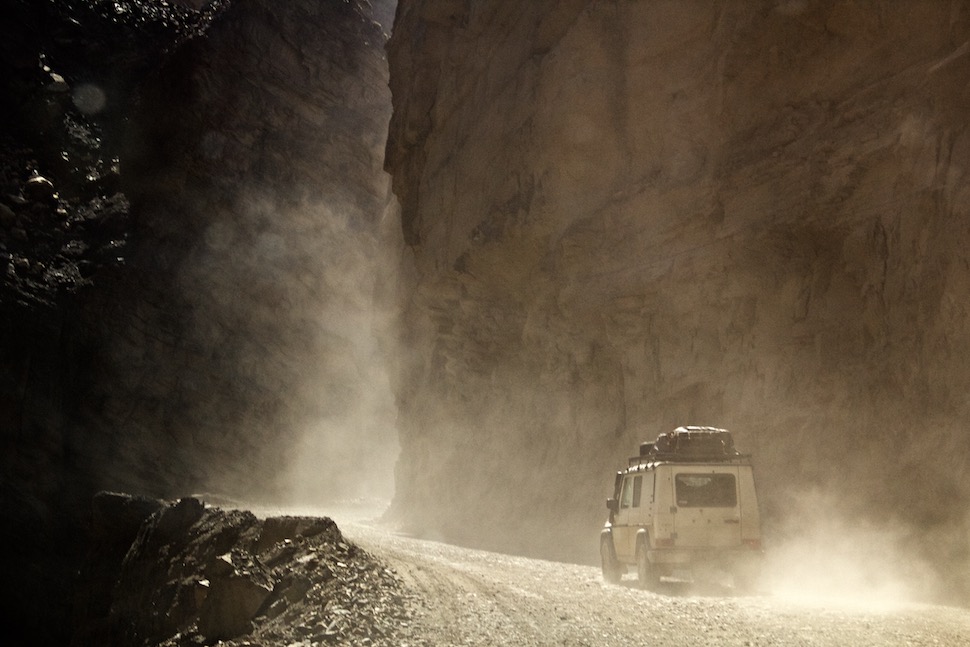
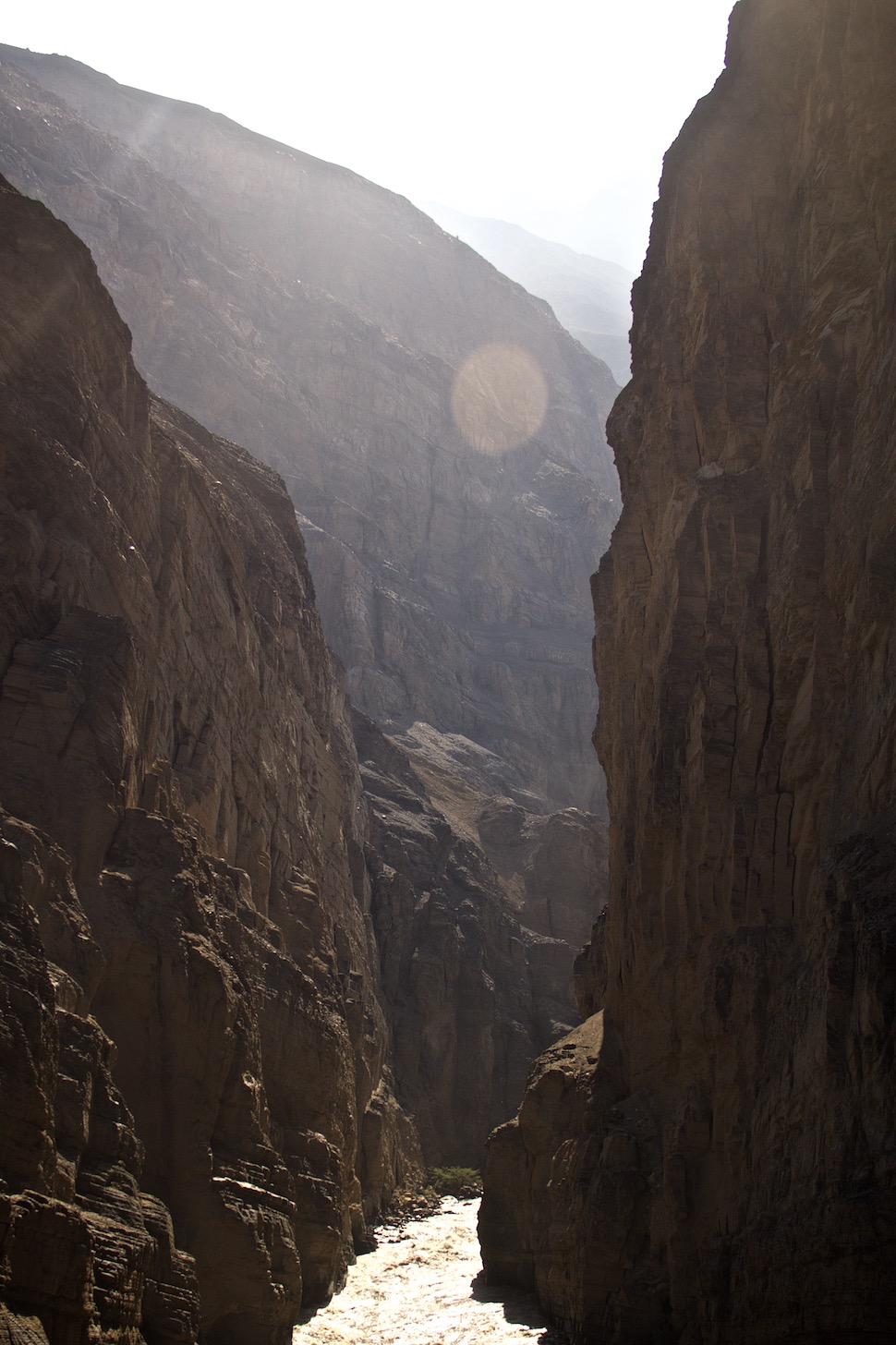
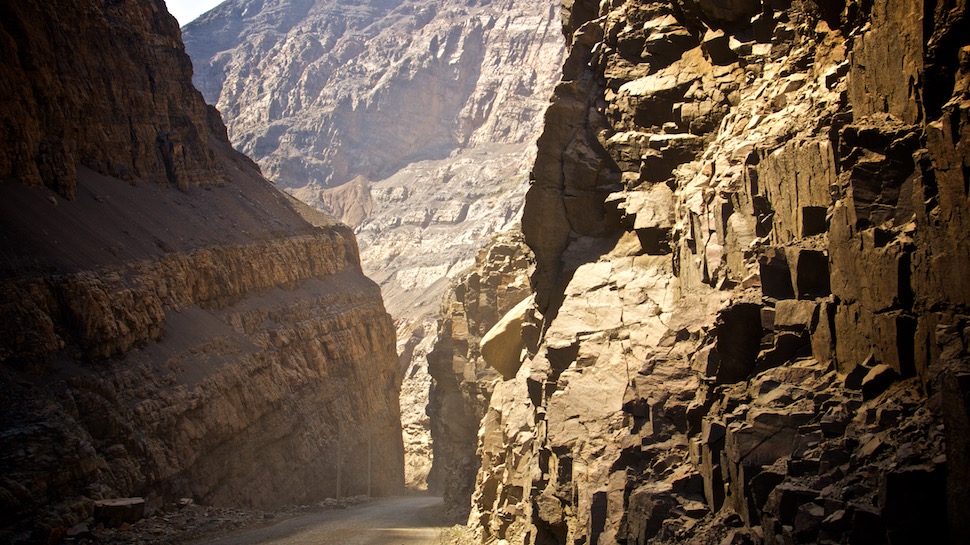
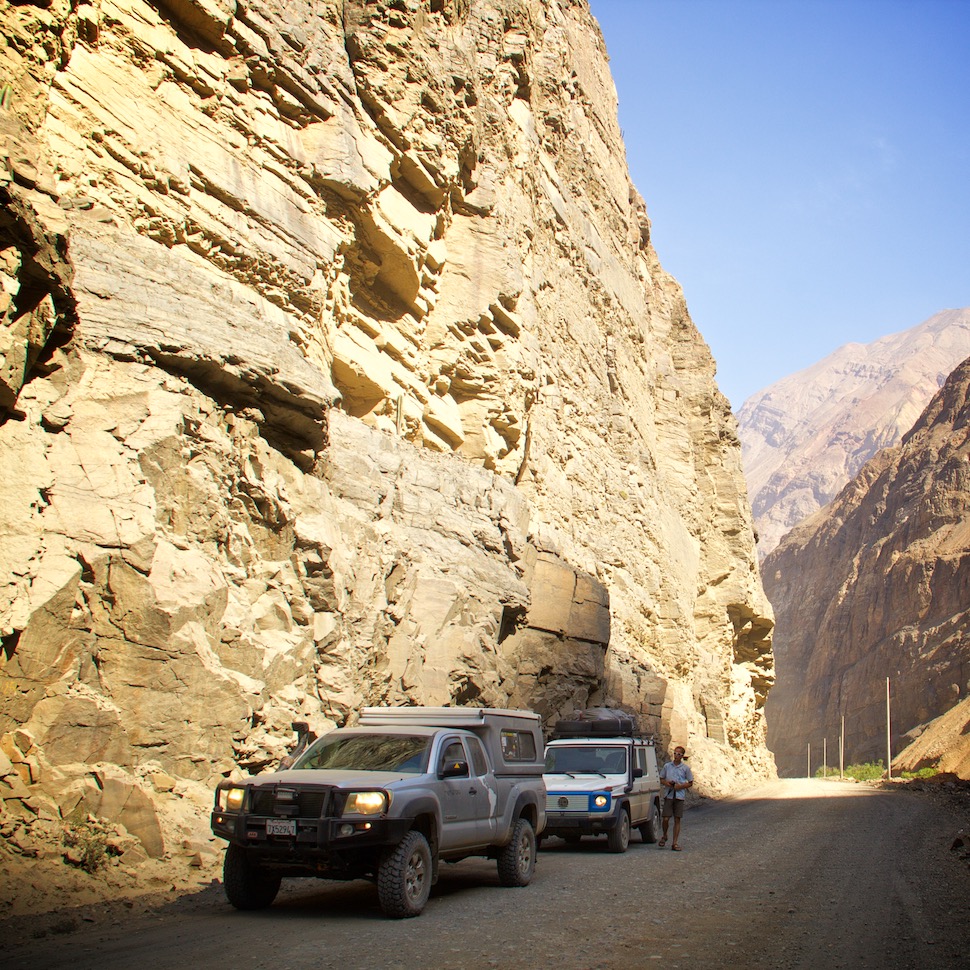
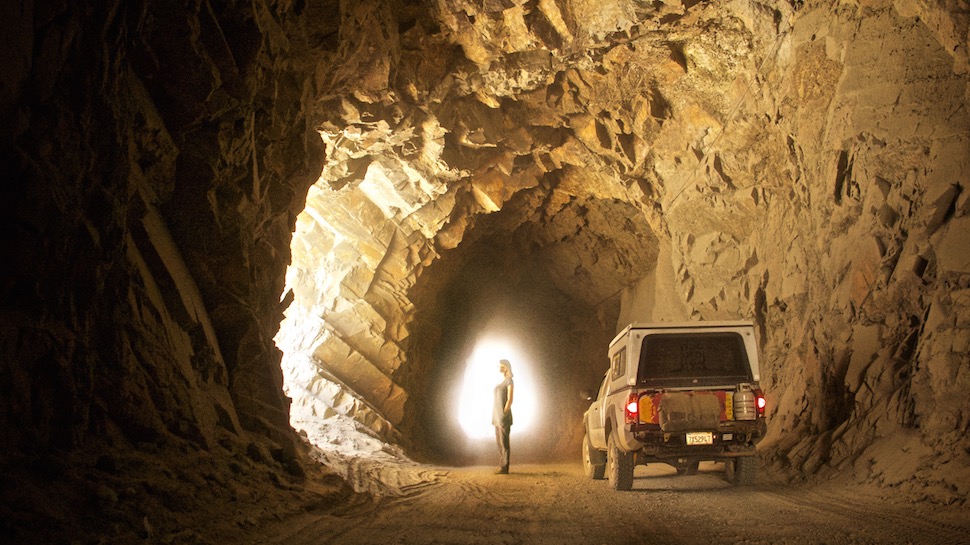
Numerous tunnels are dug through the rocky mountains to allow passage in the narrow canyon. Most of them have side openings to allow drainage and ease of maintenance. For travellers, they serve as giant windows overlooking the river below.
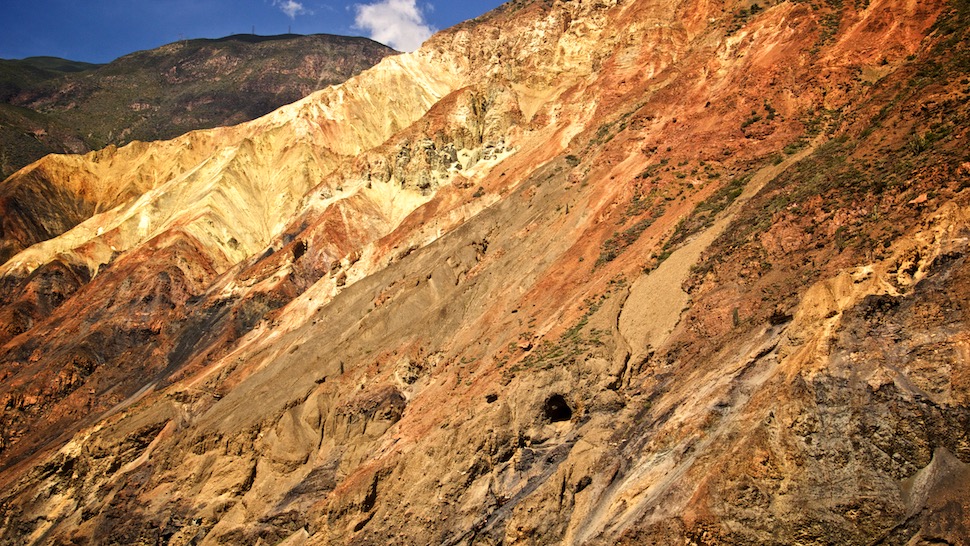
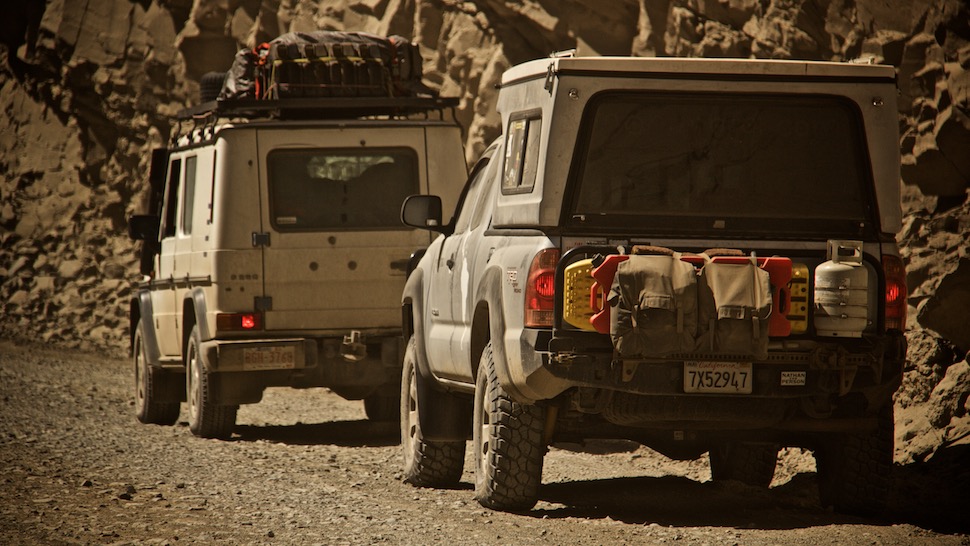
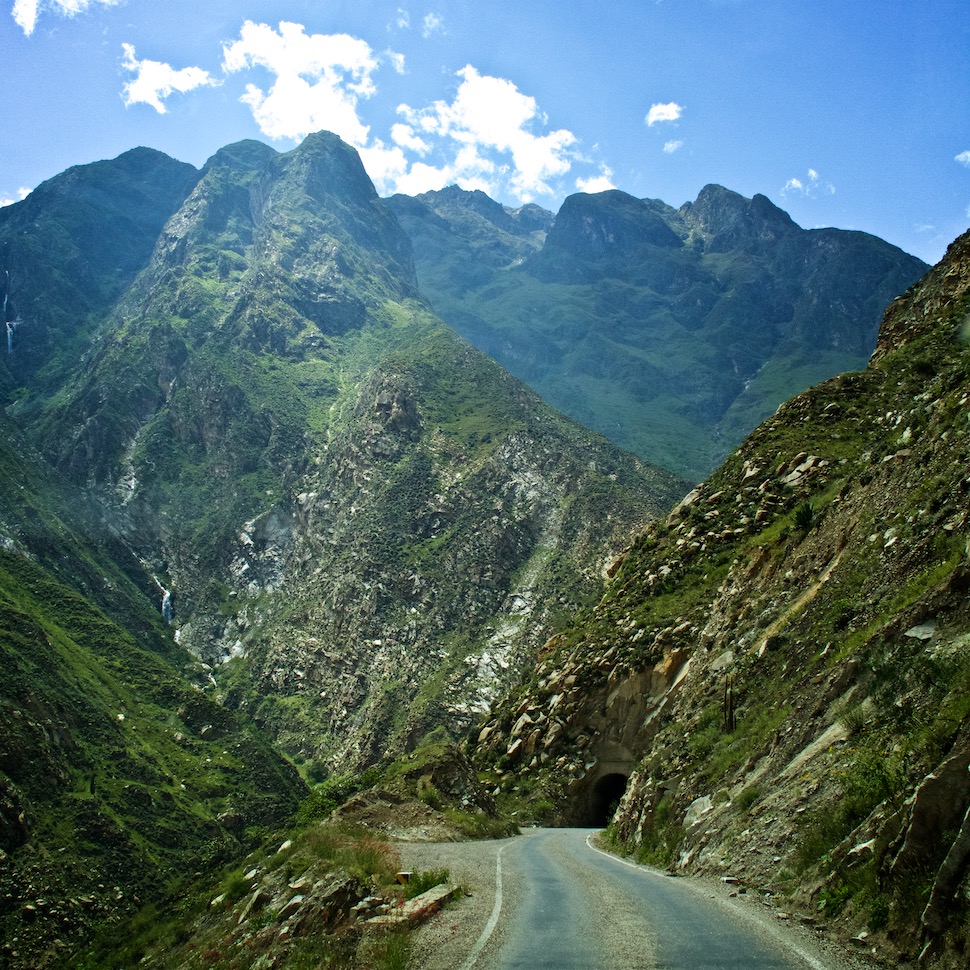
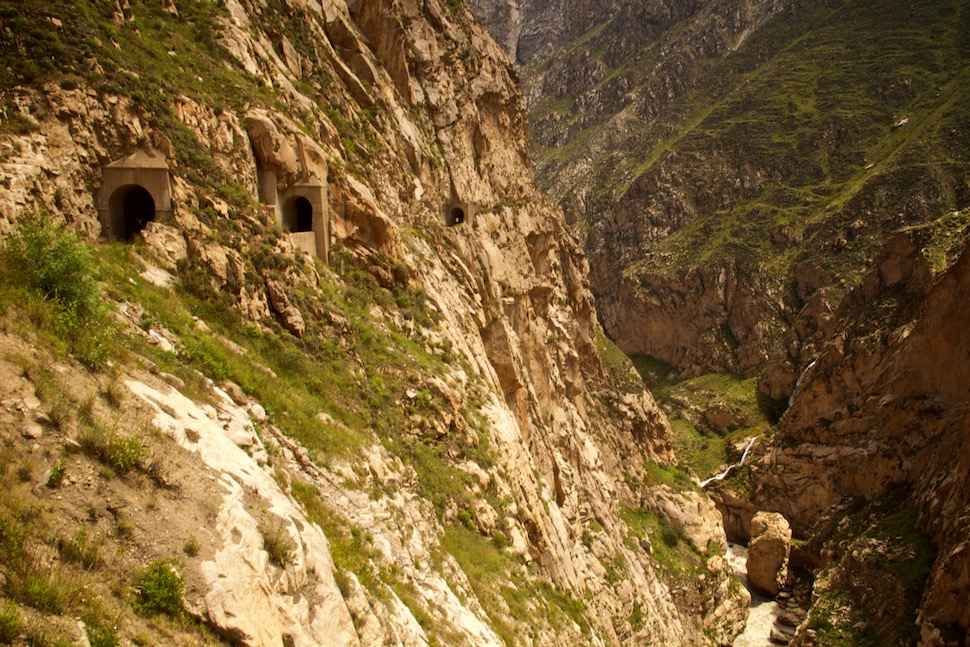
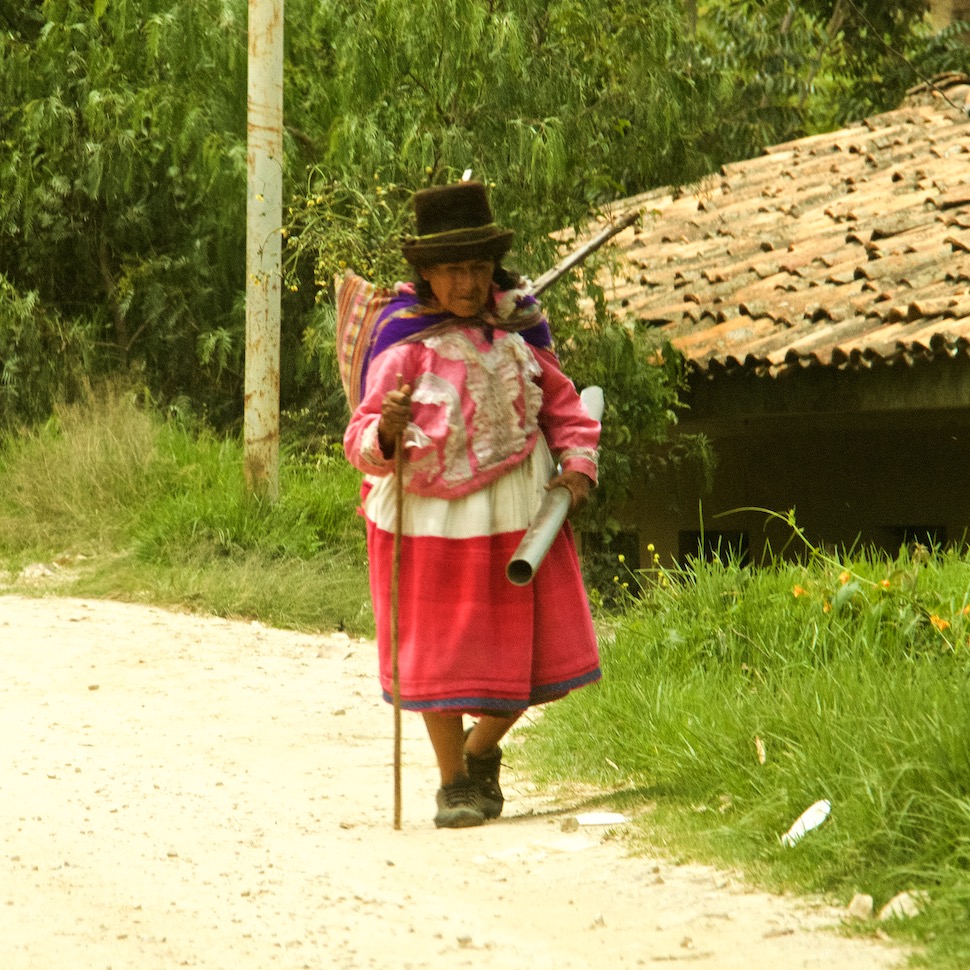
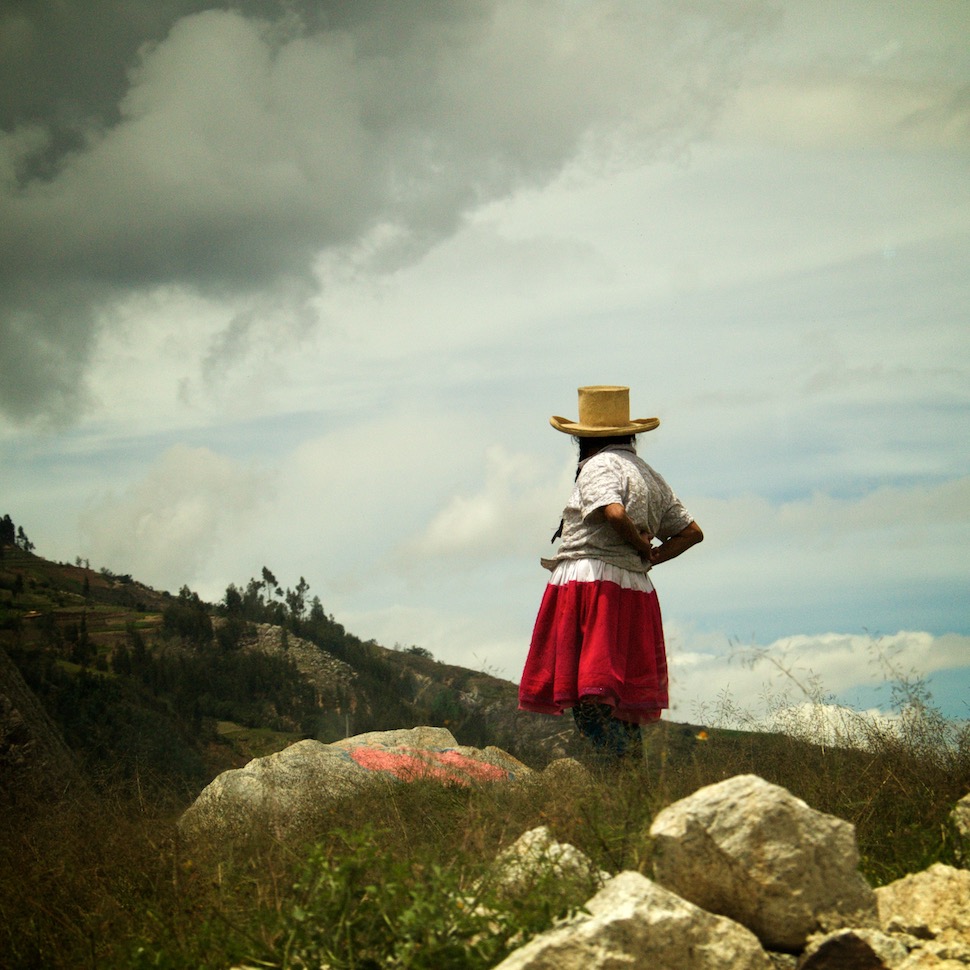
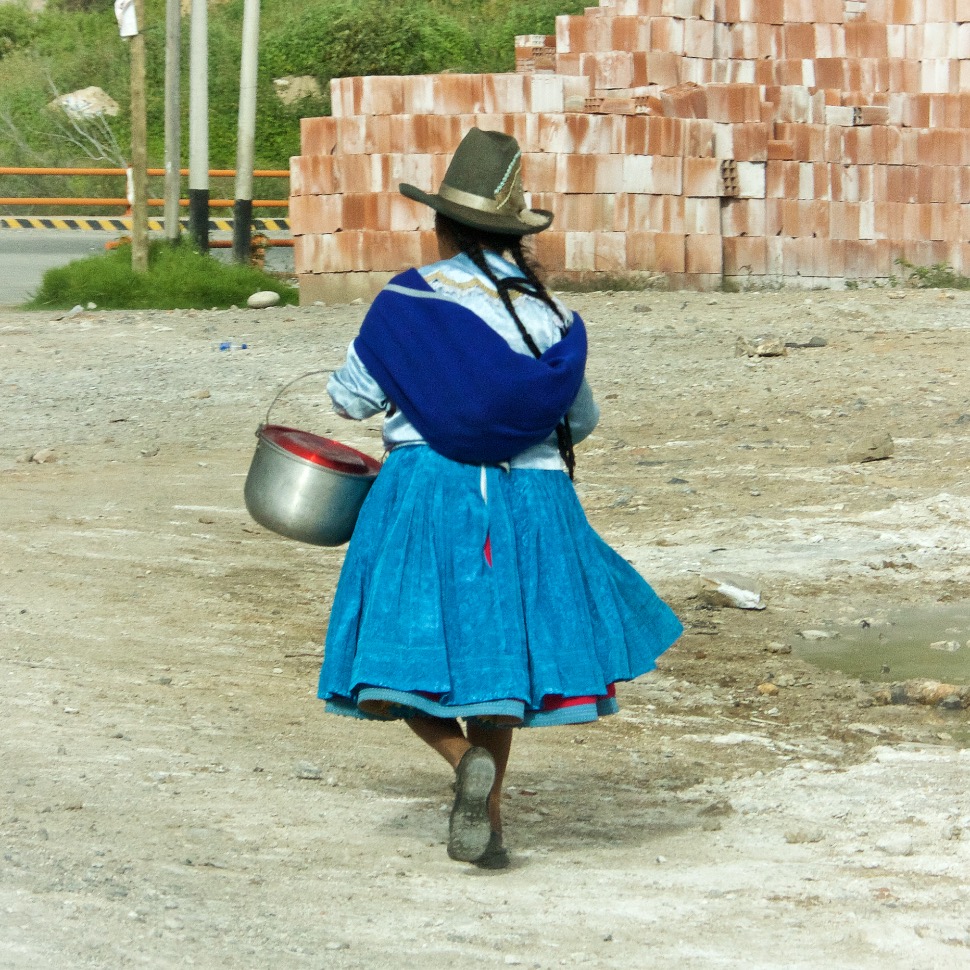
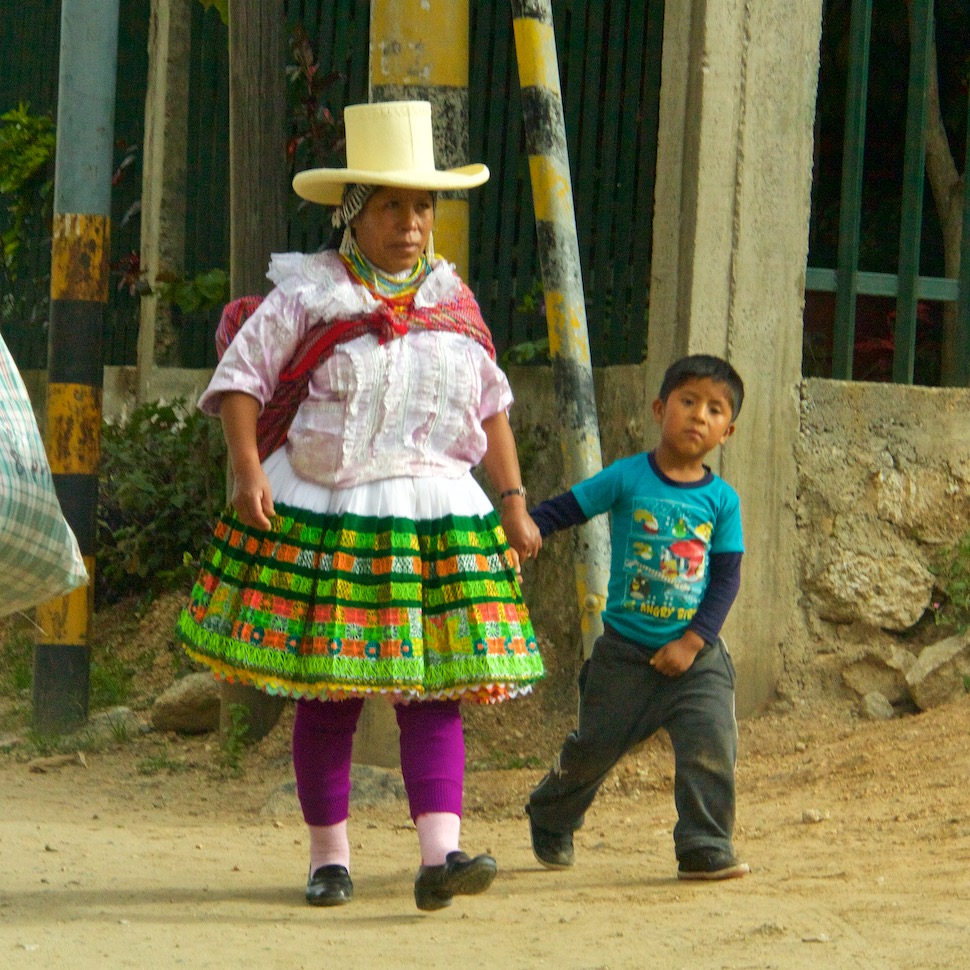
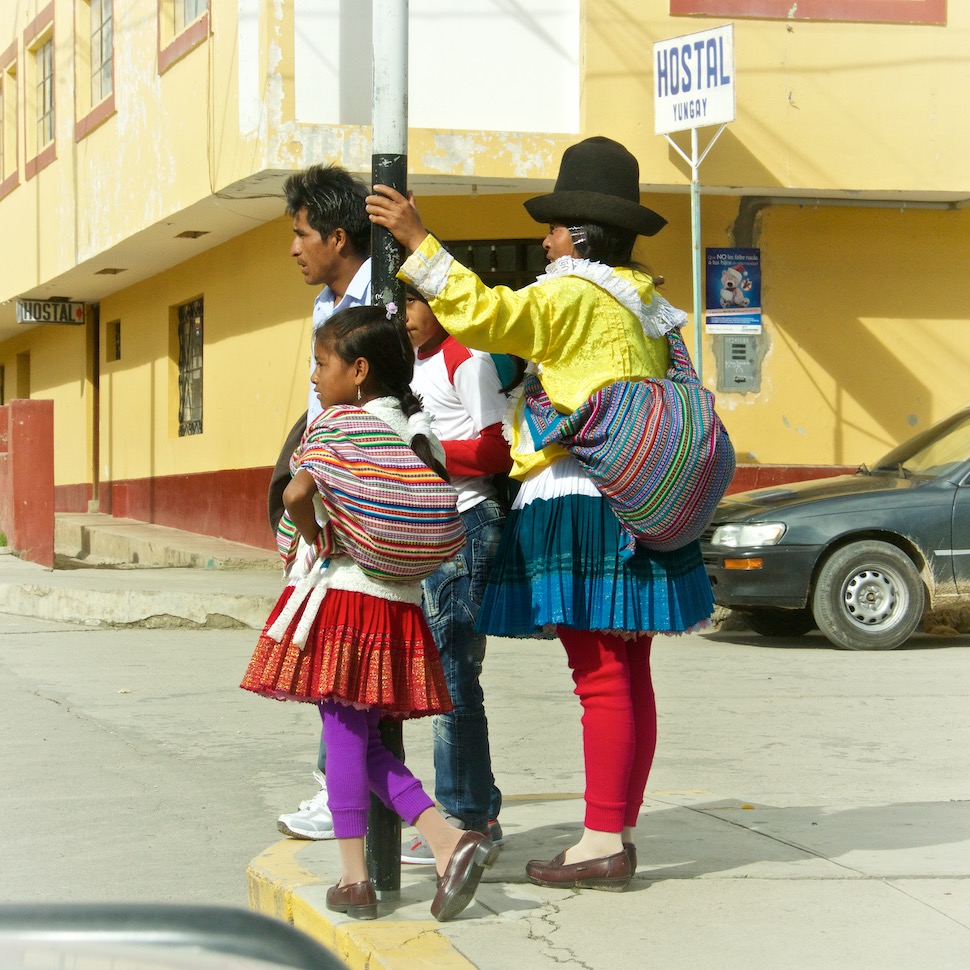
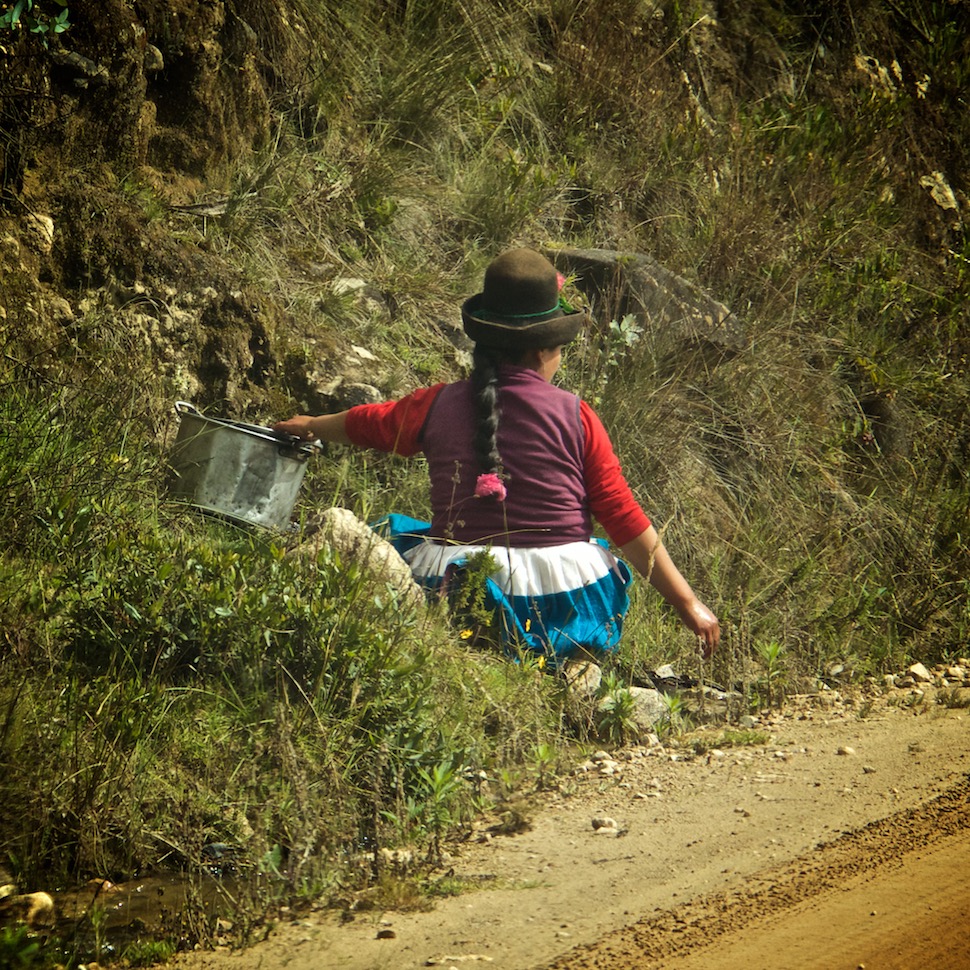
The women living in the villages surrounding the Cordillera Blanca wear some of the most interesting costumes we’ve seen so far. Their hats are taller as if to make up for their short stature. Tall hats definitely work better than high heels on this terrain.
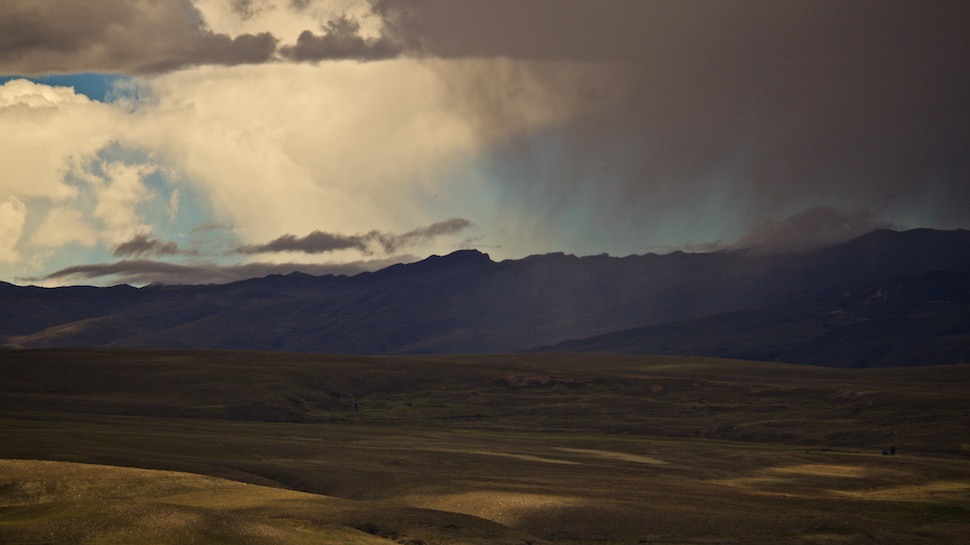
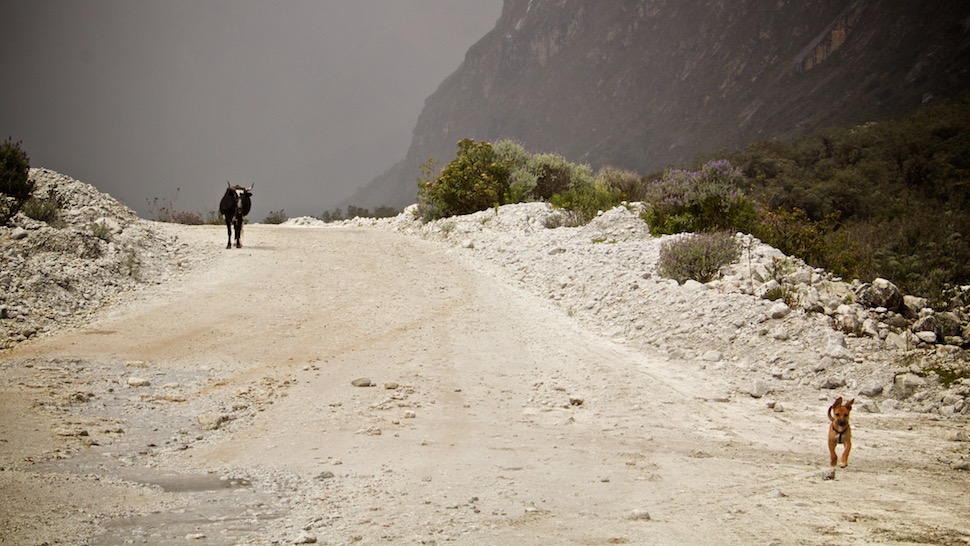
Tara didn’t like this big dog with horns. She barked from a safe distance and quickly ran back home.
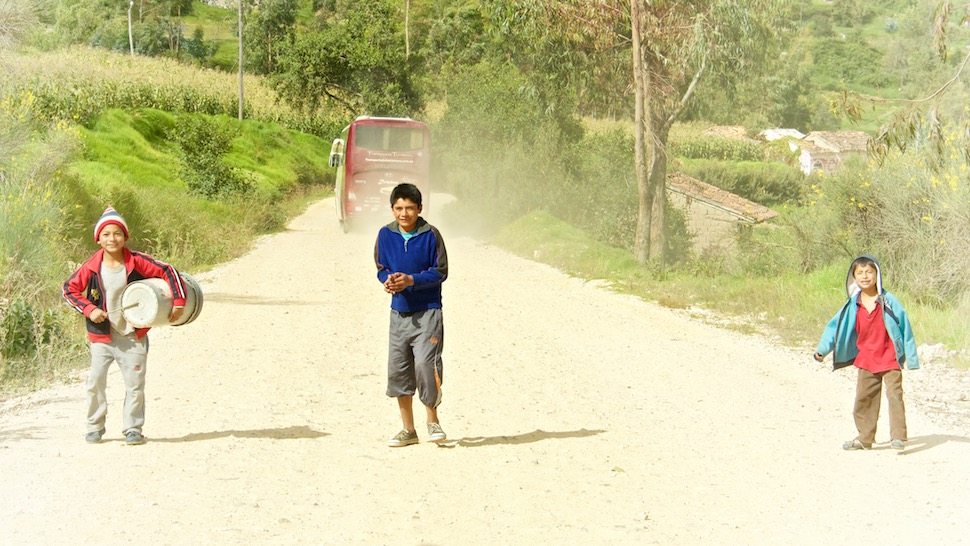
We’re used to roadblocks and candy tolls by now. The children in Chiapas, Guatemala and La Guajira have so far demonstrated some of the most ingenious ways of collecting coins or candy from cars passing by. But this one stood out for being the best dance performance.
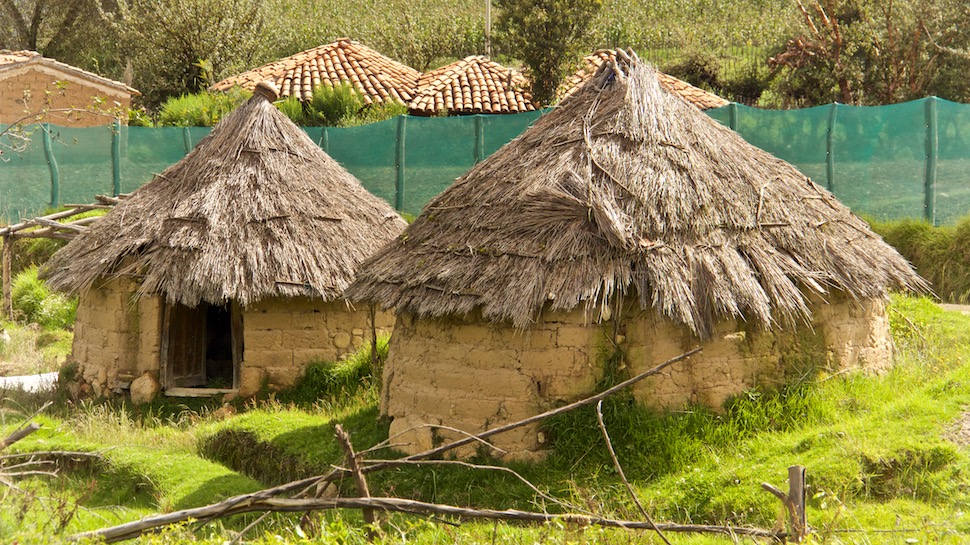
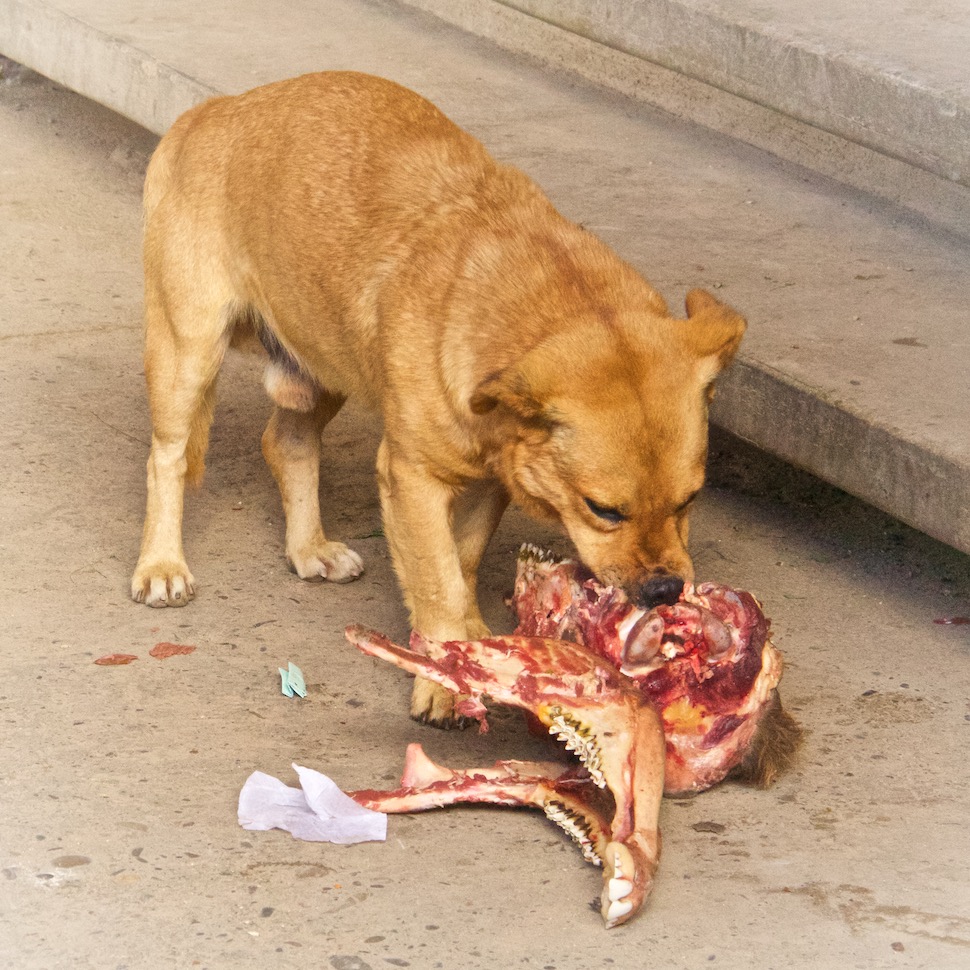
This dog was having a blast with the skull of what appeared to be a donkey or a horse right in front of the butcher we bought some meat from. We thought we got beef, but you never know…
Most animals at this altitude have unusual appearances like this funny furry pig.
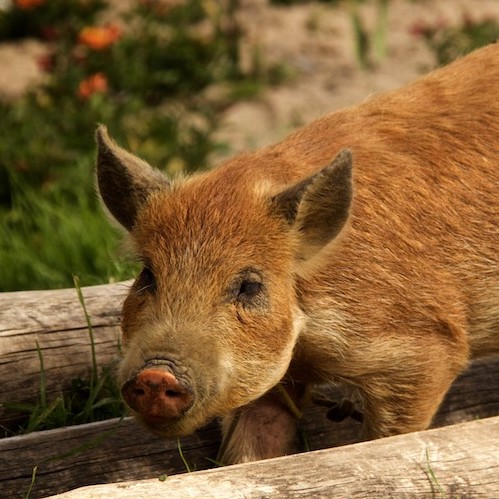
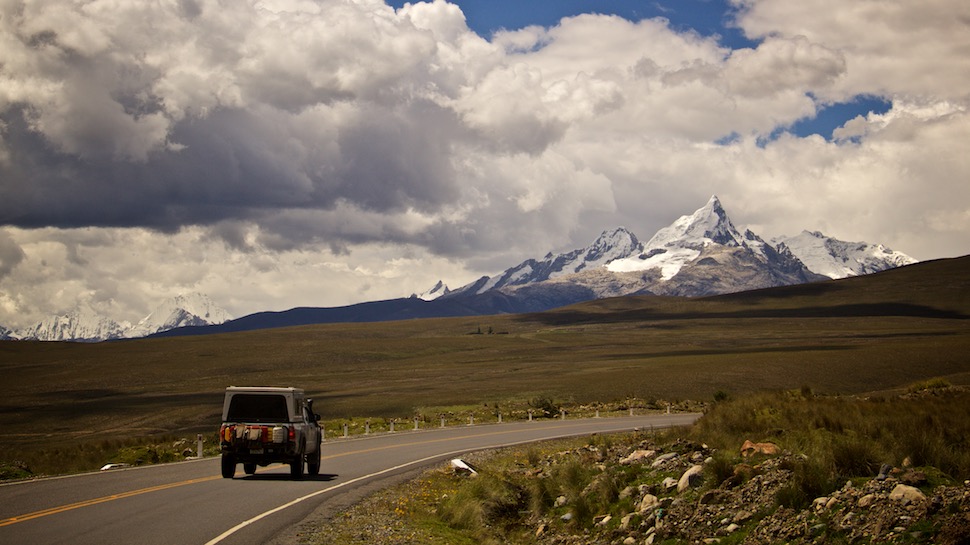
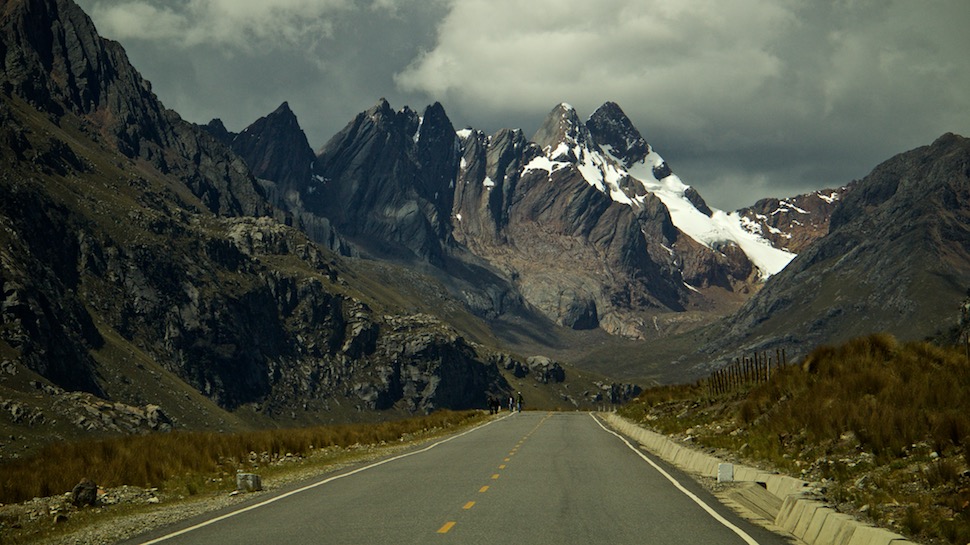
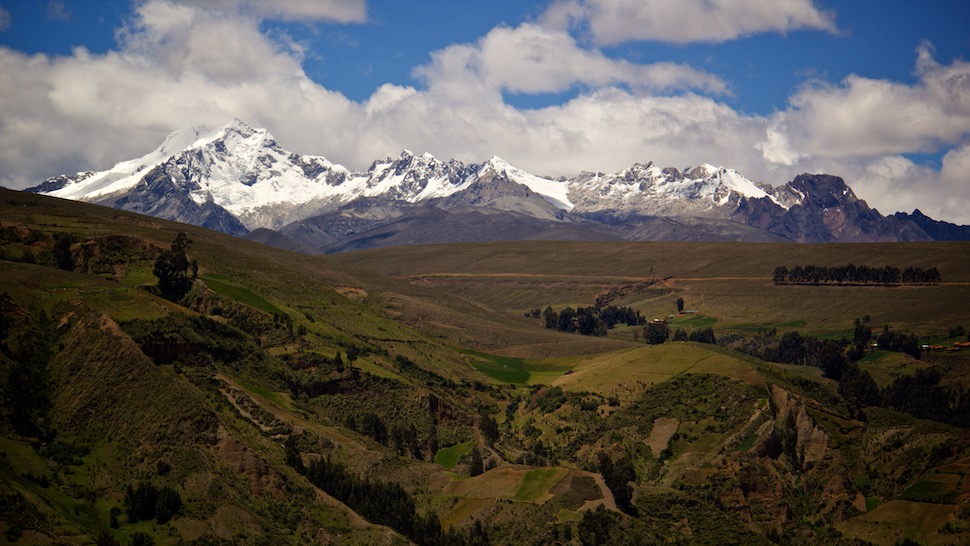
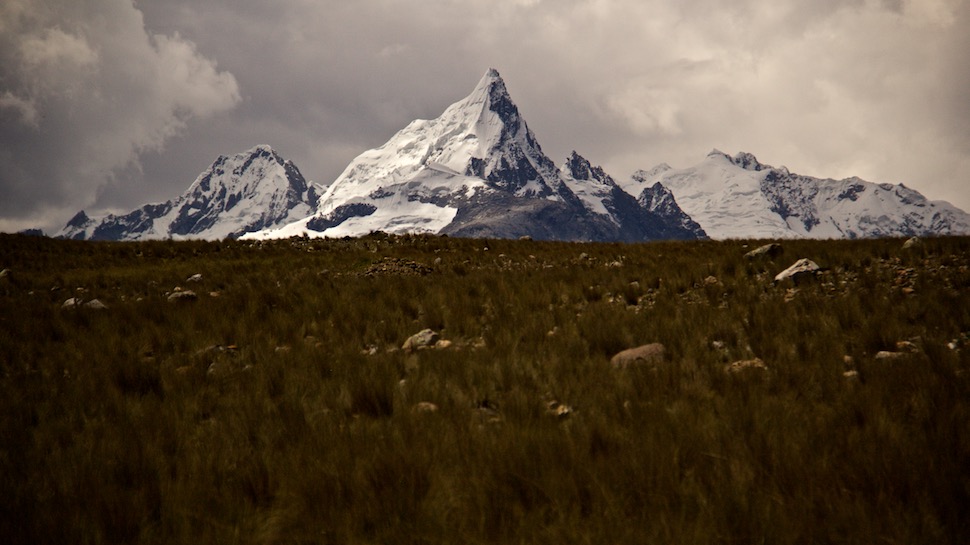
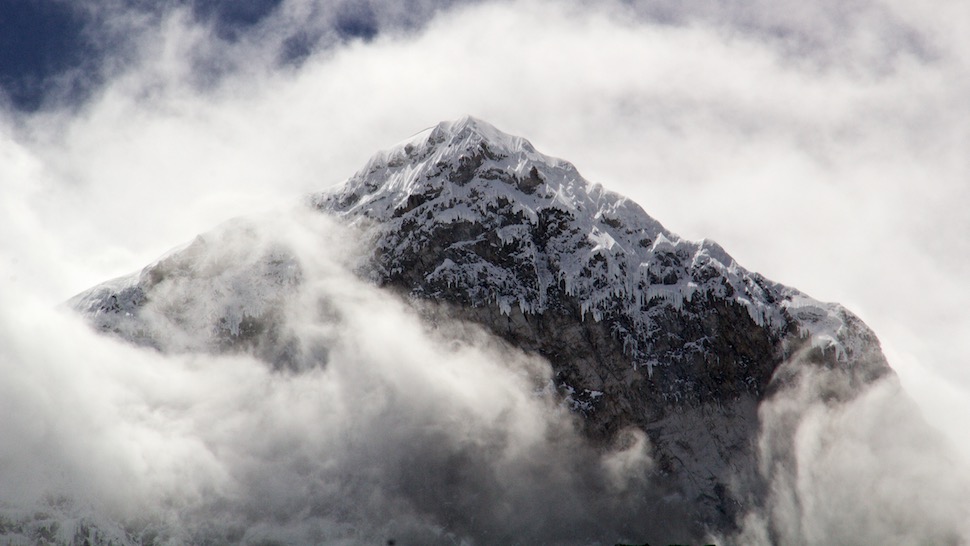
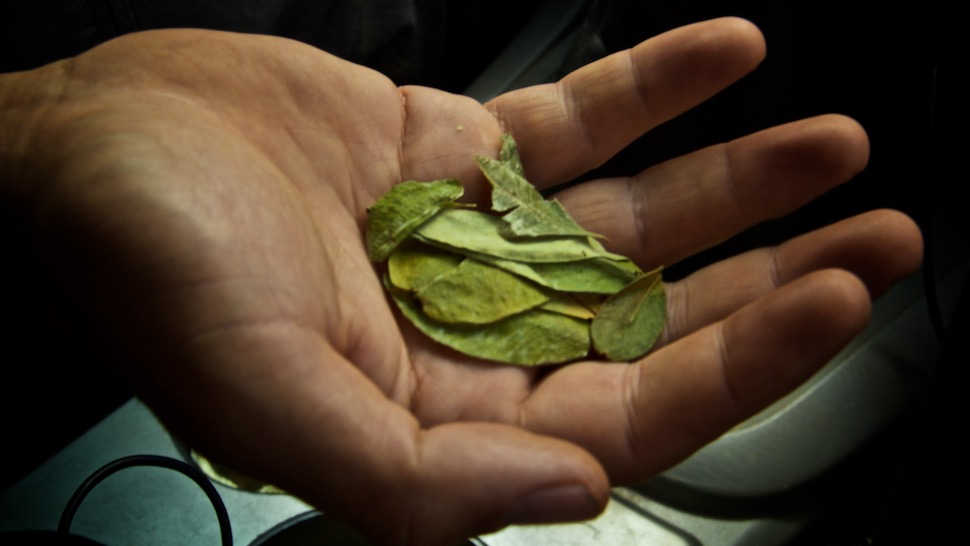
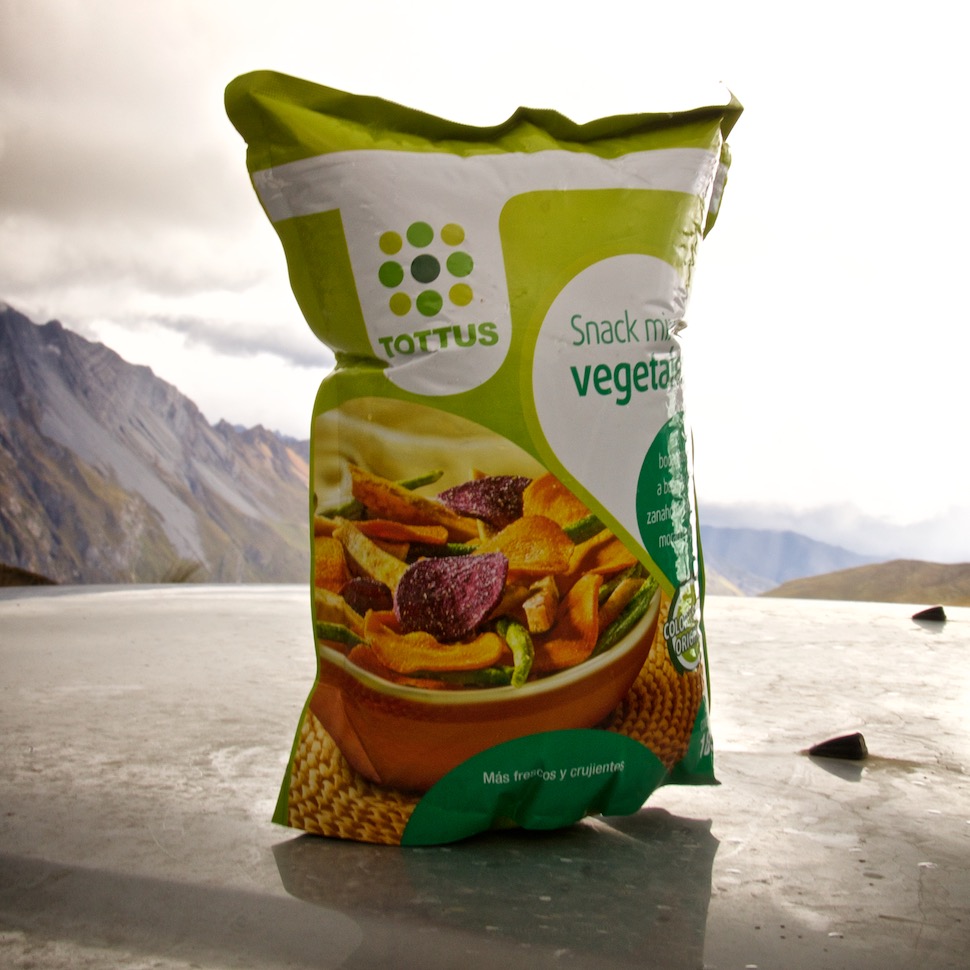
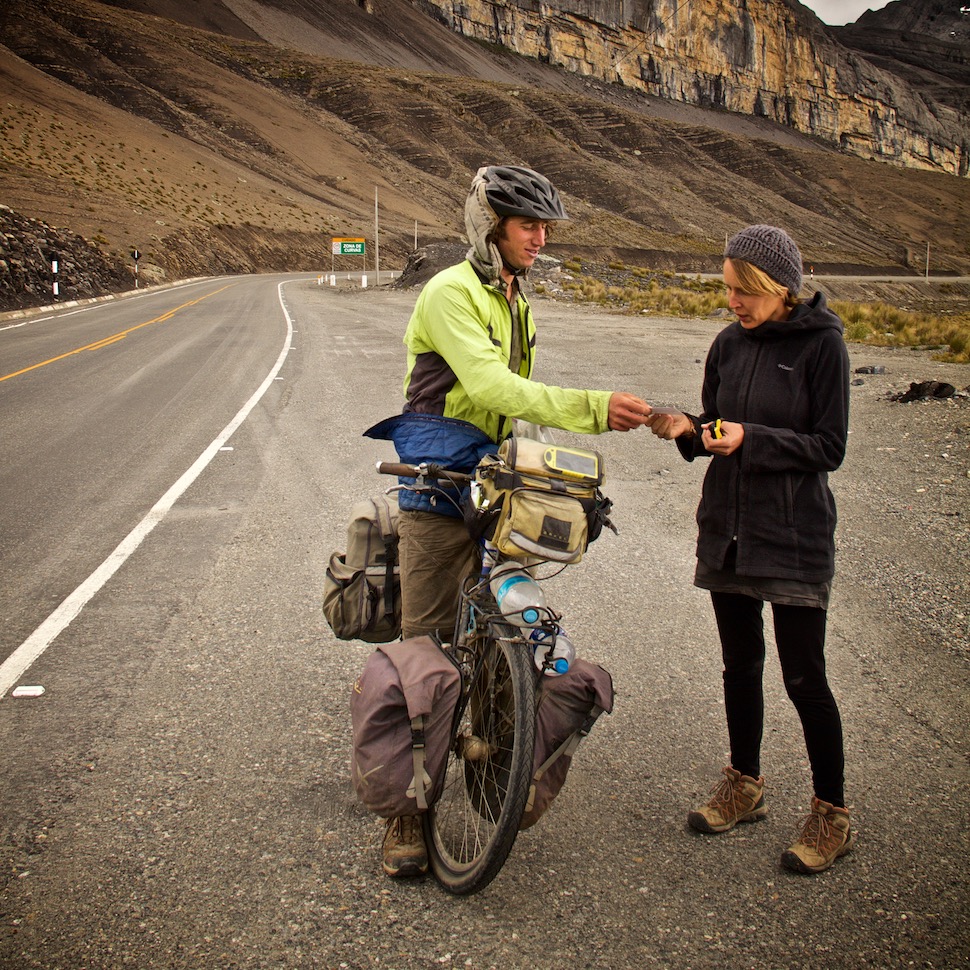
One way to cope with high altitude is to chew on coca leaves! It tastes like yerba mate tea and brings you a slight calmness and heightened awareness.
Any sealed package expands like a balloon. Do packaging designers take this kind of thing into consideration?
We have great respect for cyclists here. We make sure to stop and give them whatever they need including a nice chat!
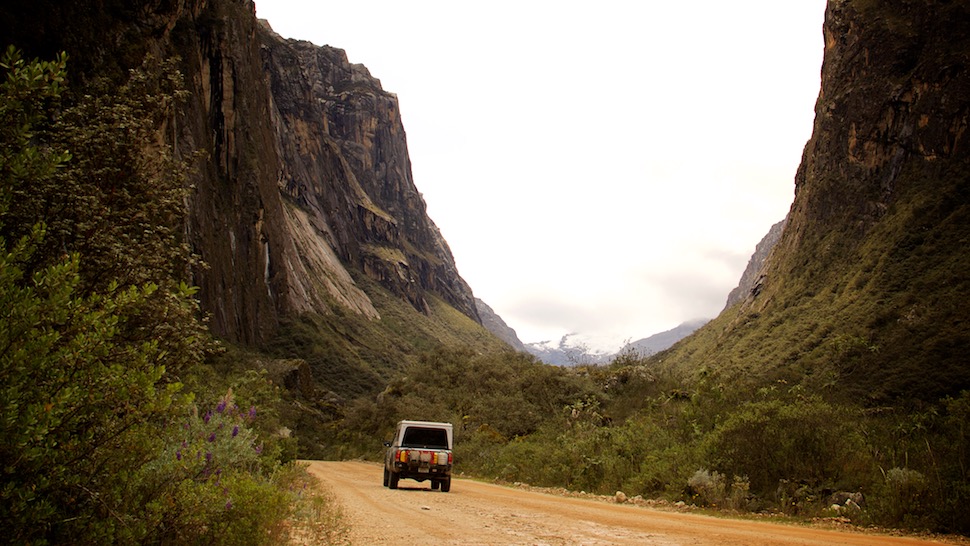
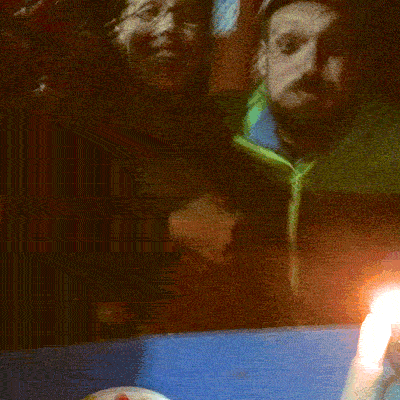
Sarah’s birthday found us in Huaraz, but we were able to gather the essential components of a birthday party. Candle from a tienda, cake from the panaderia and two friends from the hostel in town. Garbi and Erik of Bizitza Bici whom we met months ago in Antigua, Guatemala were there! We were so lucky to have them with us on this special day. It felt great but also humiliating considering that they have been cycling the same distance.
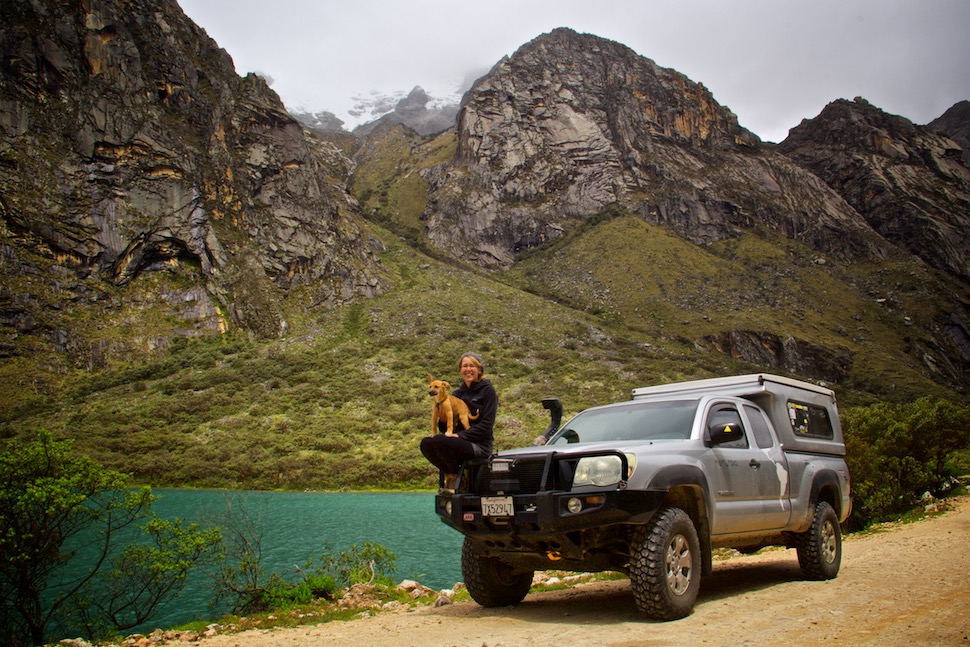
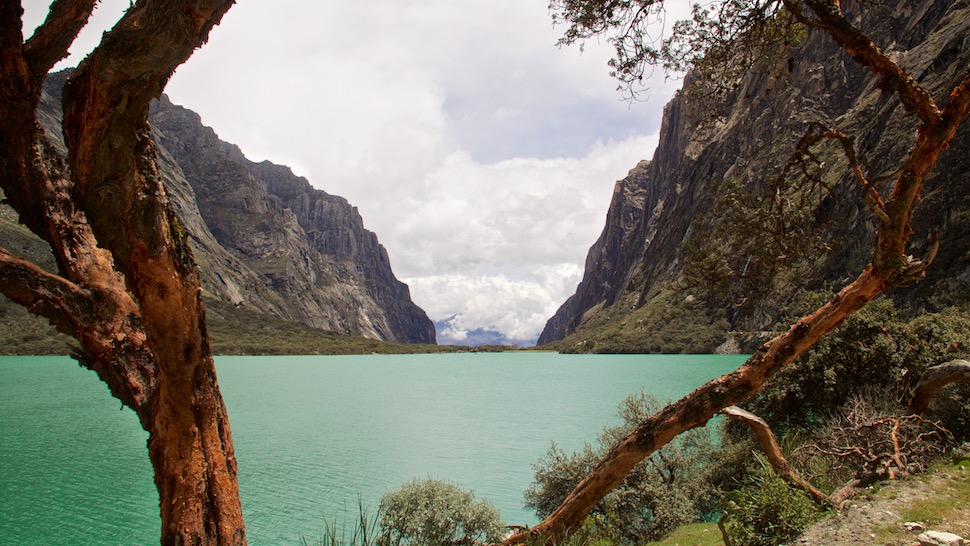
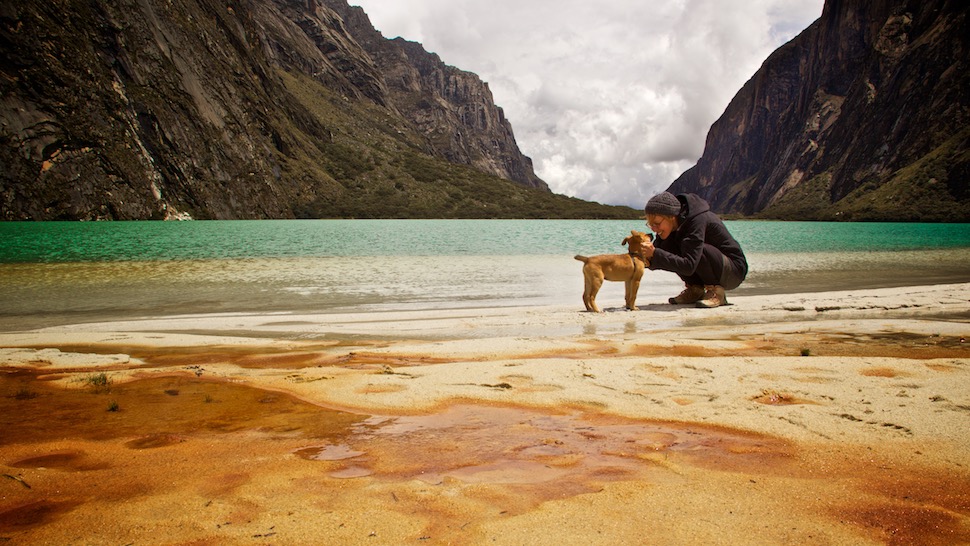
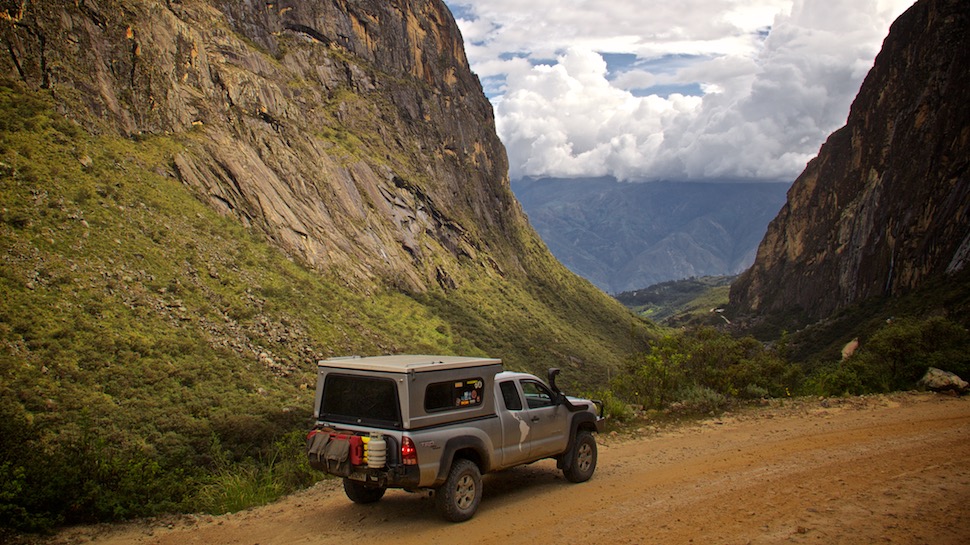
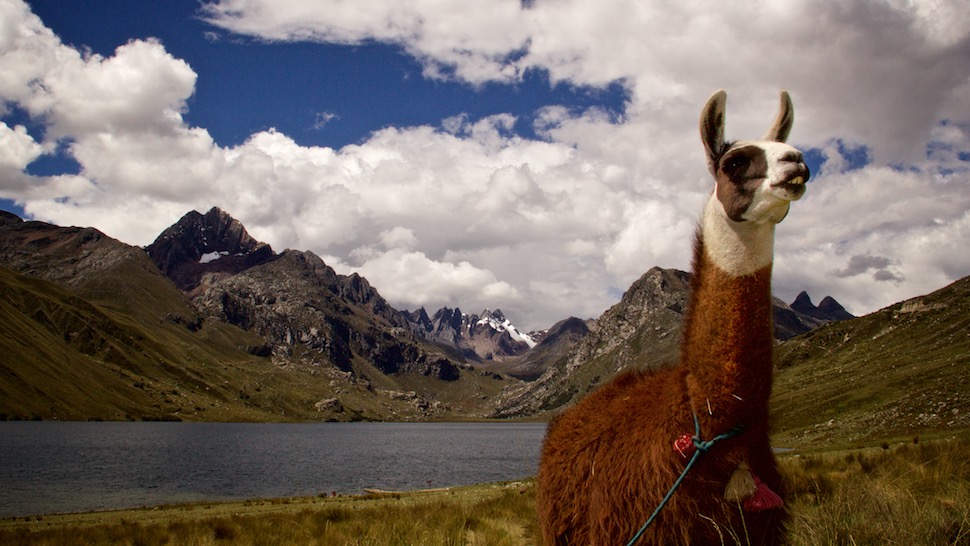
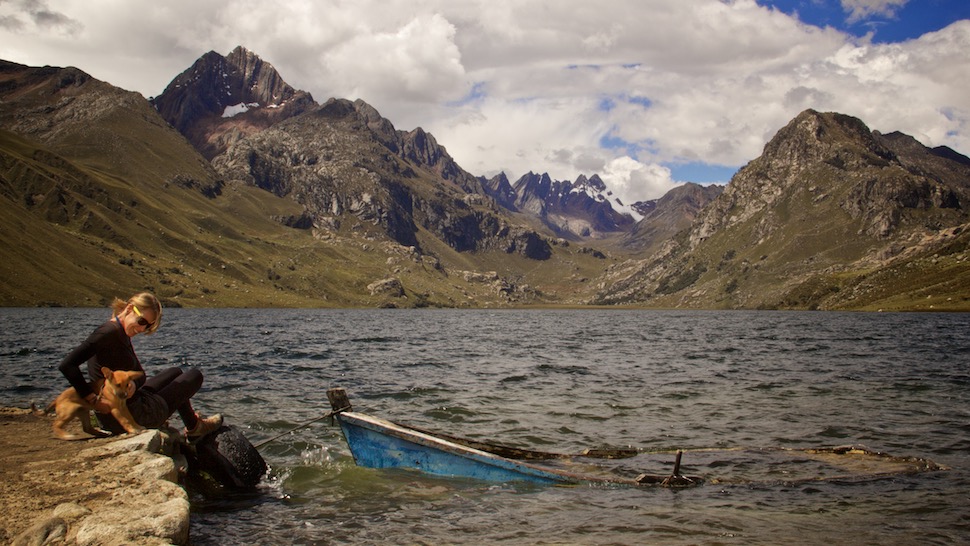
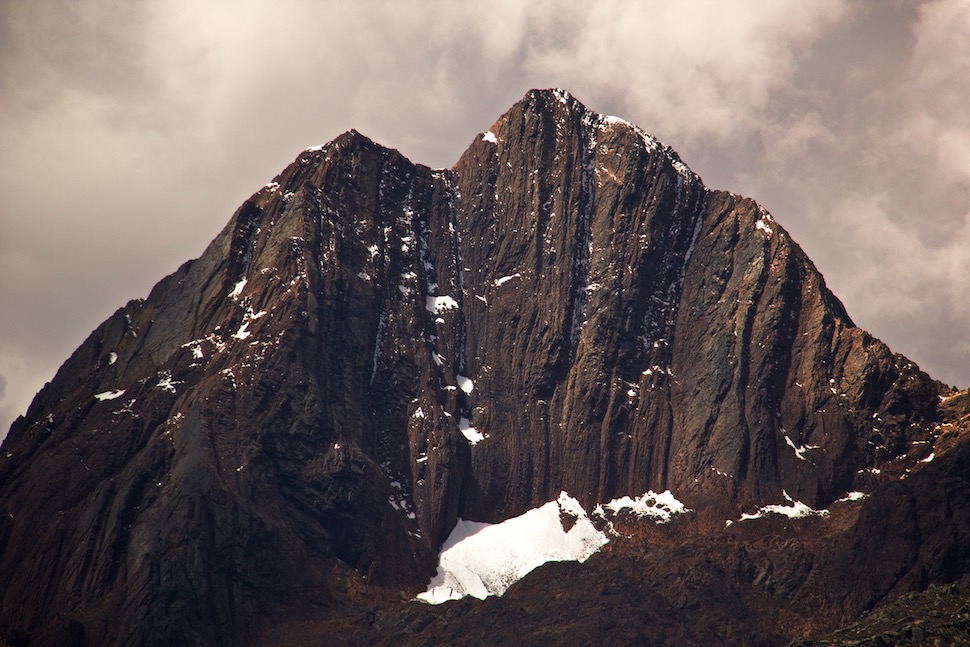
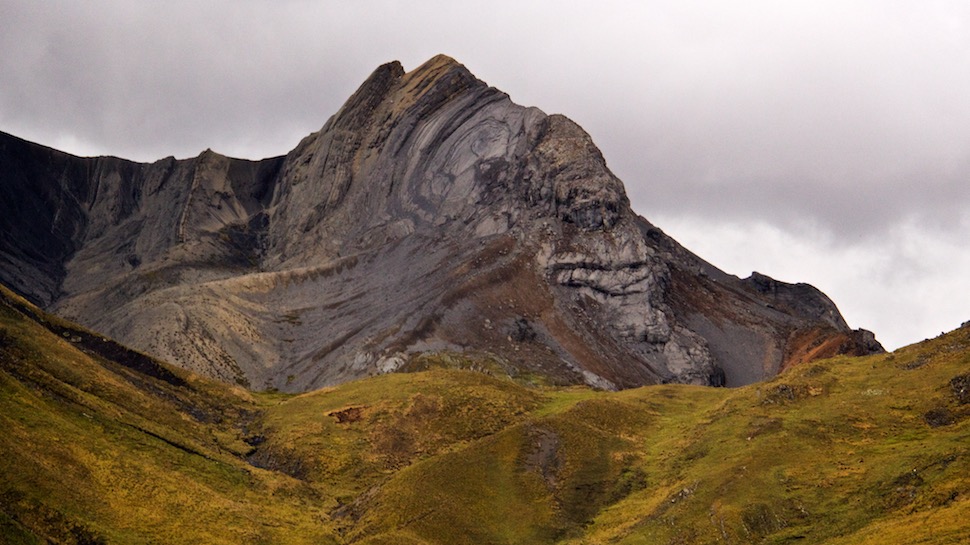
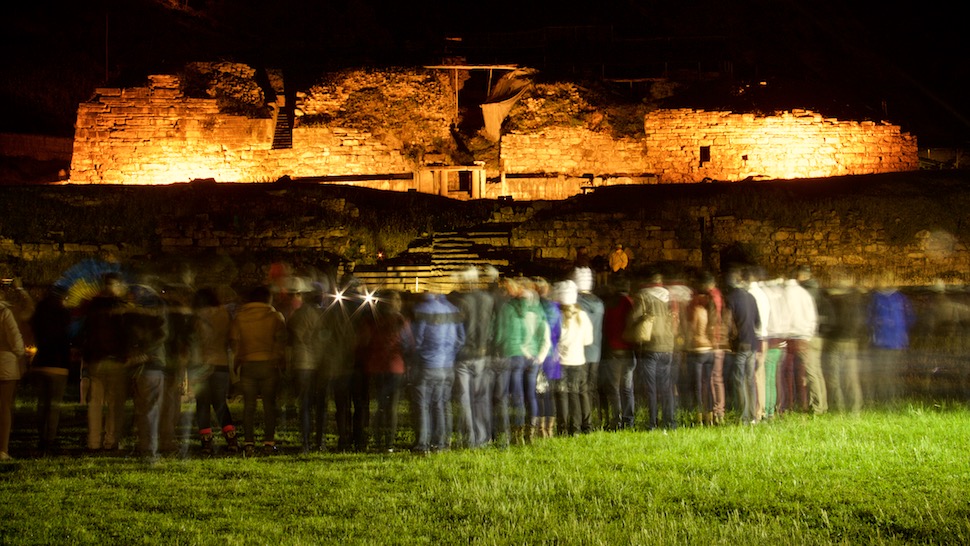
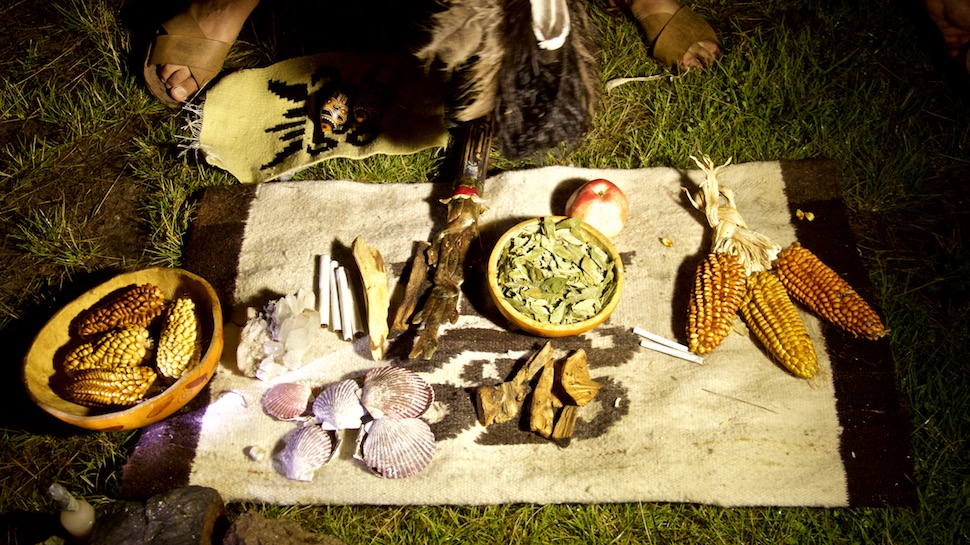
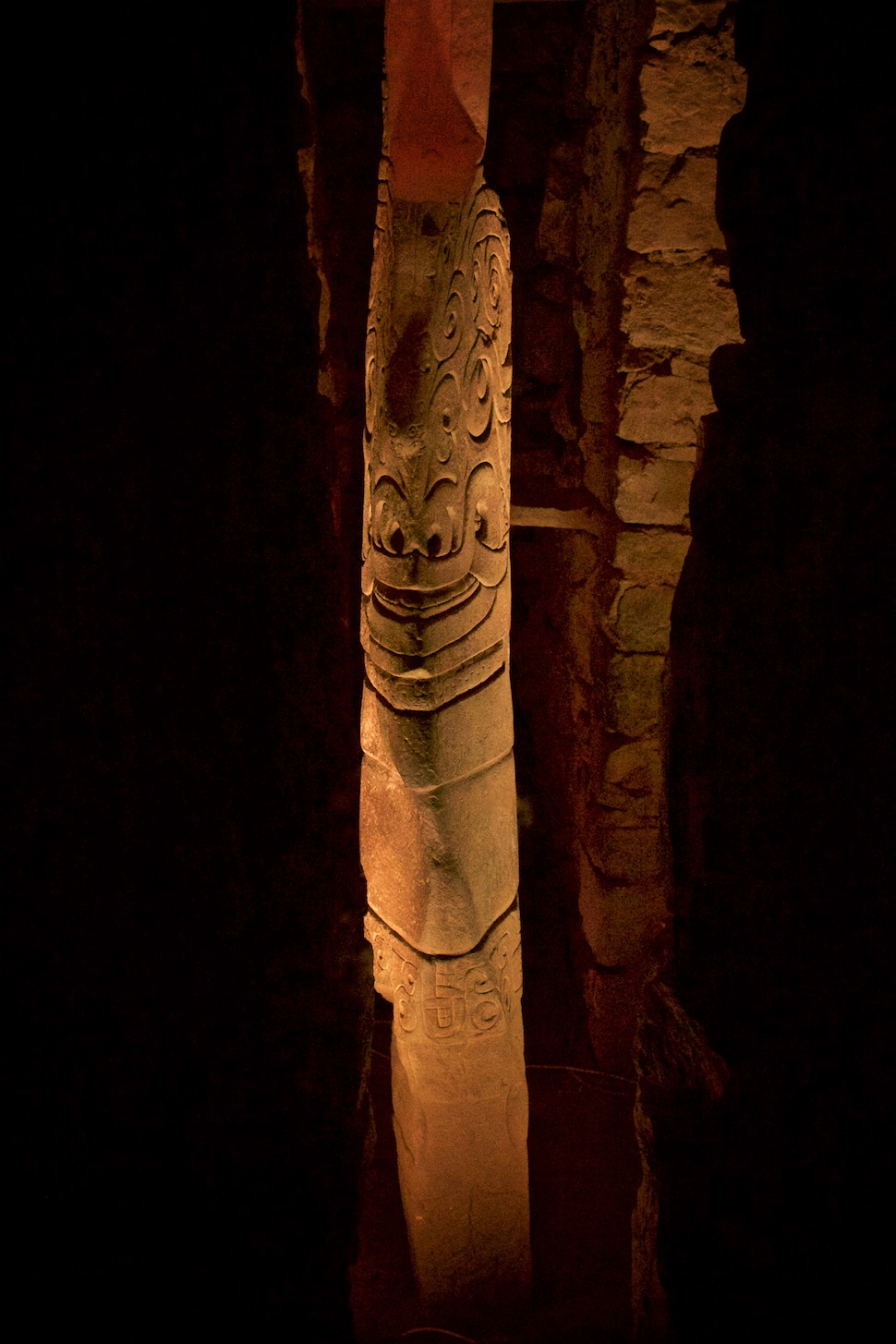
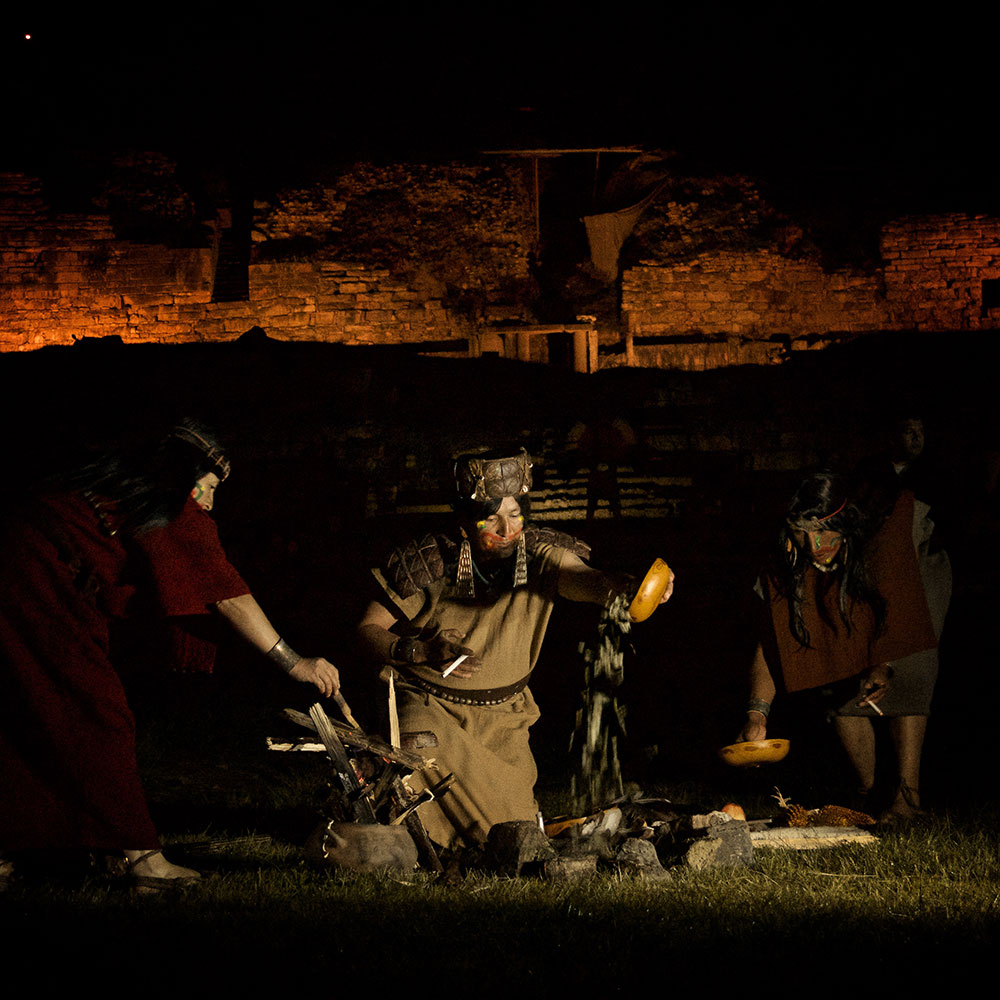
We crossed the Cordillera once more in order to visit Chavin de Huantar, an archeological site of religious significance dating back 3000 years. Our late arrival into the town coincided with the Semana Santa celebrations and we were able to take a late night tour into the site. It was interesting to see a theatrical reenactment of the ancient ceremonies which made this site so significant back in the days, that it received pilgrims from as far as Ecuador.
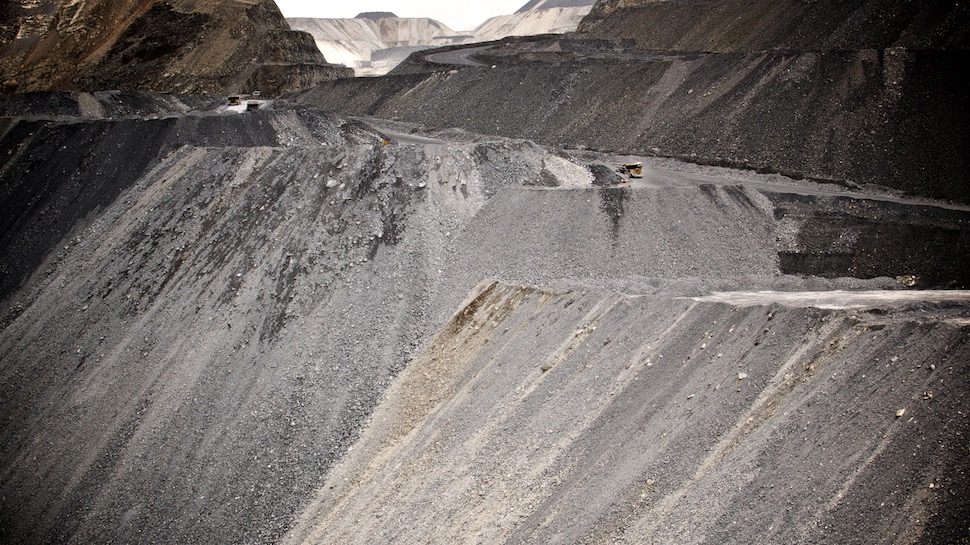
A huge mining operation is going on on the southeast of the Cordillera Blanca. The human effort to grind down the landscape is almost as impressive as the mountains themselves. Below are the barracks to sustain the manpower required for the task.
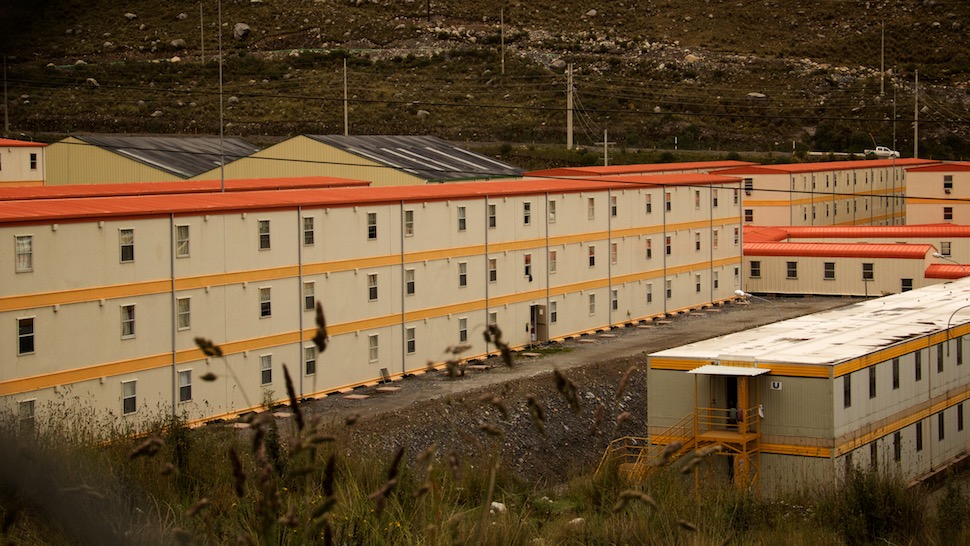
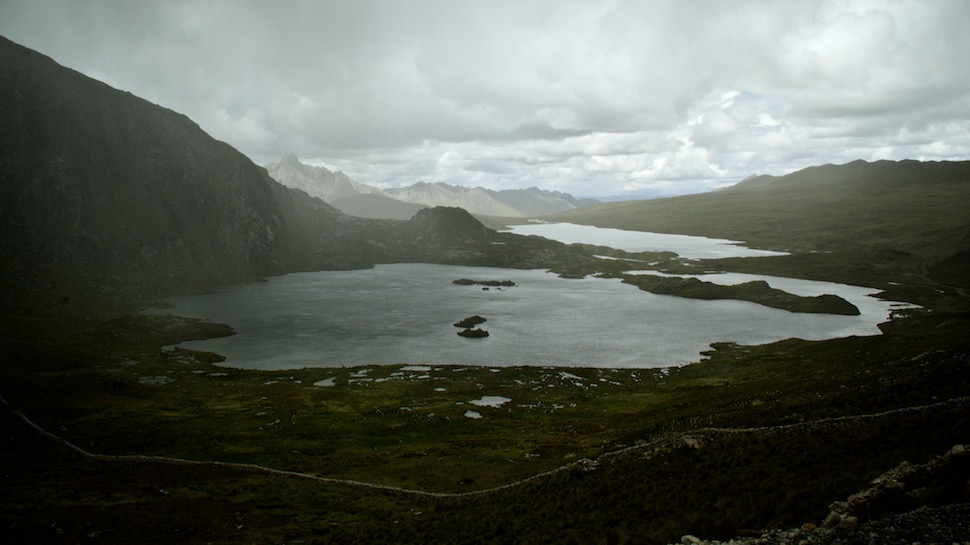
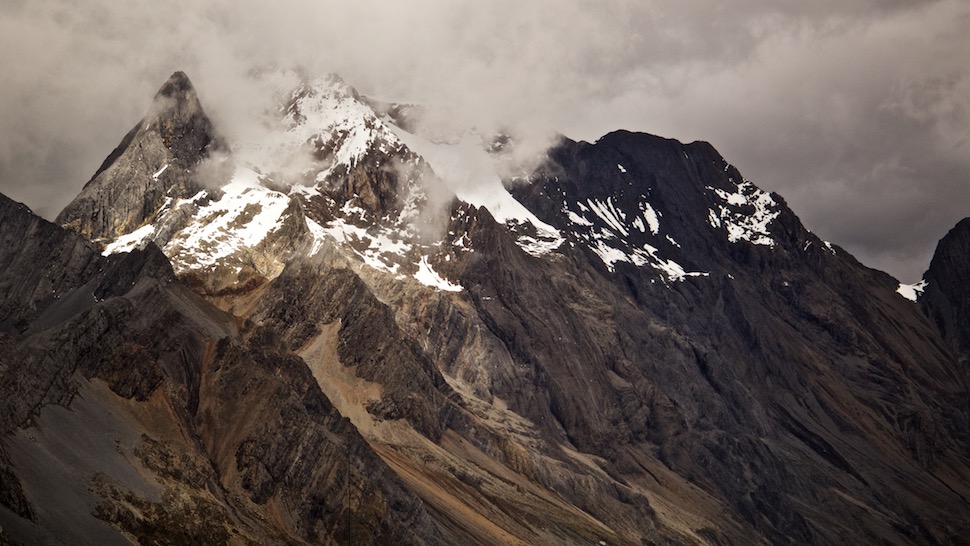
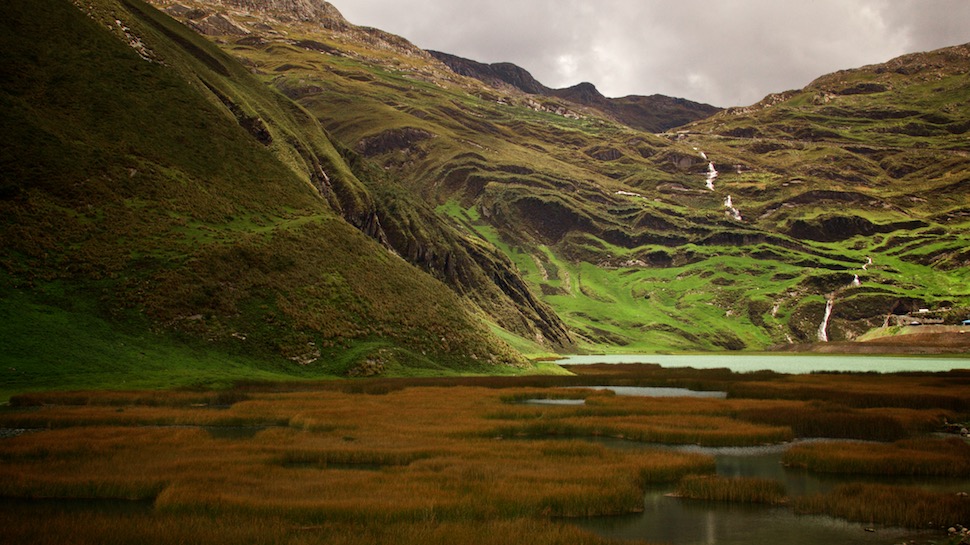
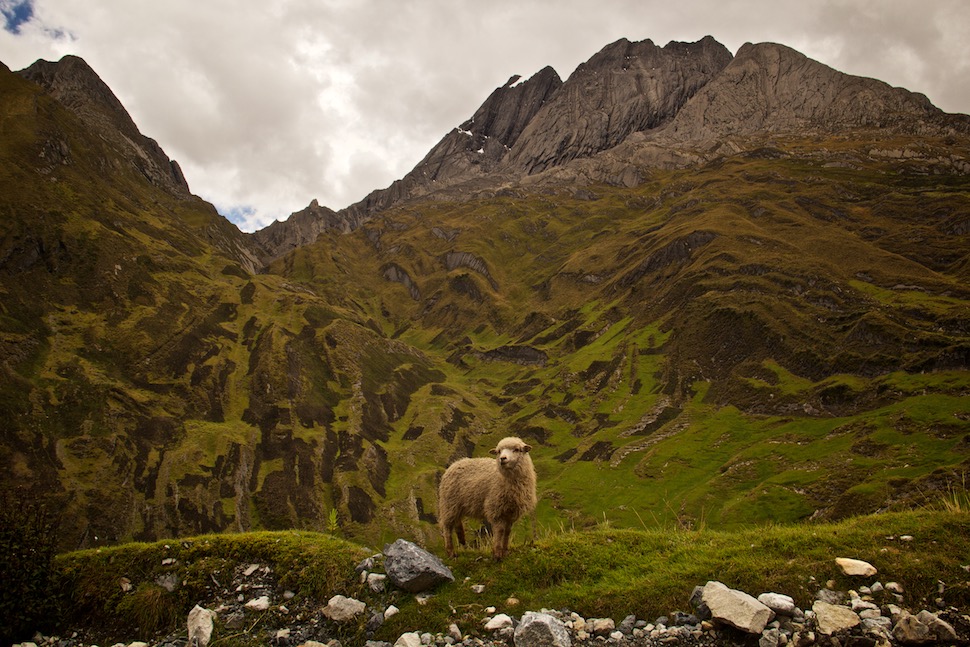
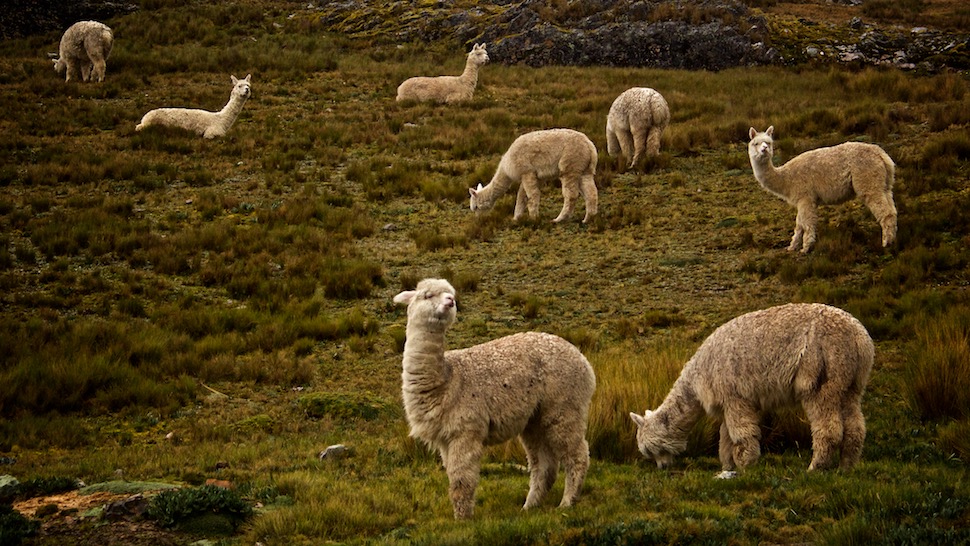
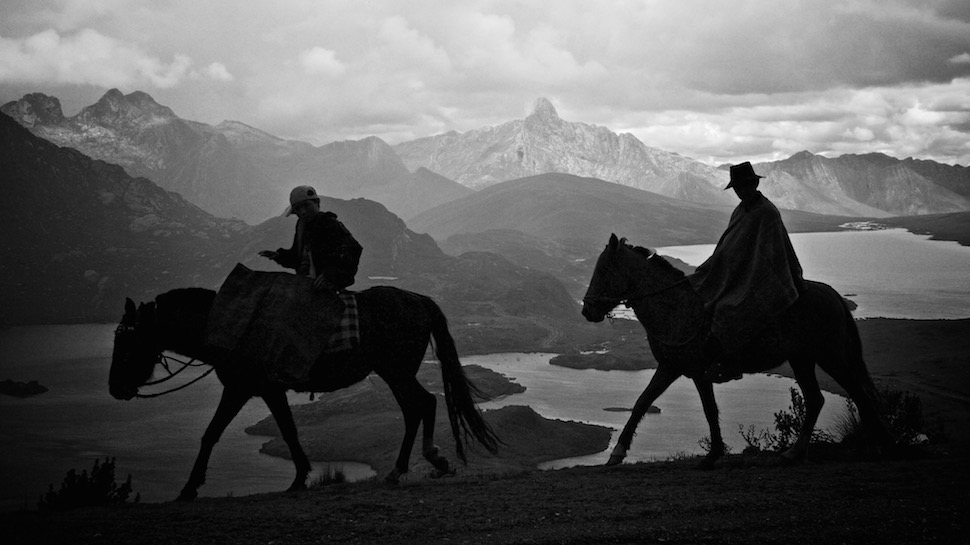
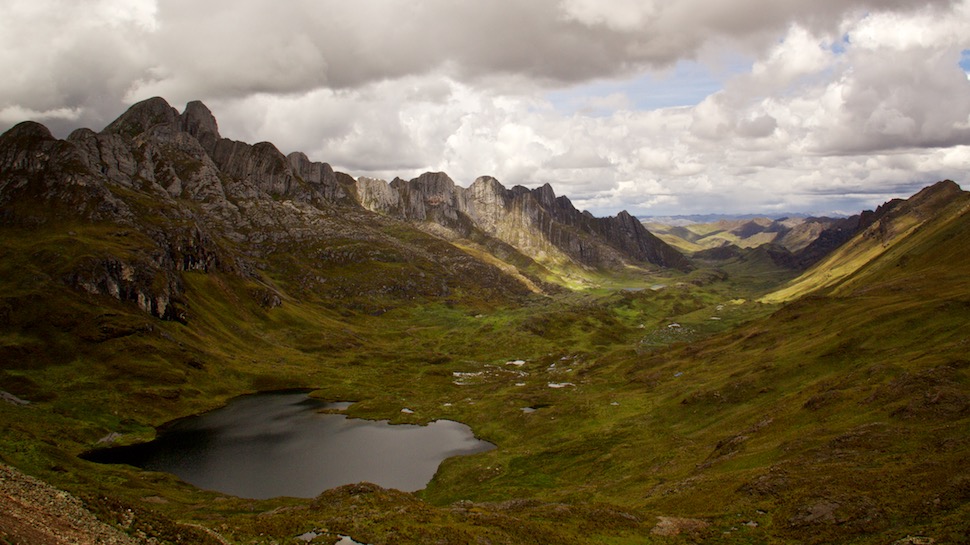
We were awestruck by the amazing landscapes we witnessed on the Cordillera, but our last days on the mountains were engulfed in a thick layer of fog which made driving a very difficult and alien thing to do. We decided it was time to get back to the coast and drew our route to pass through Caral, the oldest known archeological site on the South American continent.
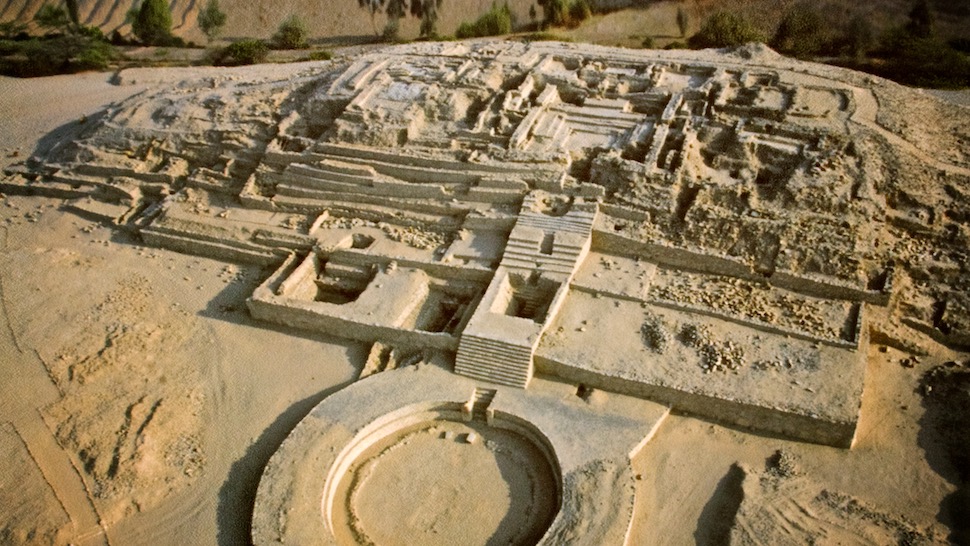
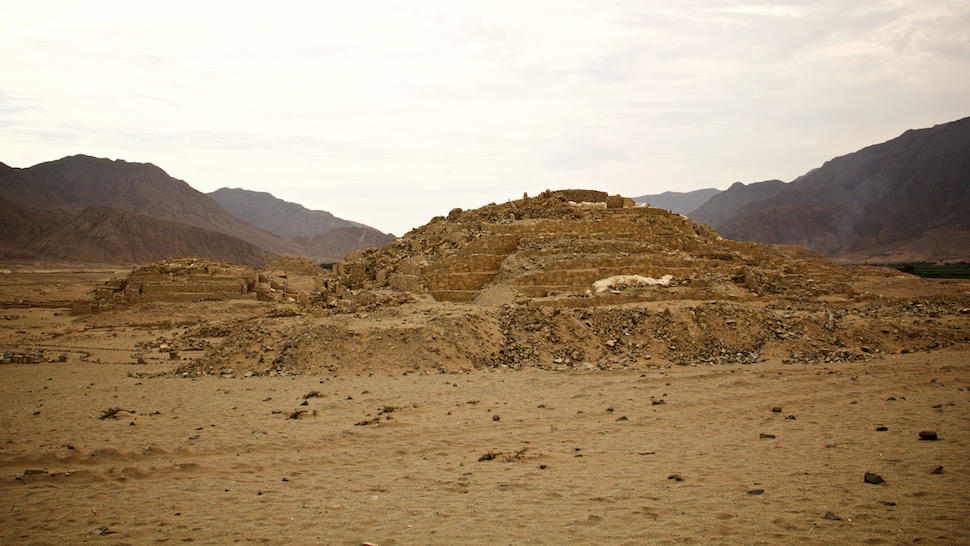
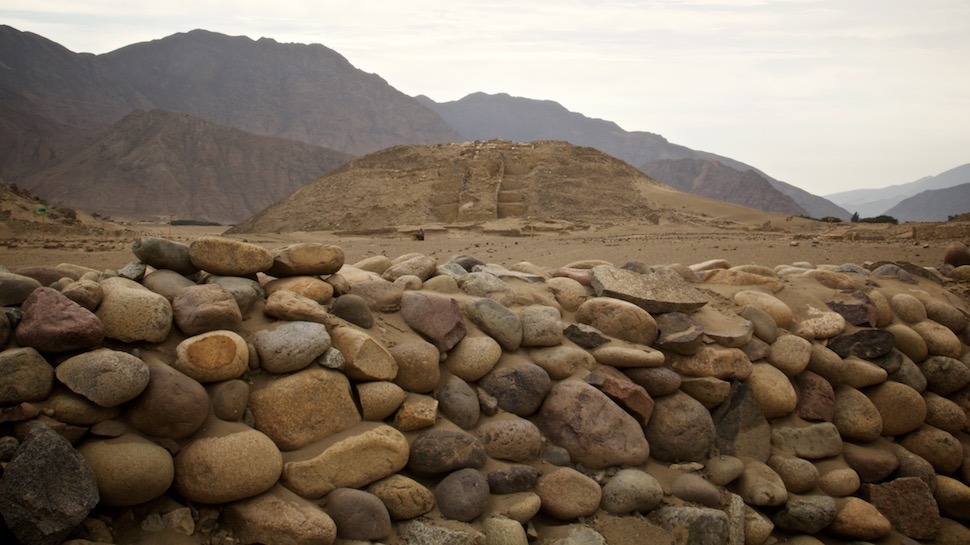
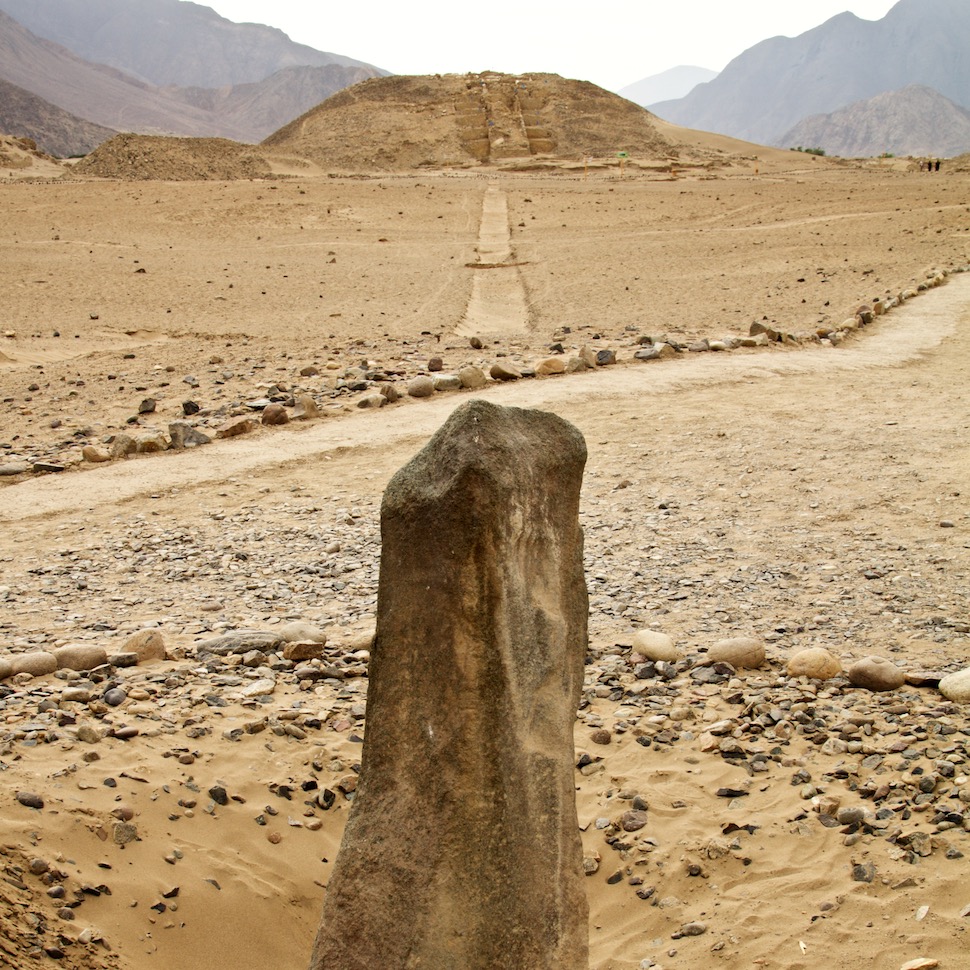
The Caral site is hard to appreciate from the ground. The desert and wind has definitely taken its toll on these structures in the past 5000 years! Nevertheless, it was great to visit especially considering that we were able to camp with the archeologists working on the site.
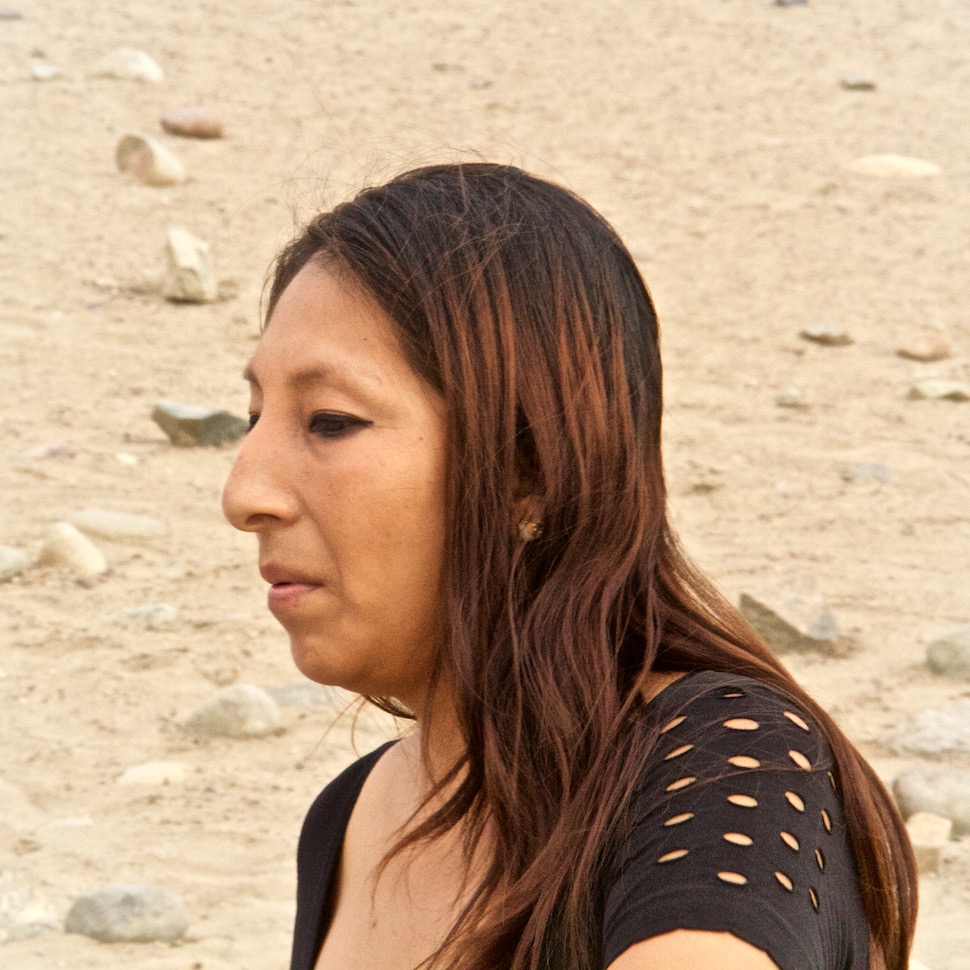
Occasionally, we see faces that are almost as interesting as the archeological sites themselves. Despite the violent history of efforts trying to eradicate them from the face of the earth, the Inca genes are still at work.
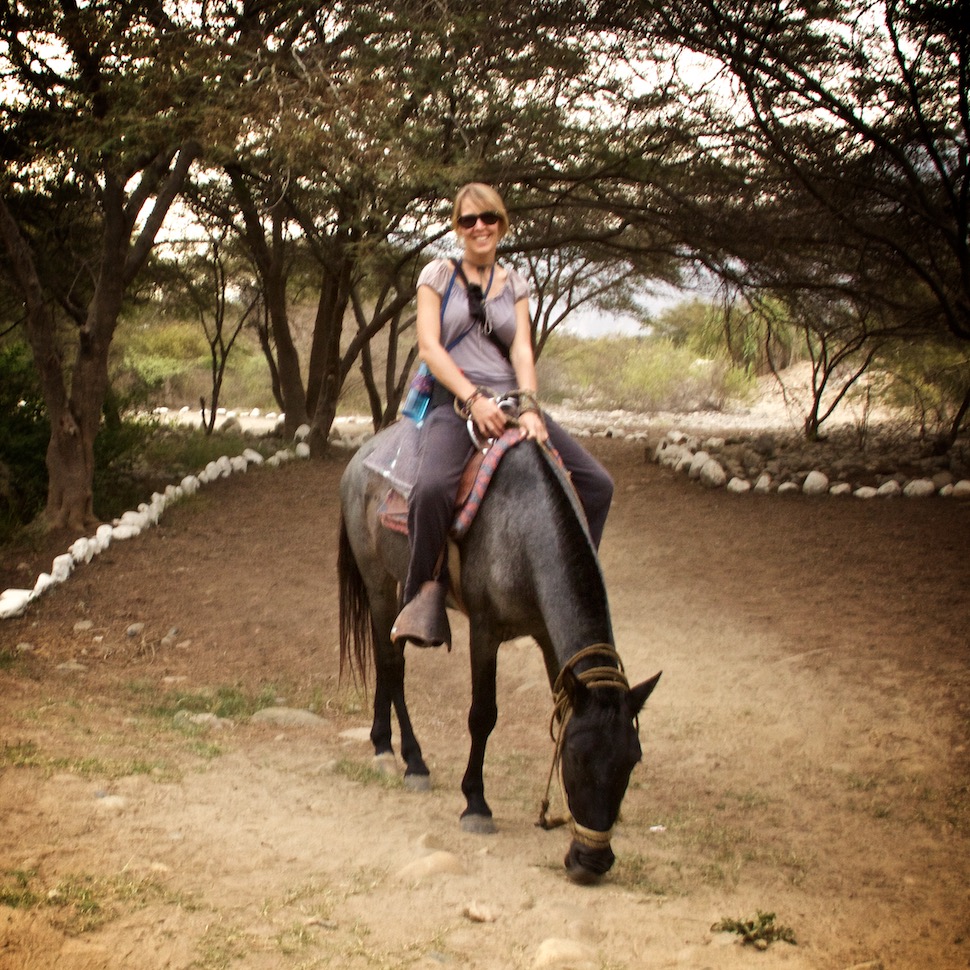
The site is quite large and away from the parking area. So we gladly accepted the offer to take a horse ride on our way back for a few soles. We’d love to do this more often! Who knows, maybe we’ll sell the truck to get two horses instead. Do they come with pop-up tents?
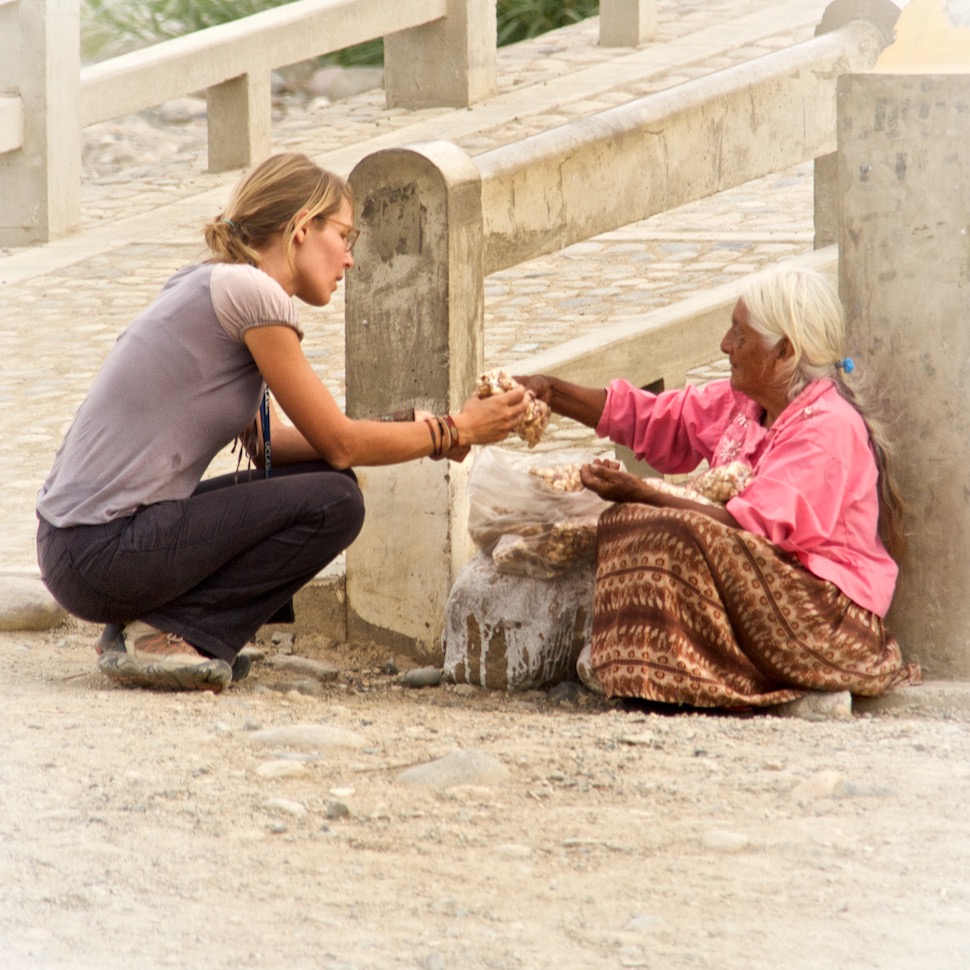
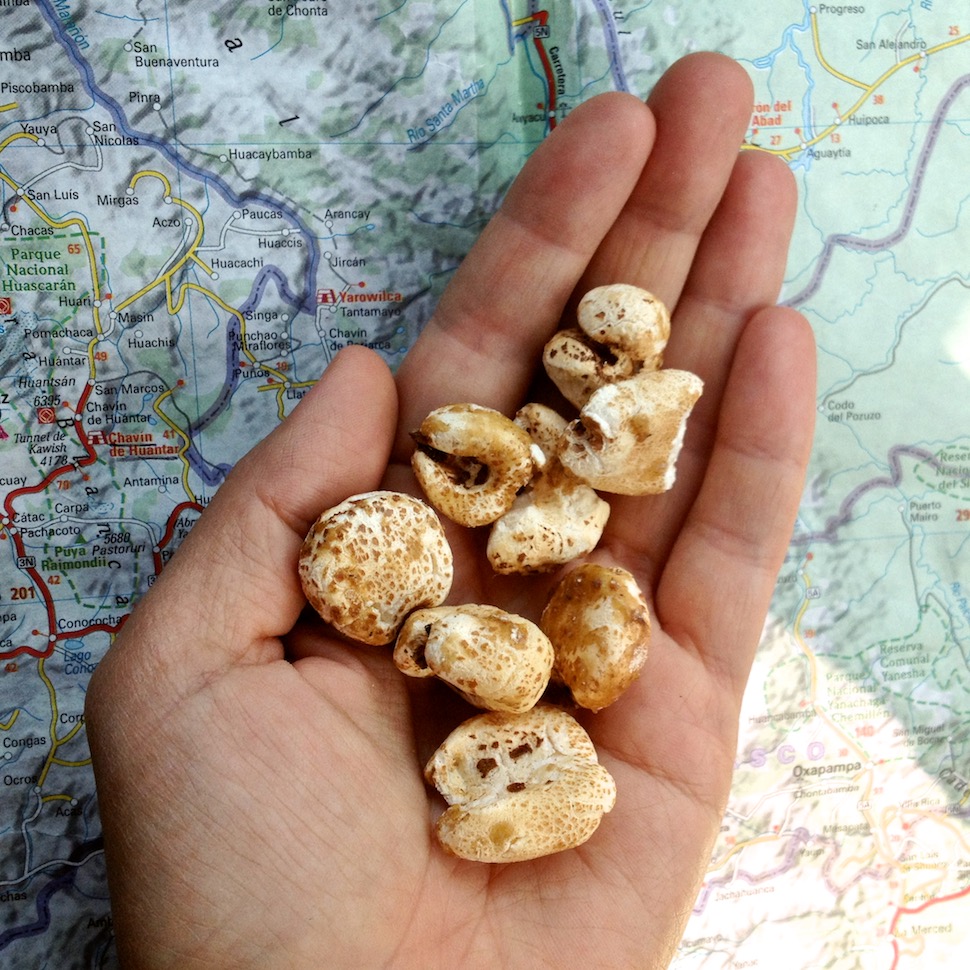
Biggest caramel popcorn ever!
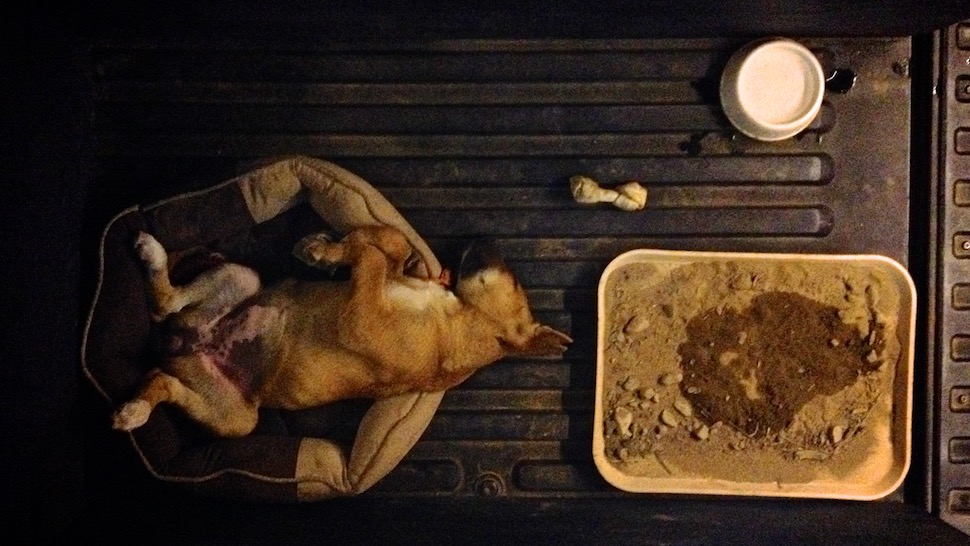
Tara’s bedroom in the truck. She’s slowly turning into a teenager.
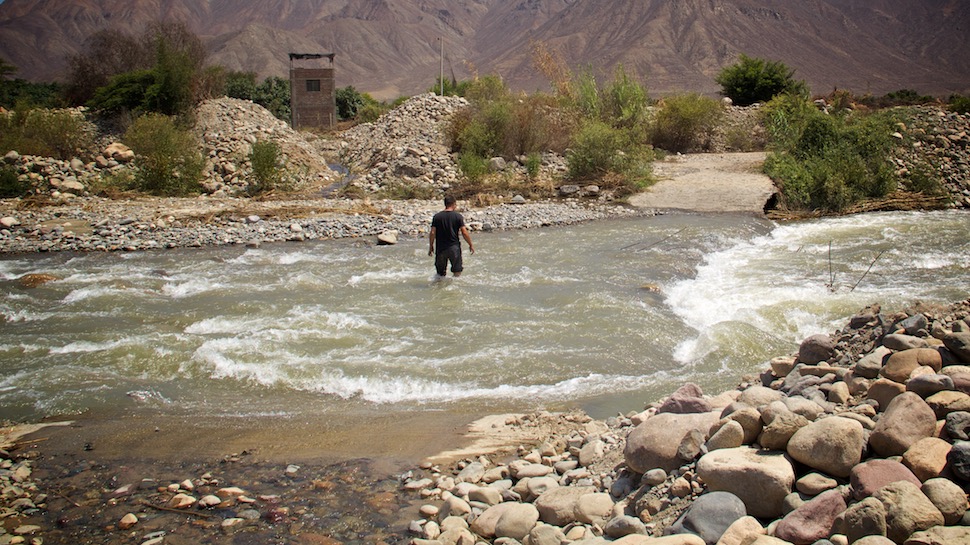
We started the day with a river crossing on the road less travelled out of Caral. We should’ve taken it as a sign of a day full of ‘adventure’!
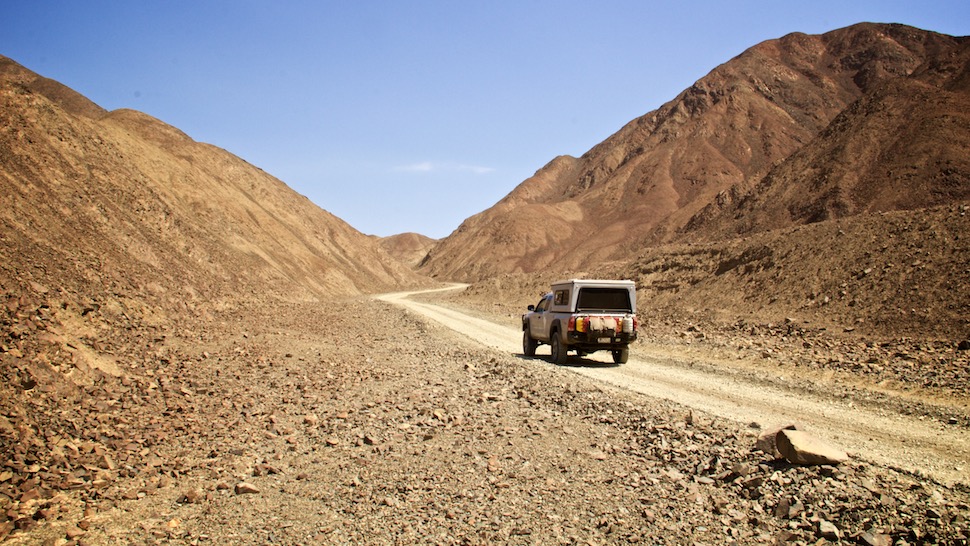
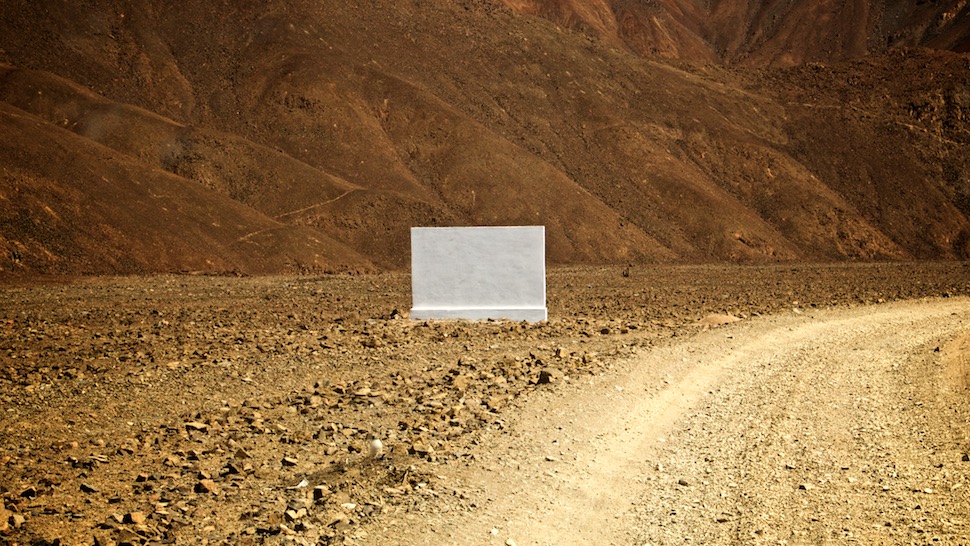
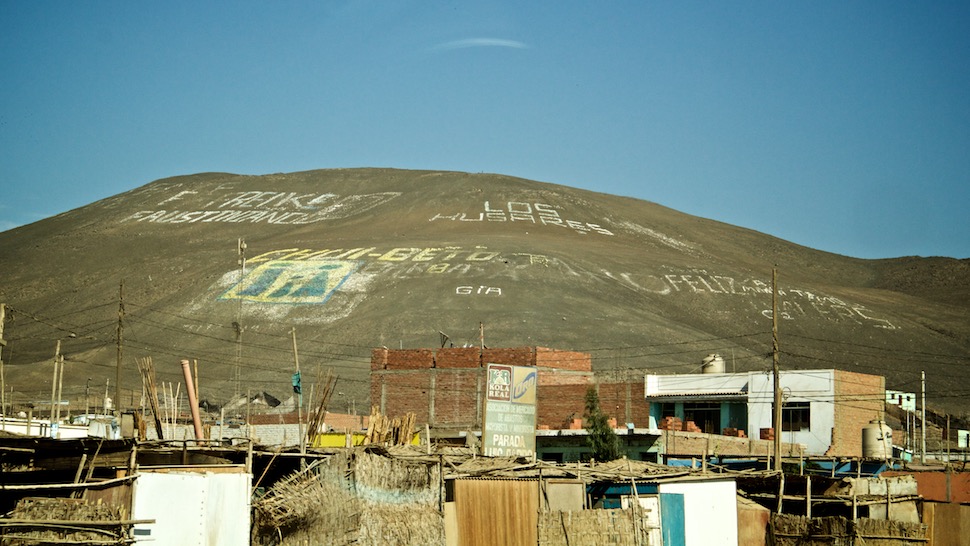
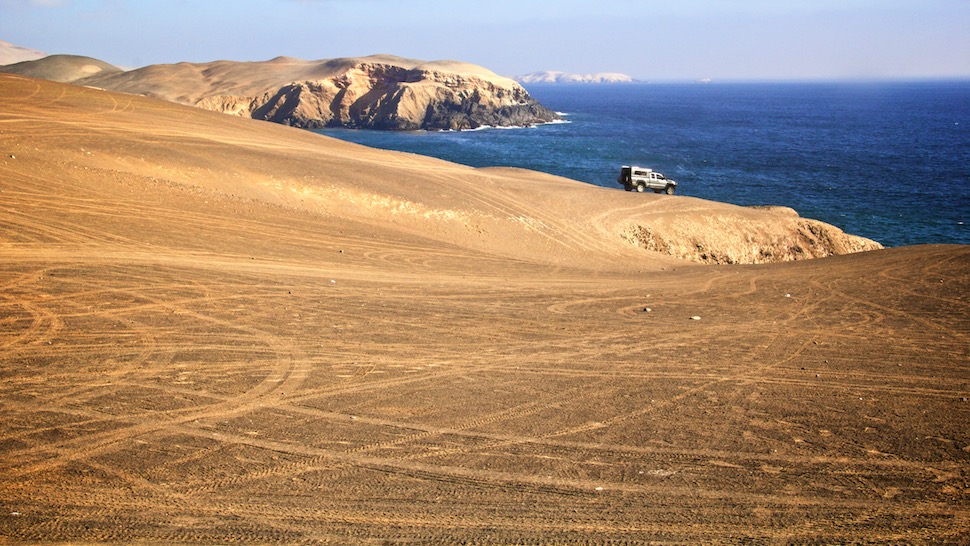
We left the Panamericana once again to dip into El Paraiso, an uninhabited desert peninsula by the ocean. It was an incredibly beautiful display of wild coastal desert life and landscape. We had great time driving on the trails occasionally losing track of them.
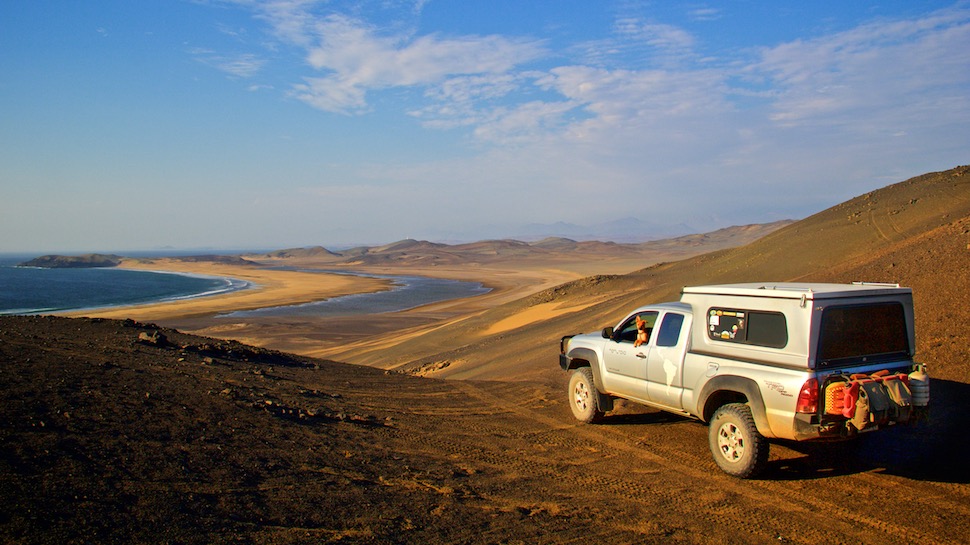
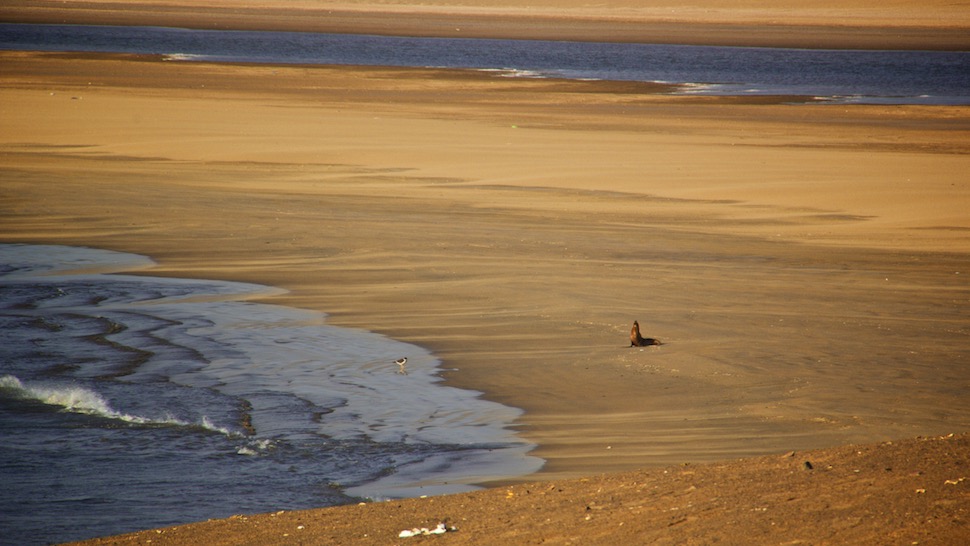
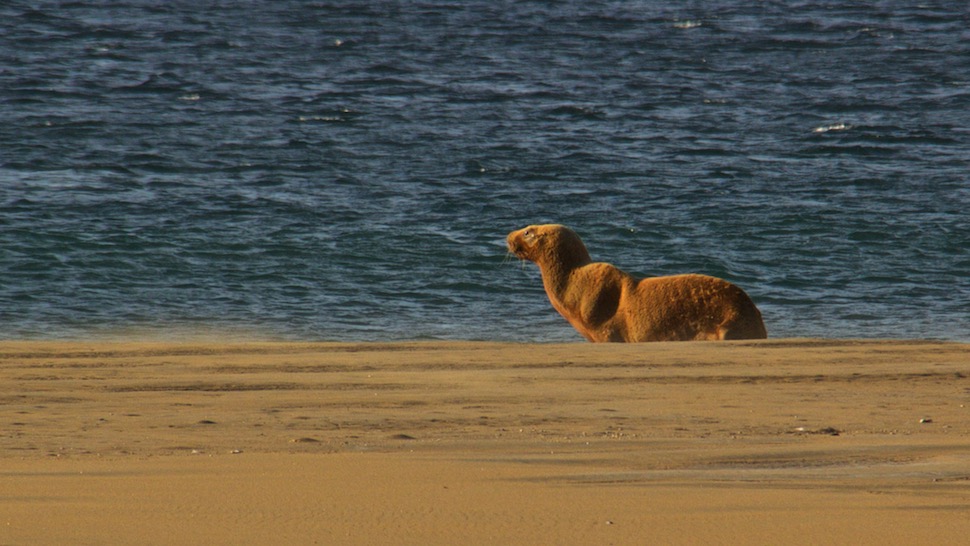
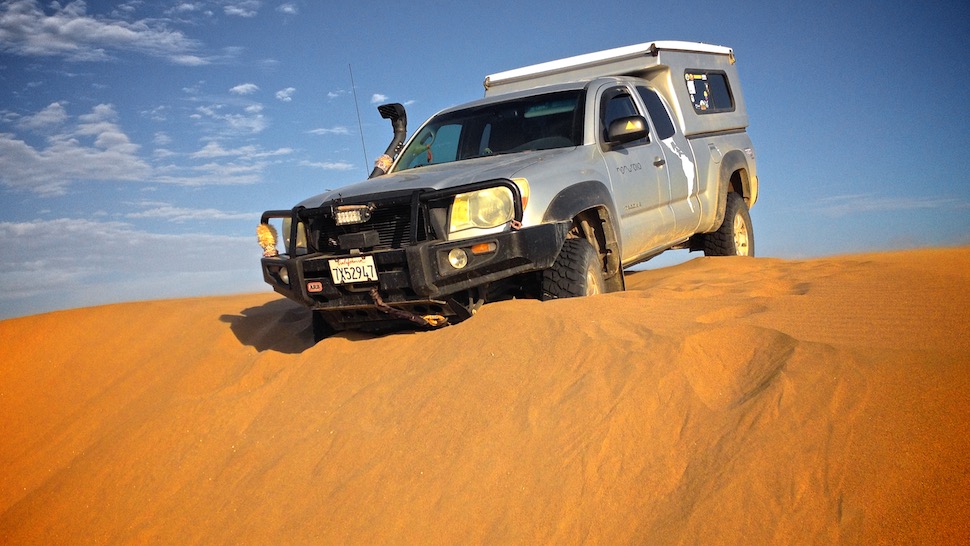
We eventually managed to get stuck at the rim of a sand dune. The height of the descend surprised us at the last moment and Erdem tried to stop the truck before it started heading downhill, but the front wheels were already beyond the edge.
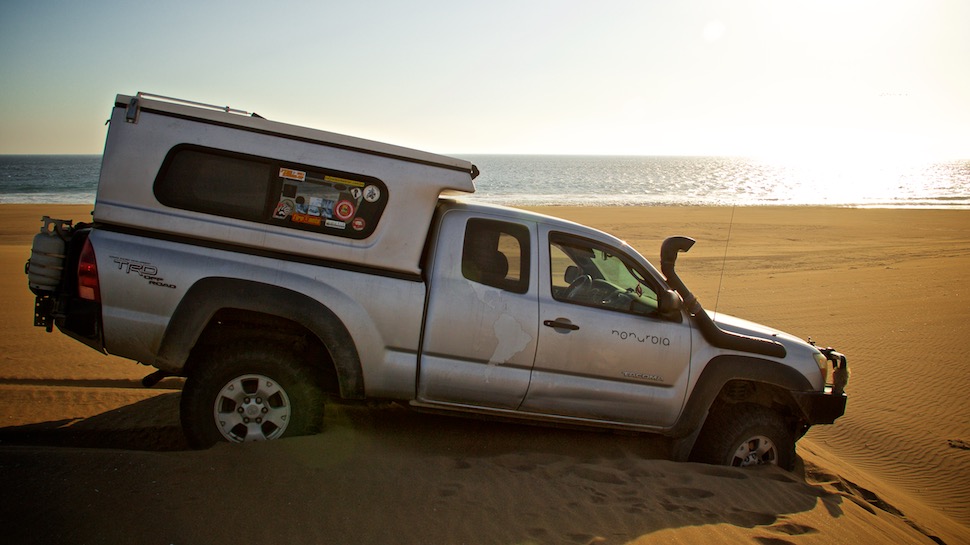
Trying to go back got us stuck even further because there was no way of pulling the front wheel back up. Low-range four wheel drive, differential lock, low tire pressure… Nothing helped. Now the beast was sitting on its belly like a pig in mud. The wheels had no traction.
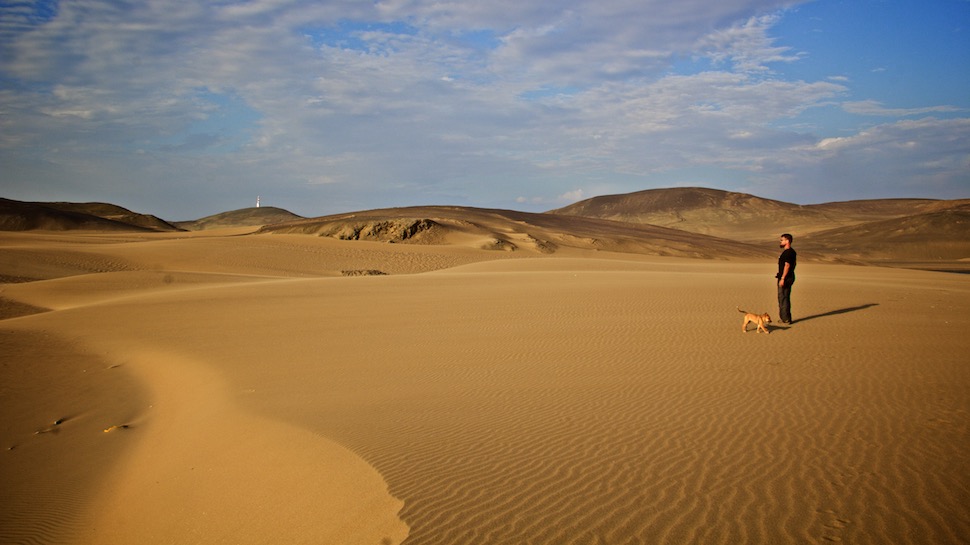
The day was about to end and the tide conditions were a mystery. Erdem decided to take a break and think about an “exit strategy” without getting stuck any further down the ‘road’.
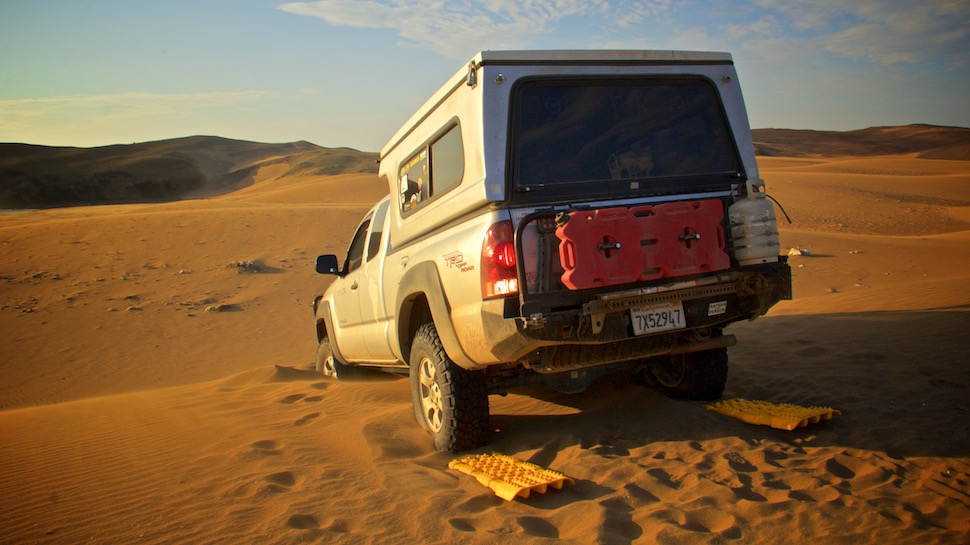
We tried using the palettes on the rear wheels to pull out the front end back out, but the tires were spinning freely on the palettes, melting them down.
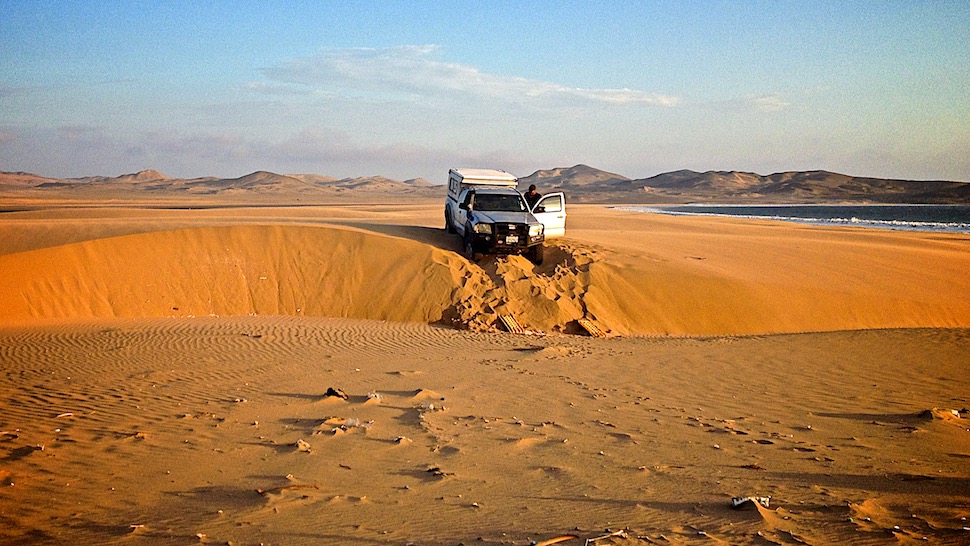
We even considered going downhill into damp sand but quickly gave up on the idea considering the possibility of a tide coming in later on.

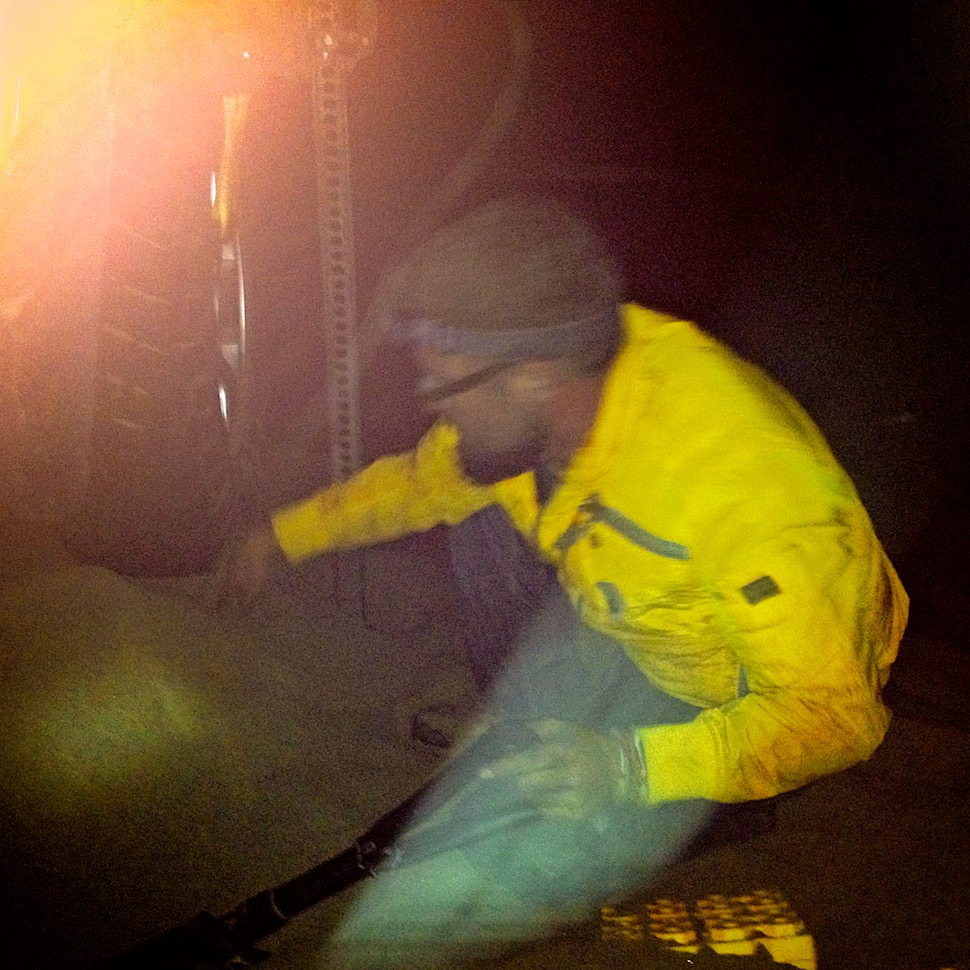
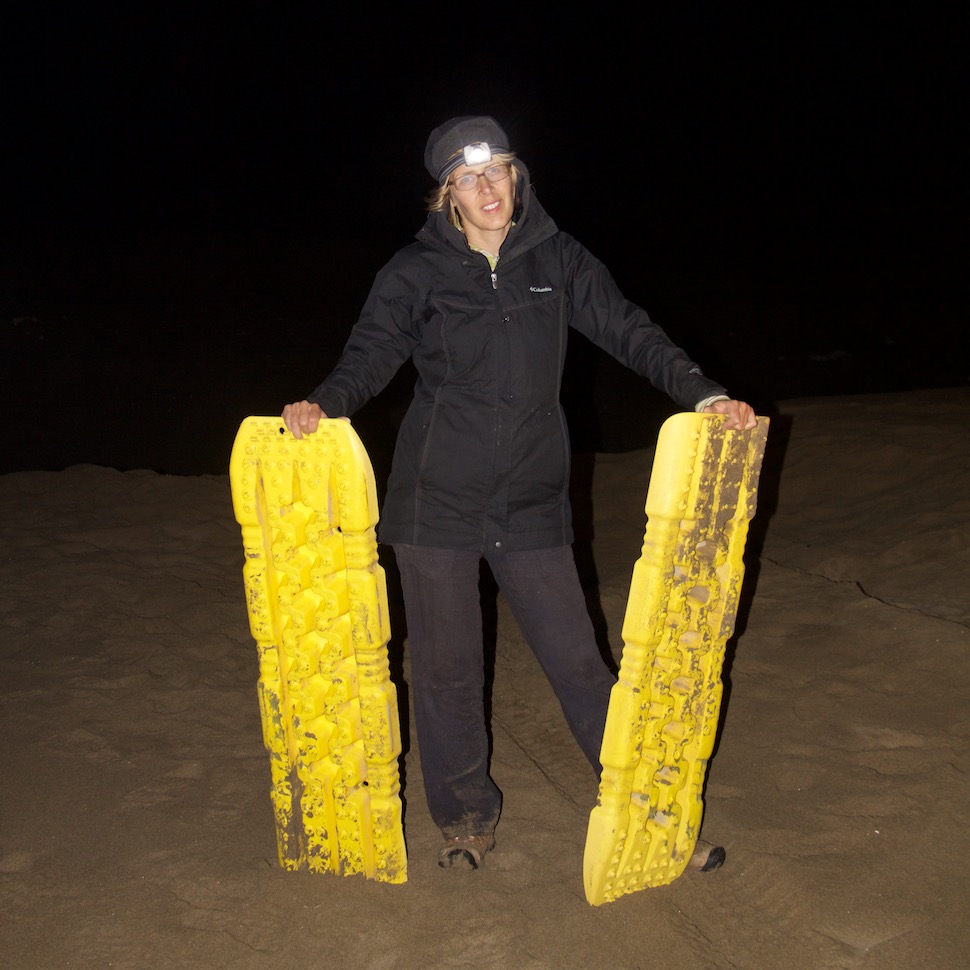
Finally we bit the bullet and used the hi-lift jack on all four wheels for three rounds, filling the holes with sand each time and gradually lifting the truck’s belly out of the sand. We placed the traction palettes and leveling blocks directly under the tires at the last round. All in all, we used the jack for 12 times.
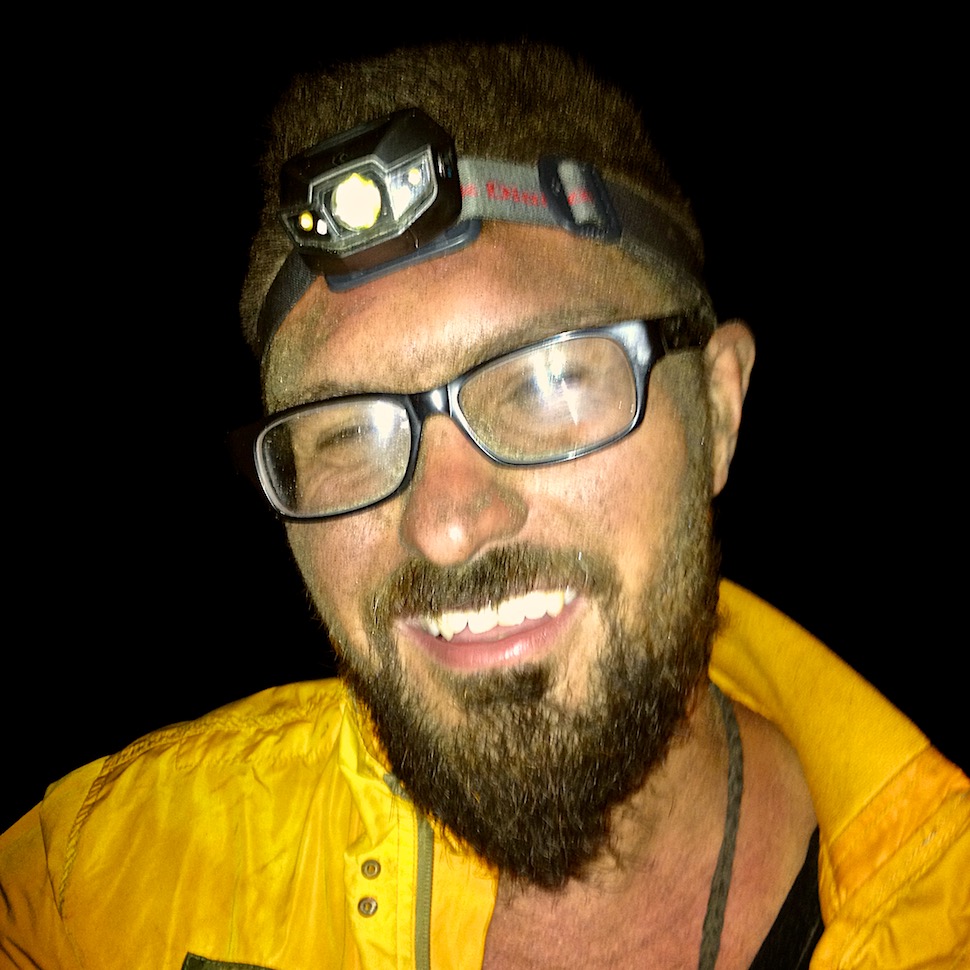
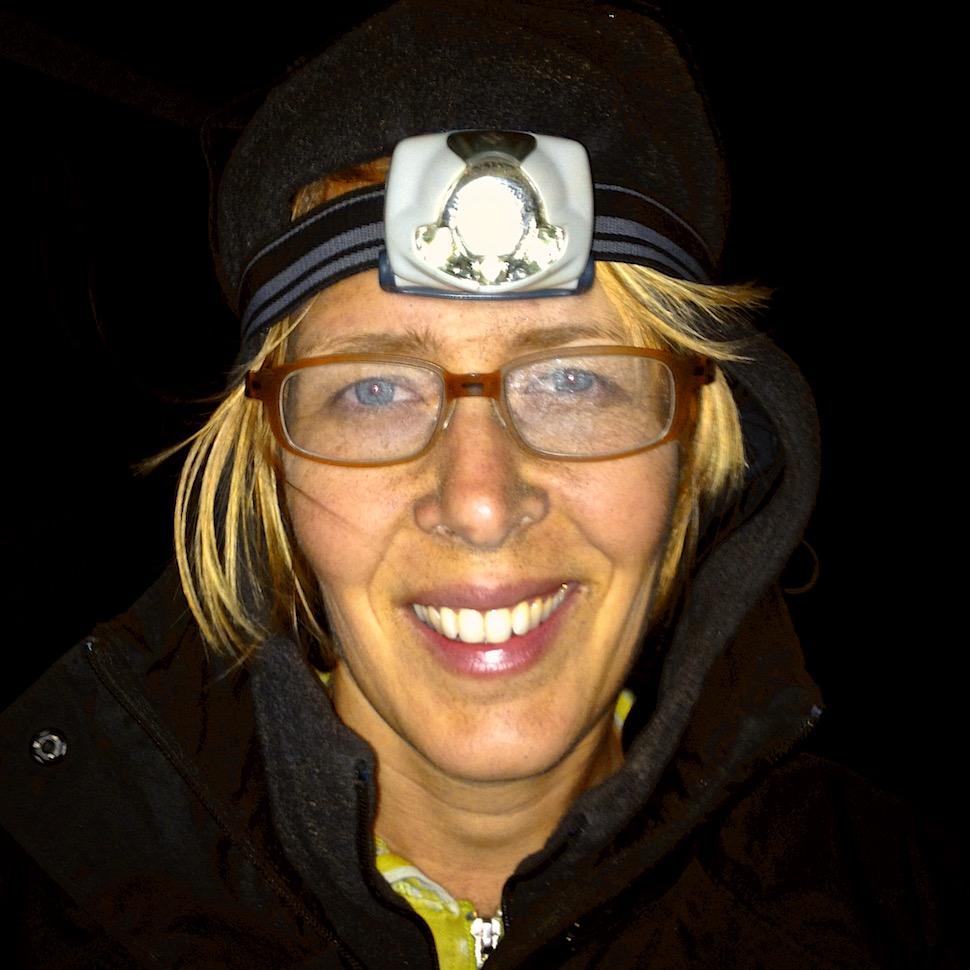
By the time we had finished, it was dark and the wind had washed us all from head to toe with sand. We learned our lesson. Or ‘lessons’ to be precise… For Sarah, it was ‘not going into loose sand again’ and for Erdem it was ‘keeping the hi-lift jack well greased’!
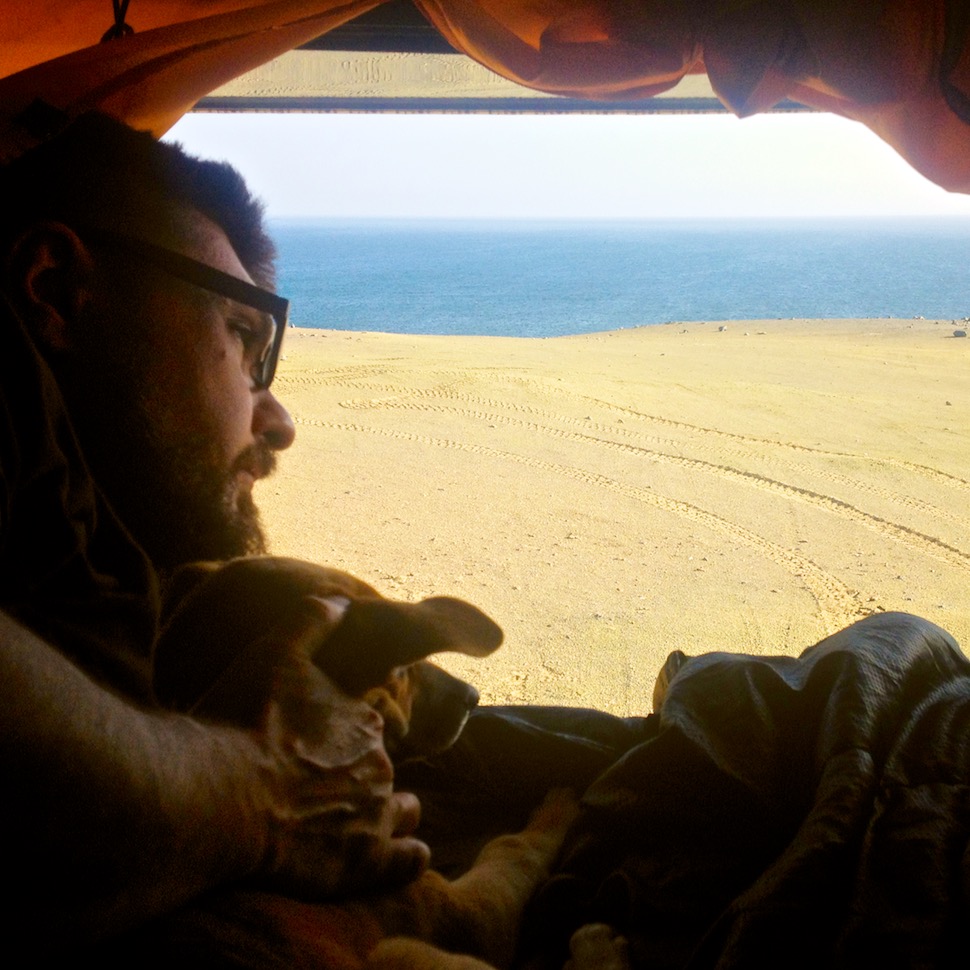
Waking up to sunshine on a beautiful morning is a curious thing. Somehow, magically, it feels like the night before is years away. We’re now in Lima camped in a hostel’s courtyard. All around us are hip restaurants, parks, bookstores and high end shopping malls. I’m sure we’ll get back to the wild landscape soon and then all of this is going to feel like history. But we’ll enjoy it for a while.

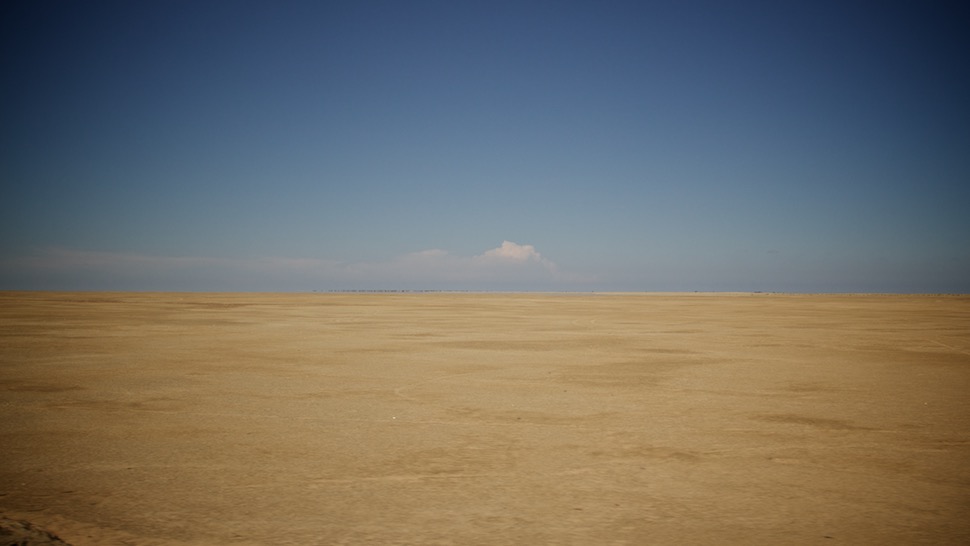
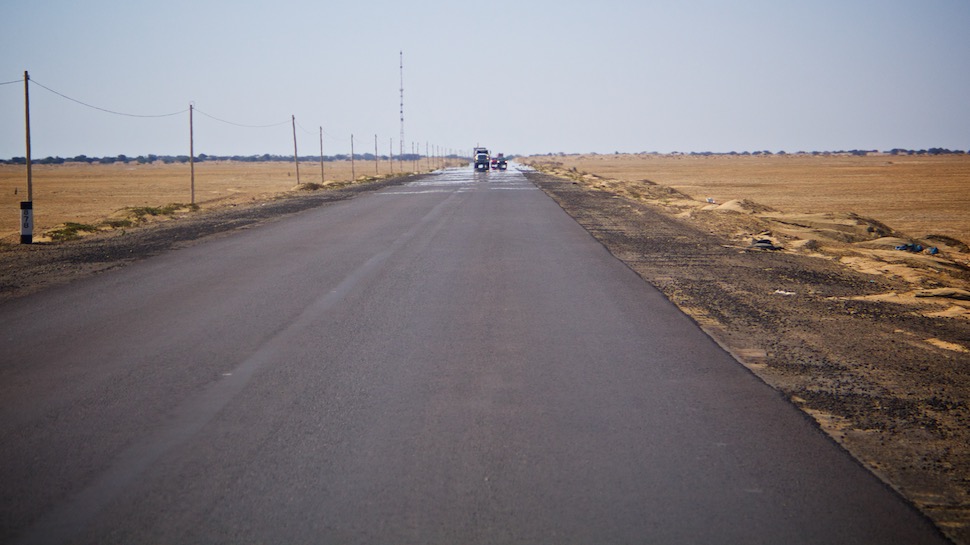
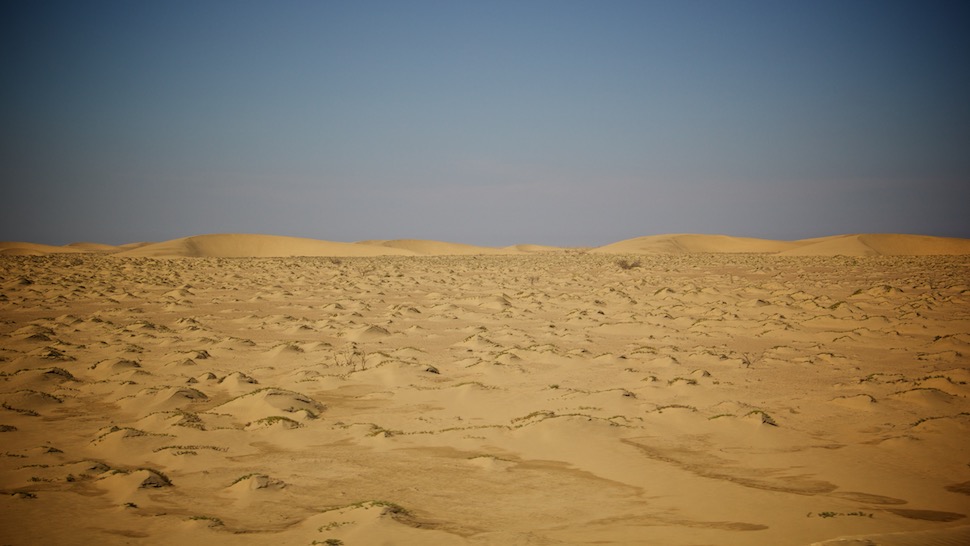
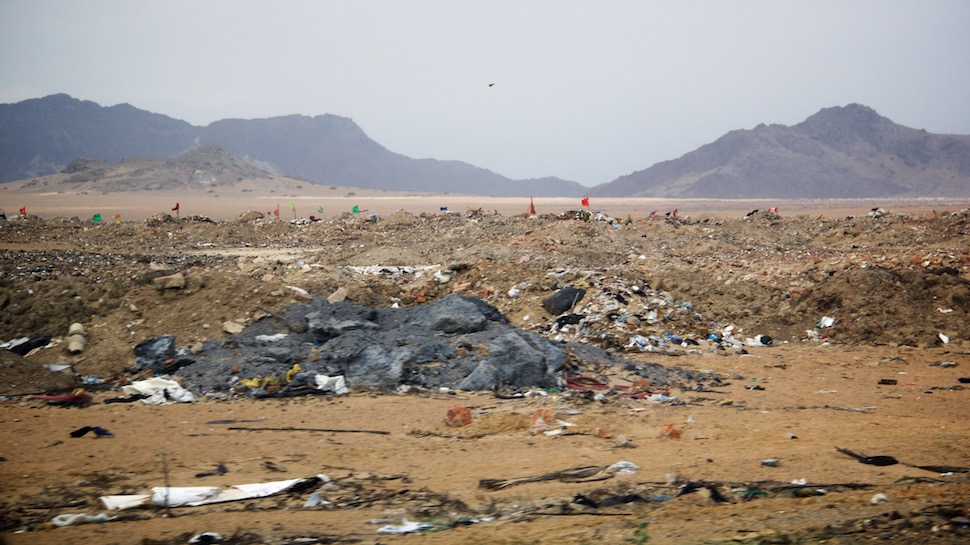
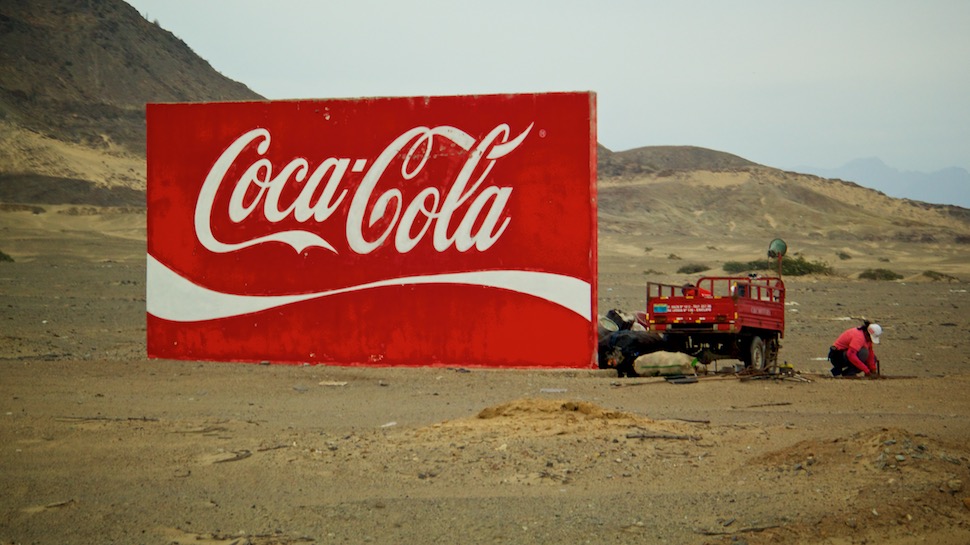
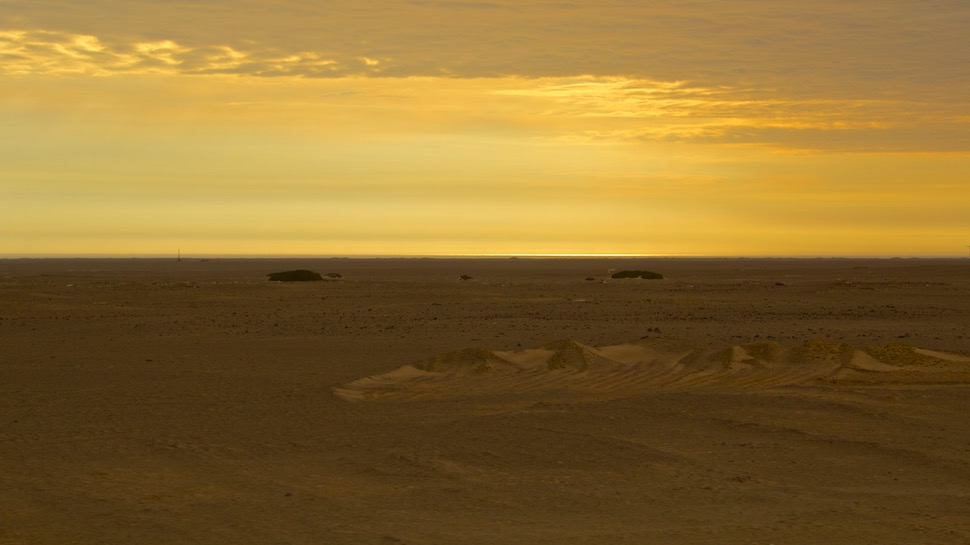
3 Comments
Savas BALABAN
April 20, 2015You are not traveling, you are living on the road!
Erdem Yucel
April 21, 2015It has been a long time indeed. It’s funny how most of us leave to conquer the Americas and spend at least twice as much time as we originally planned for.
Ute + Volker
April 23, 2015We always were wondering why we have the hi-jack with us. Up to now it was only helpful to lift up a roof at Pequeno Paraiso. But now we know what we might to have to use it for one day. Greetings from Cuenca